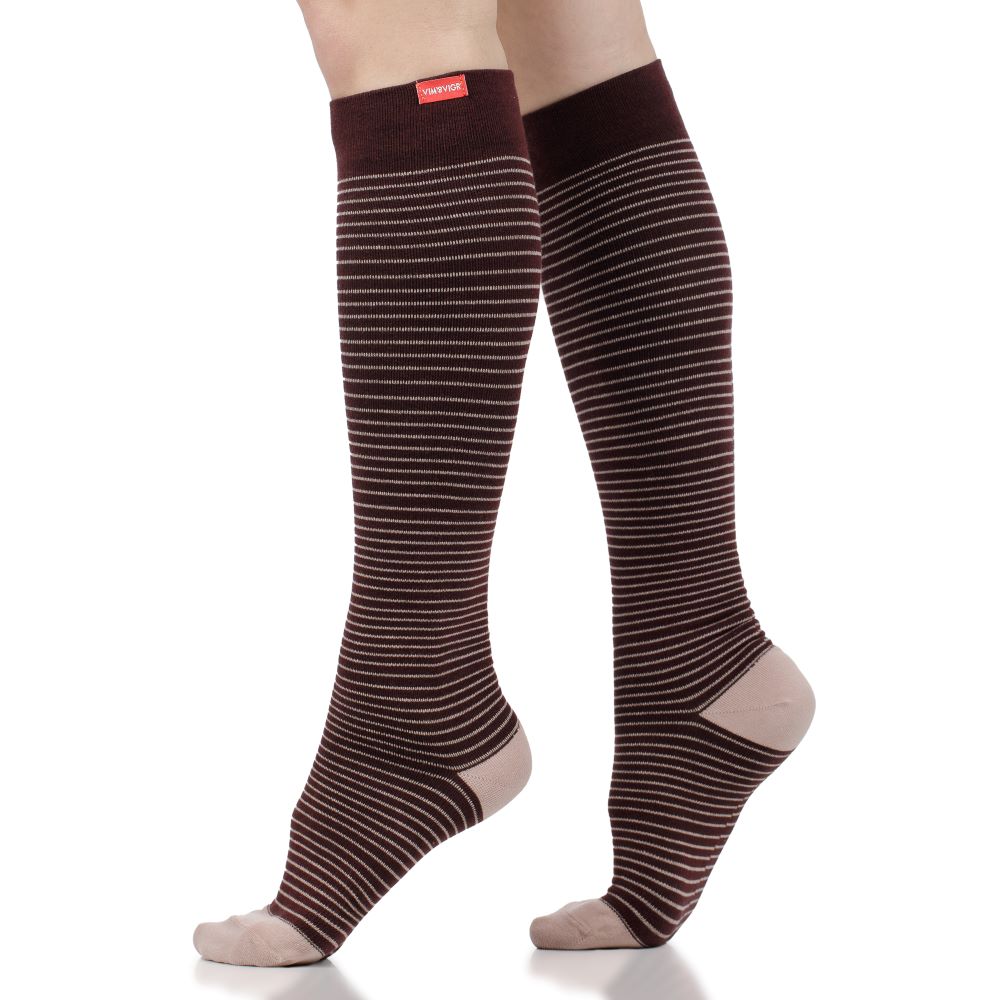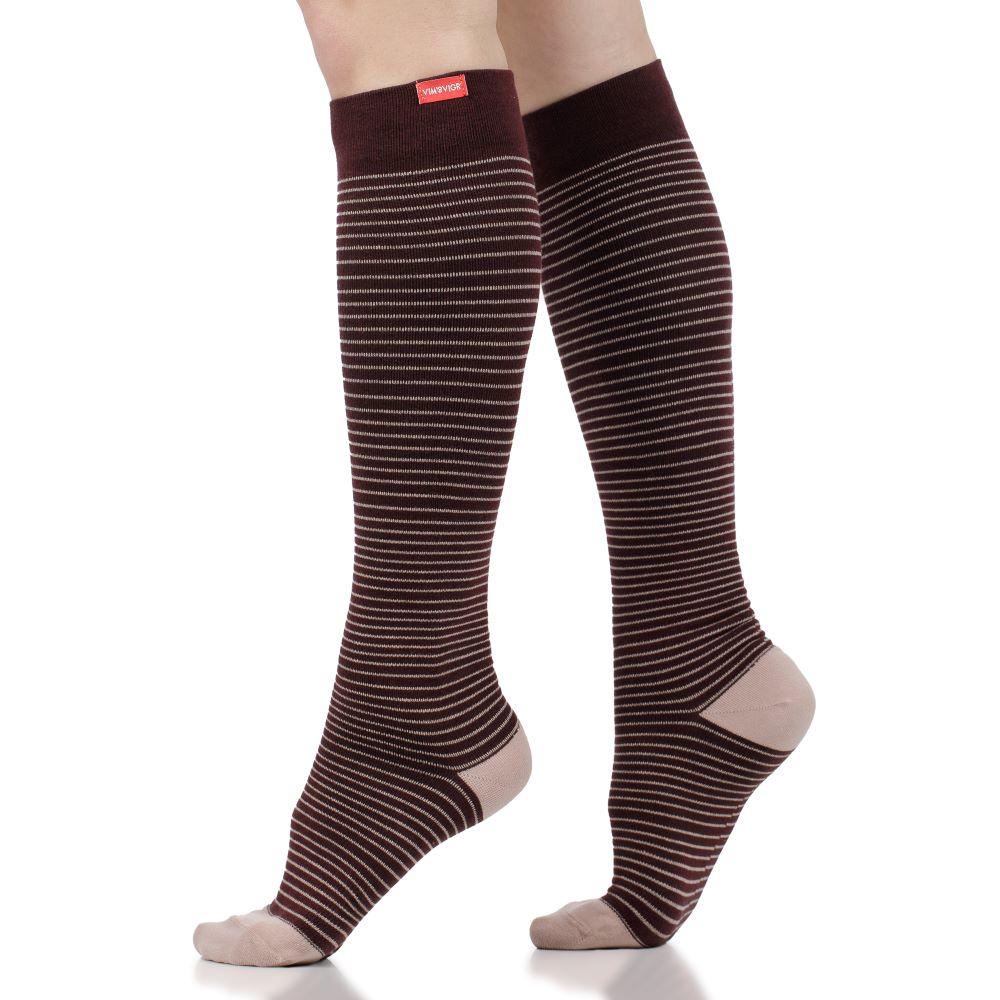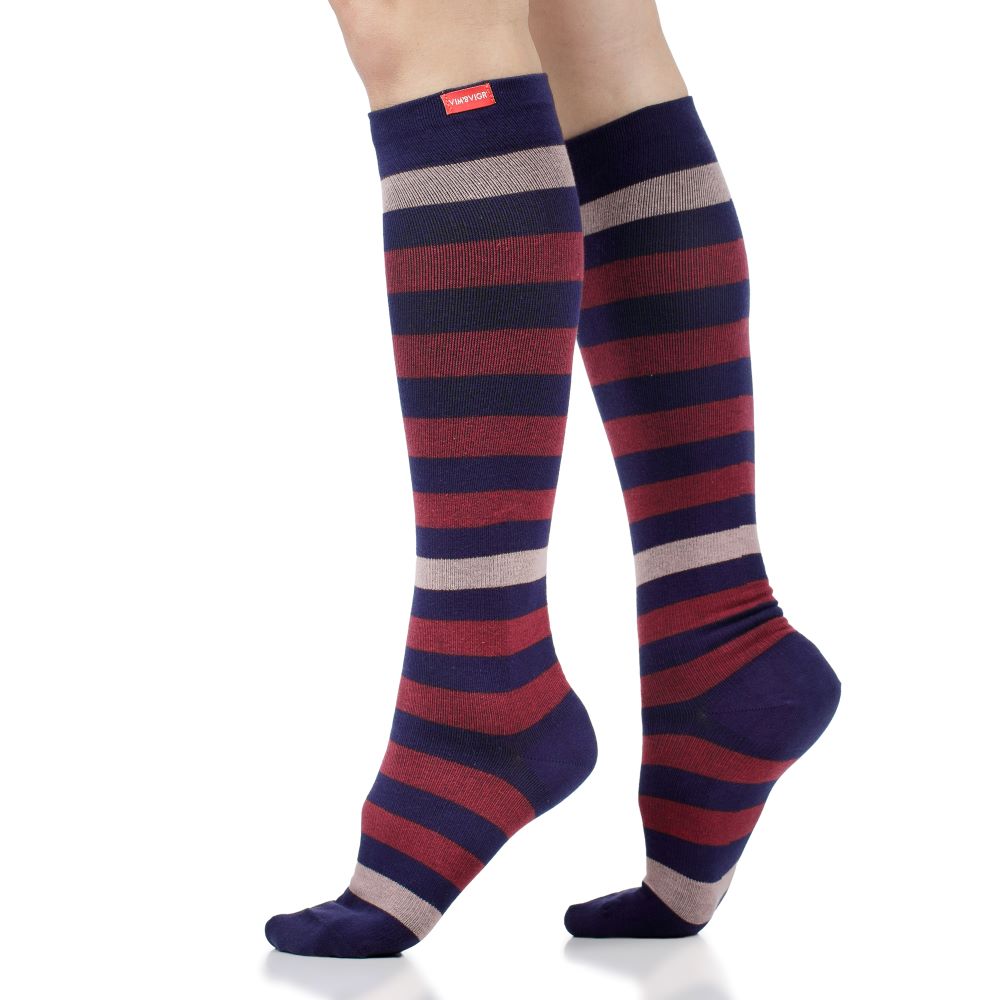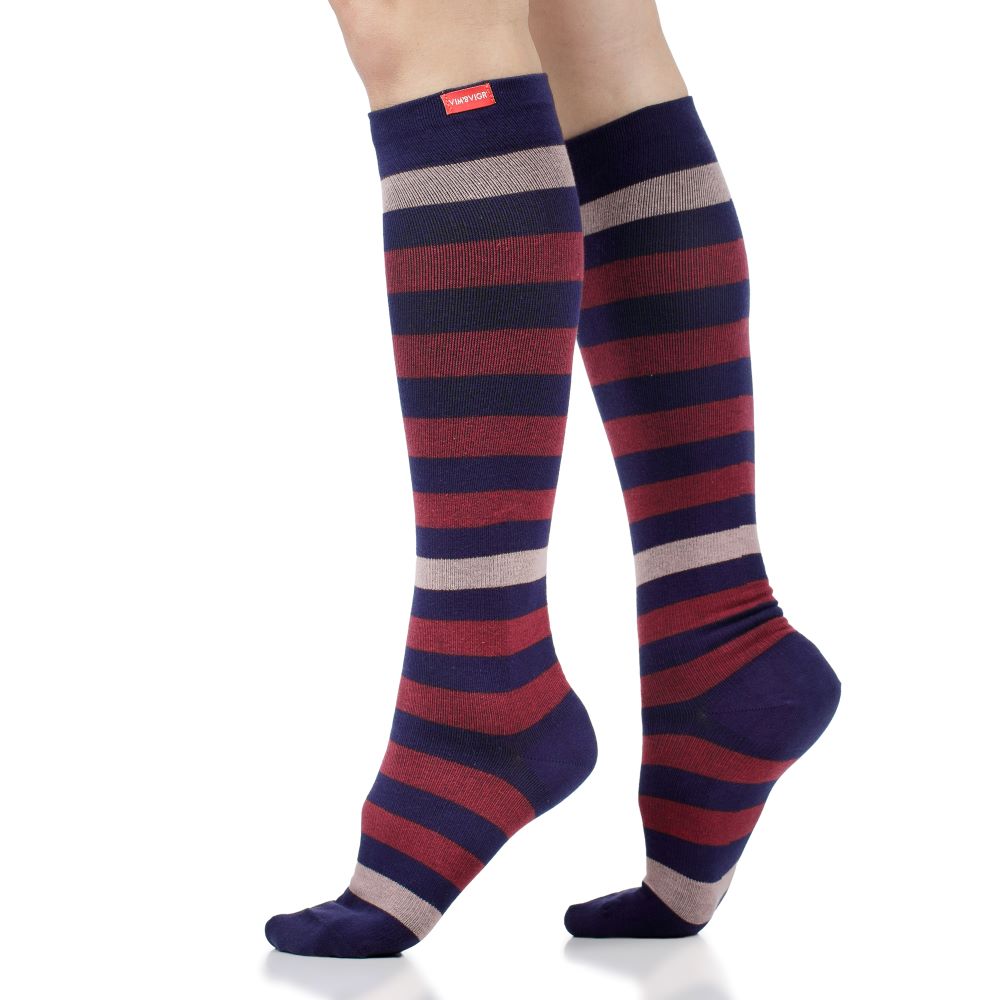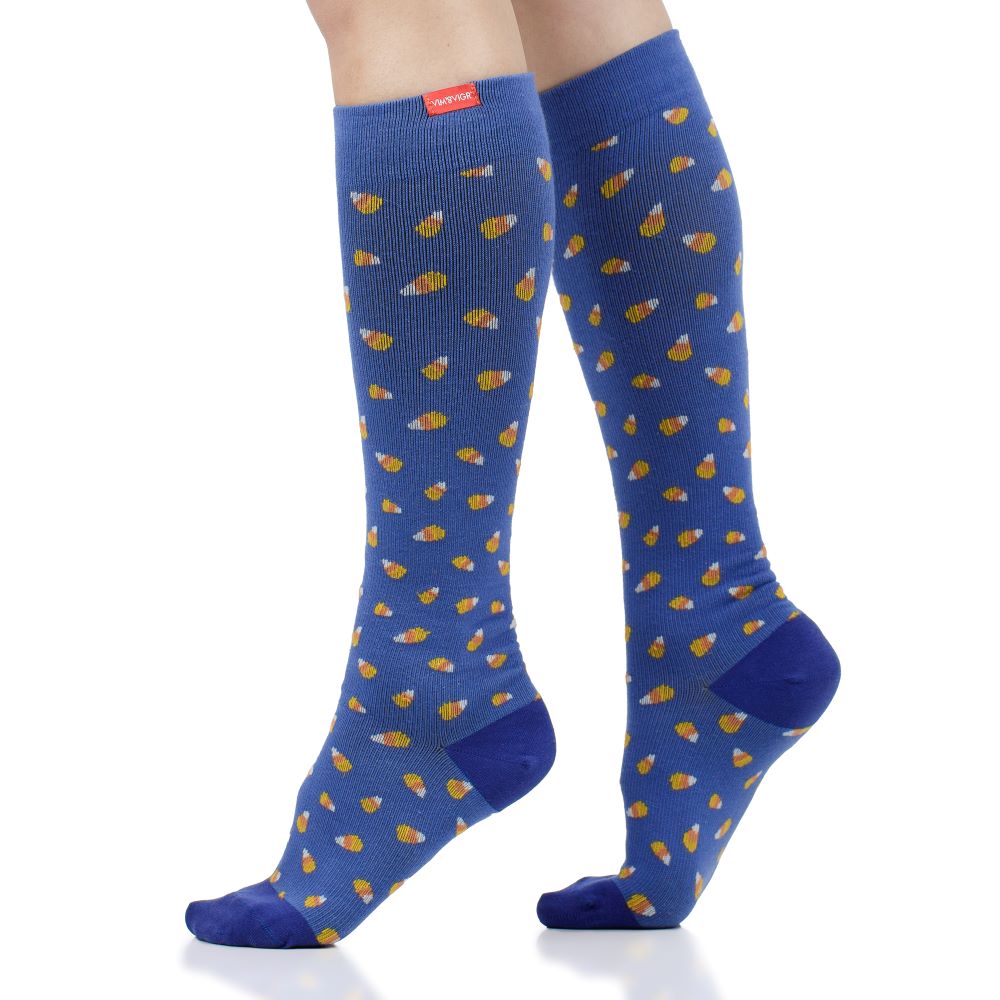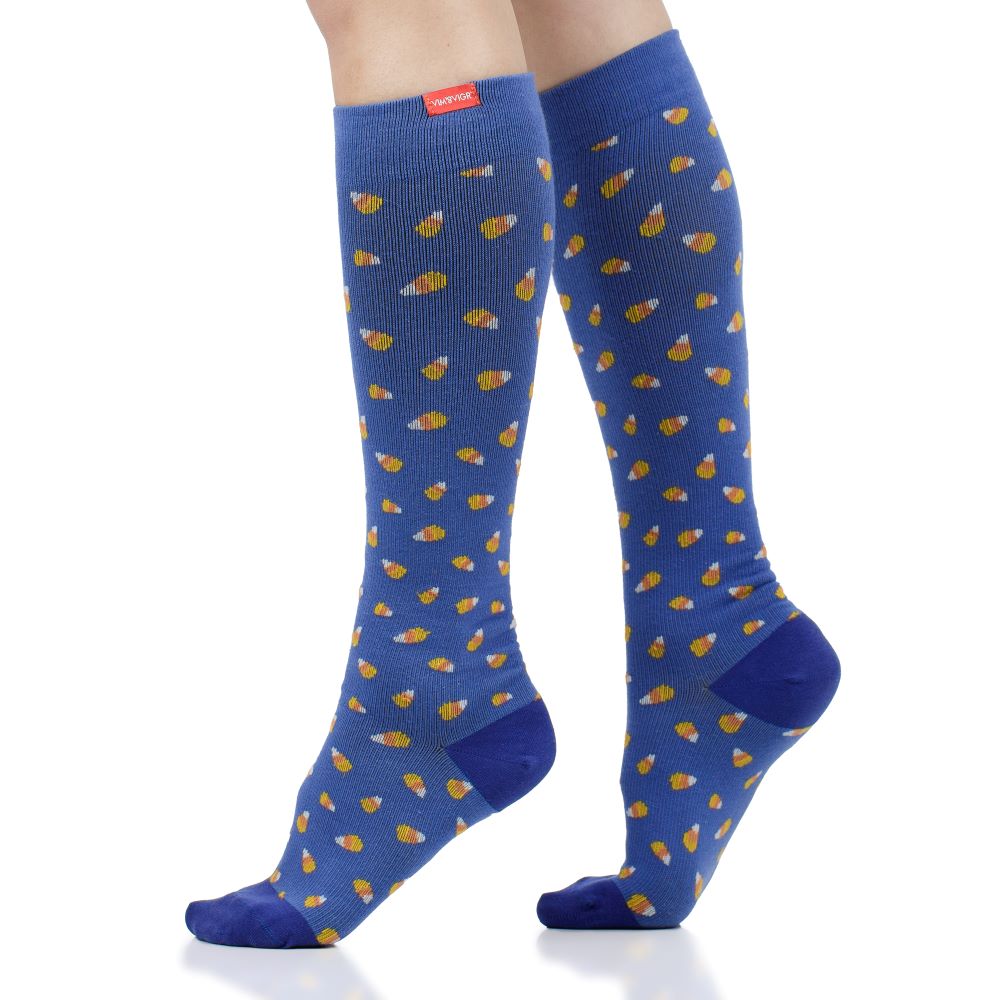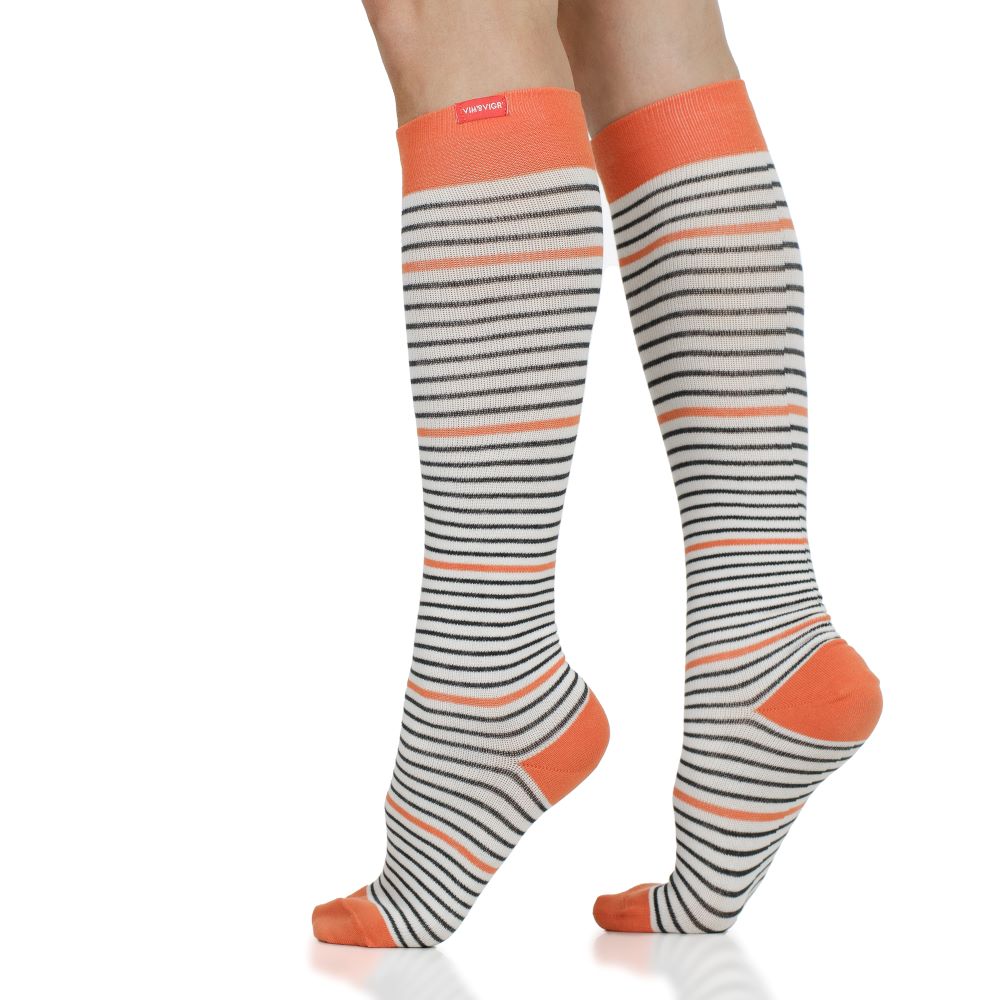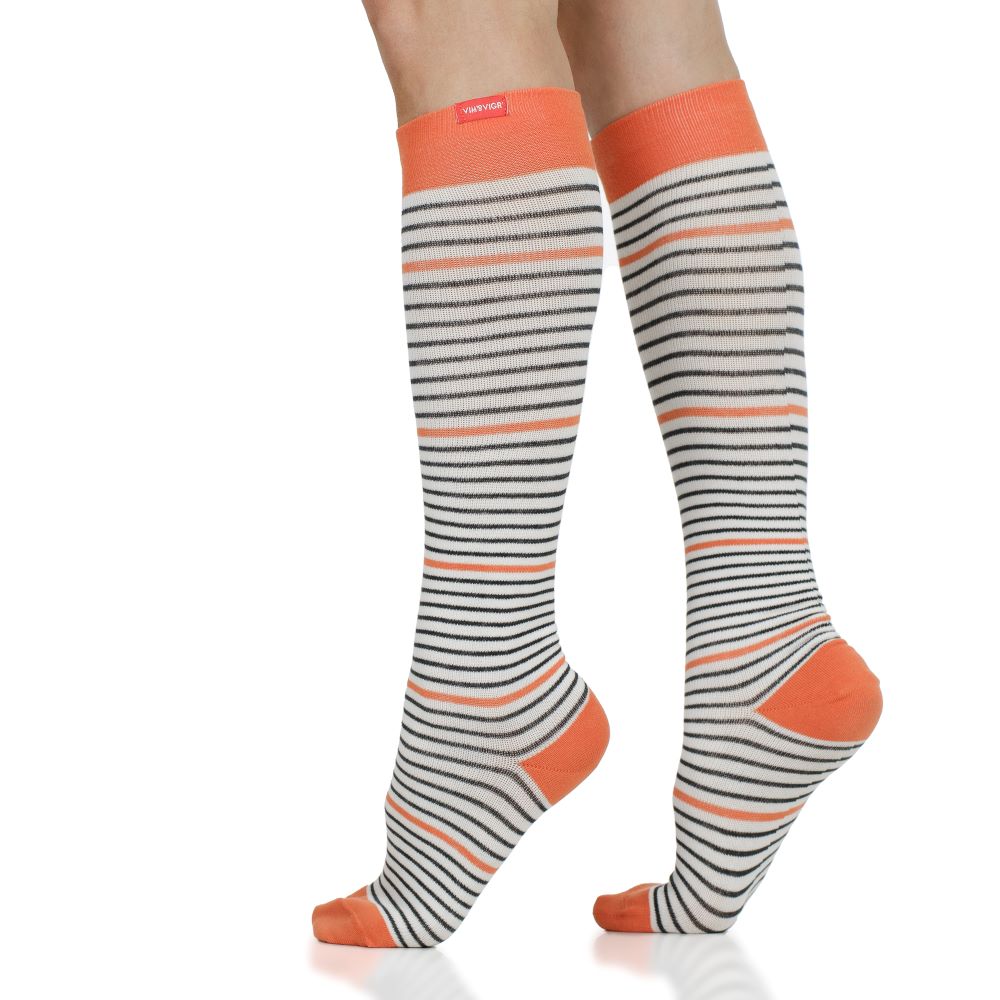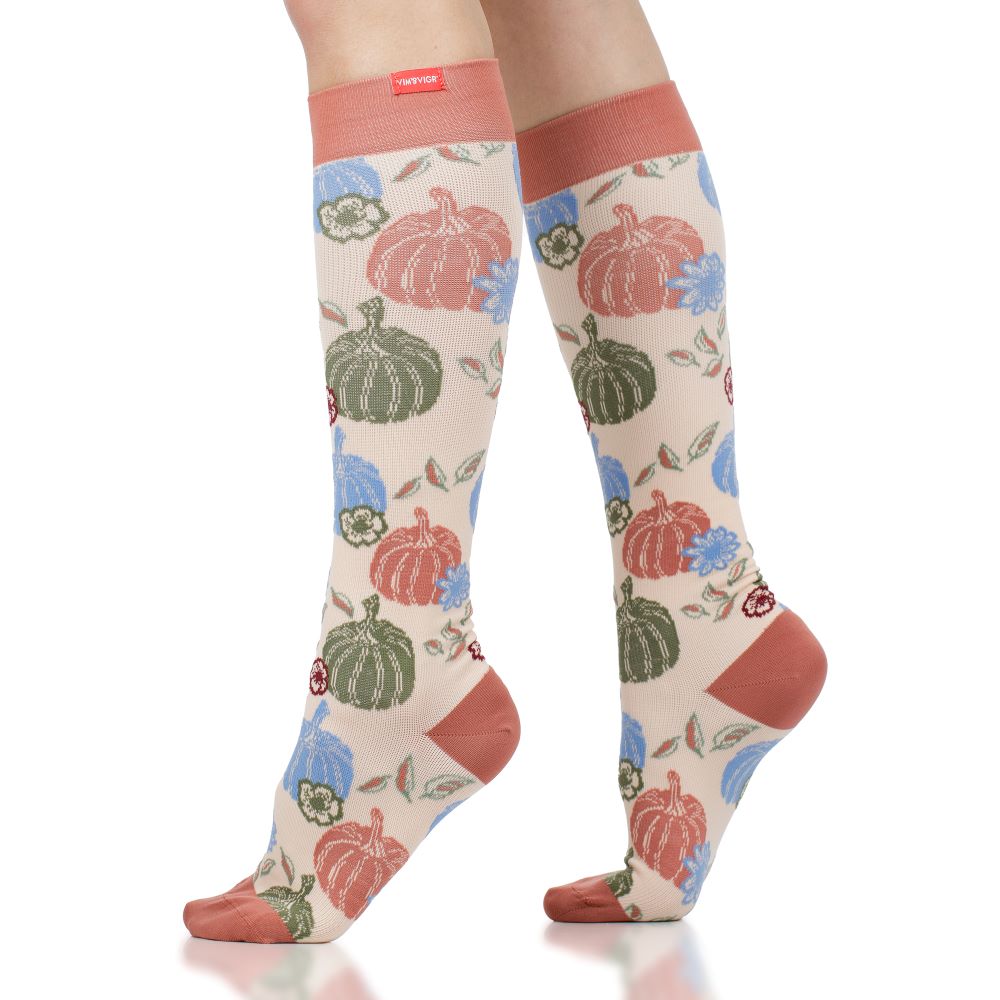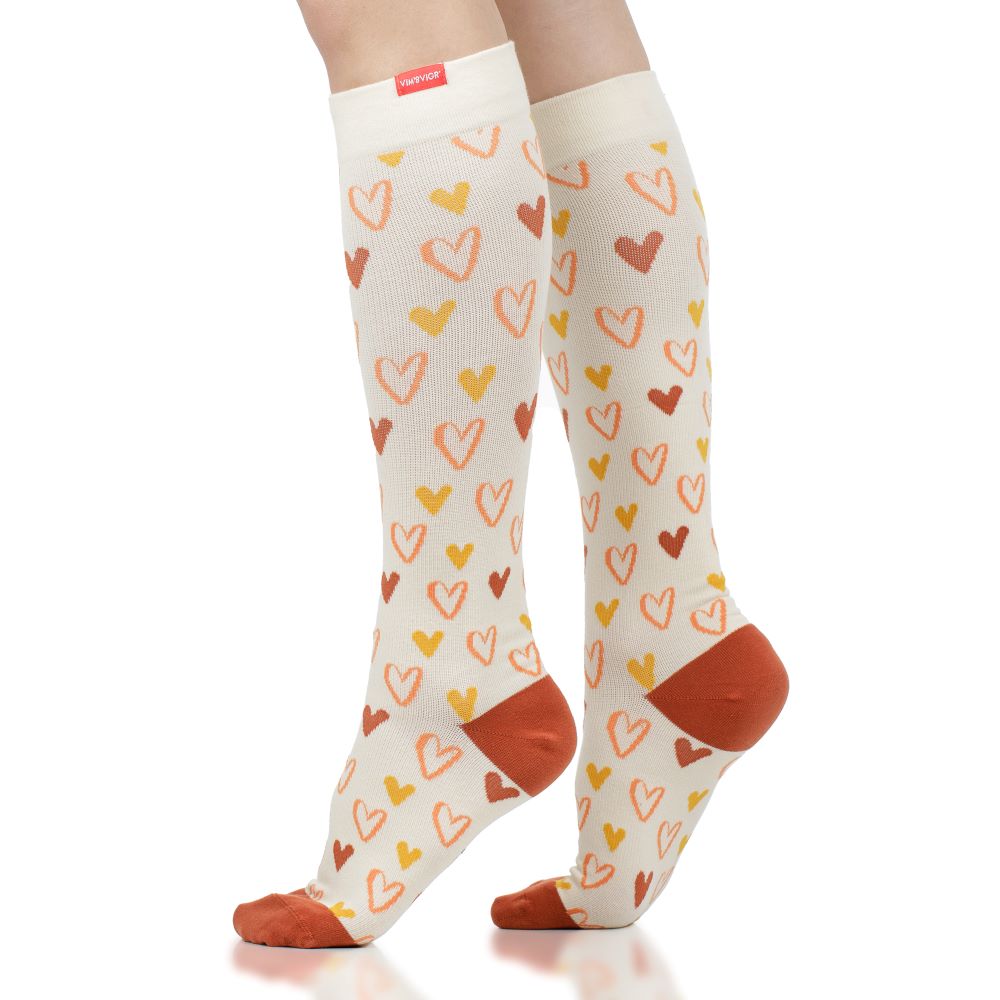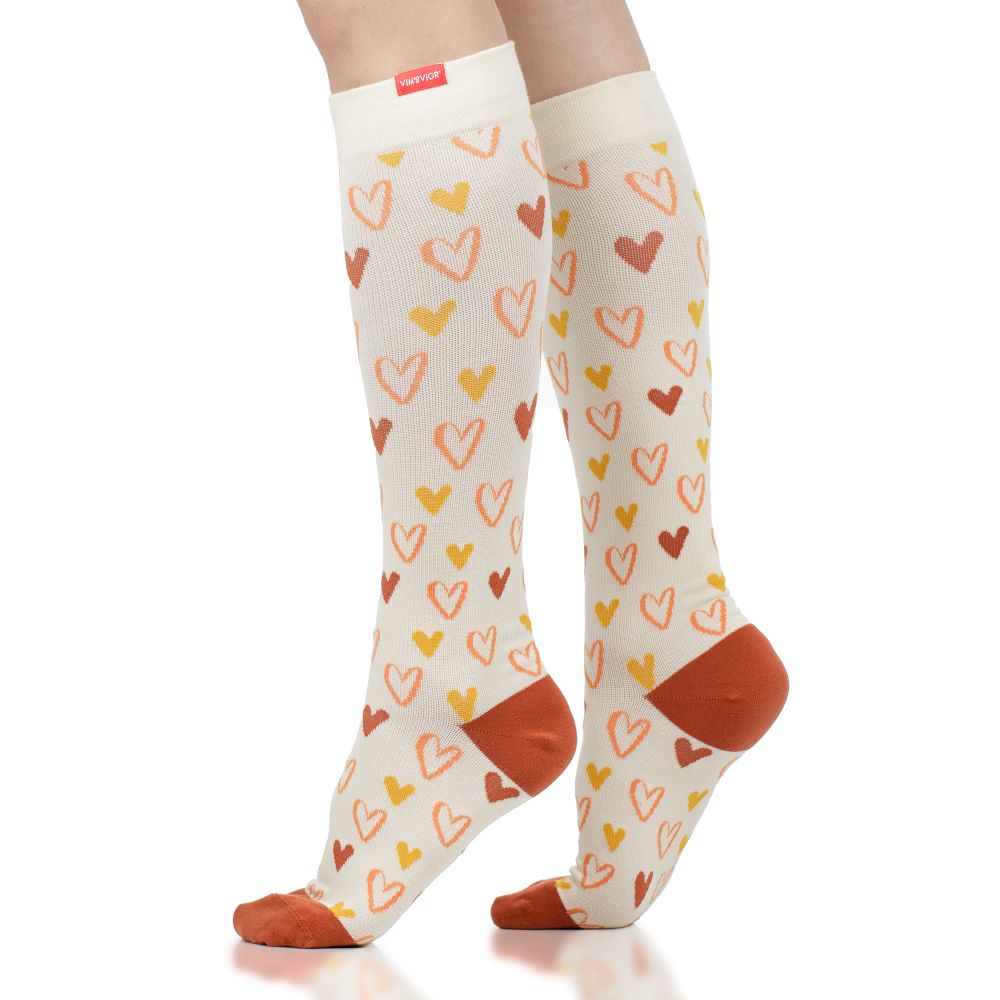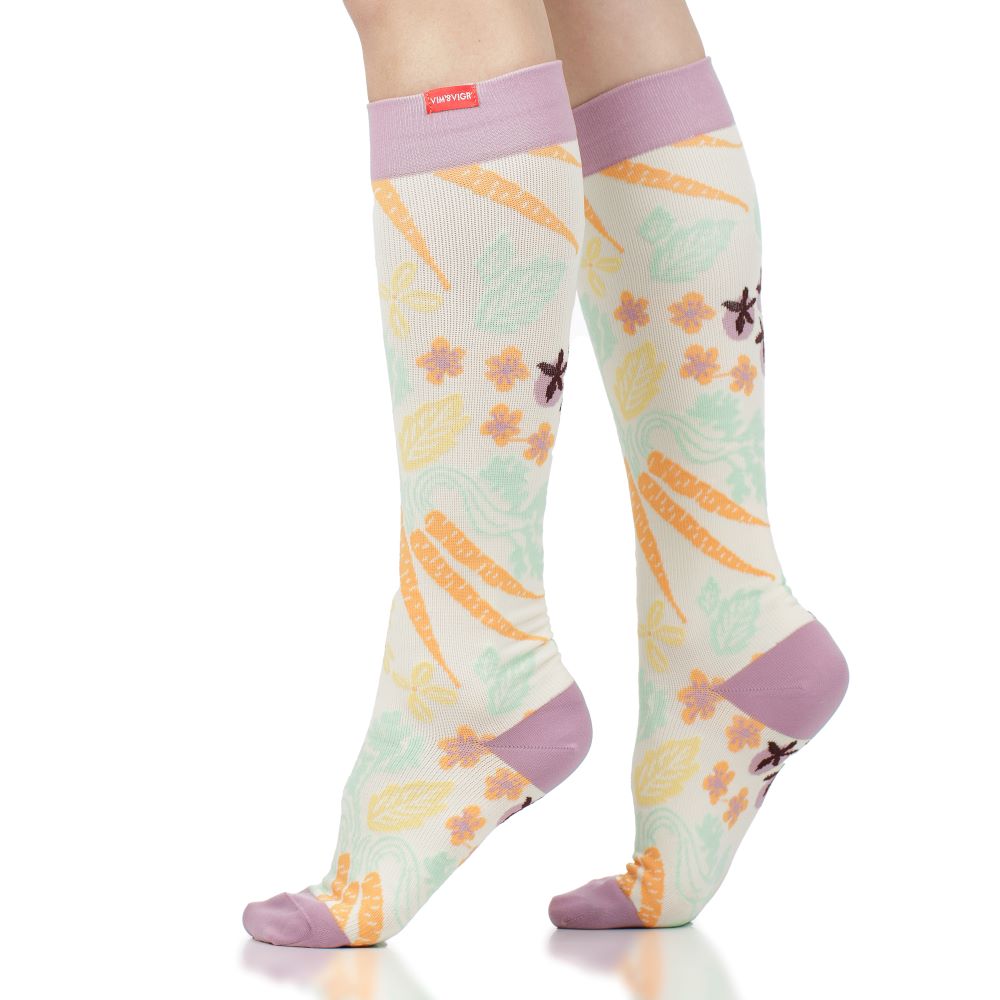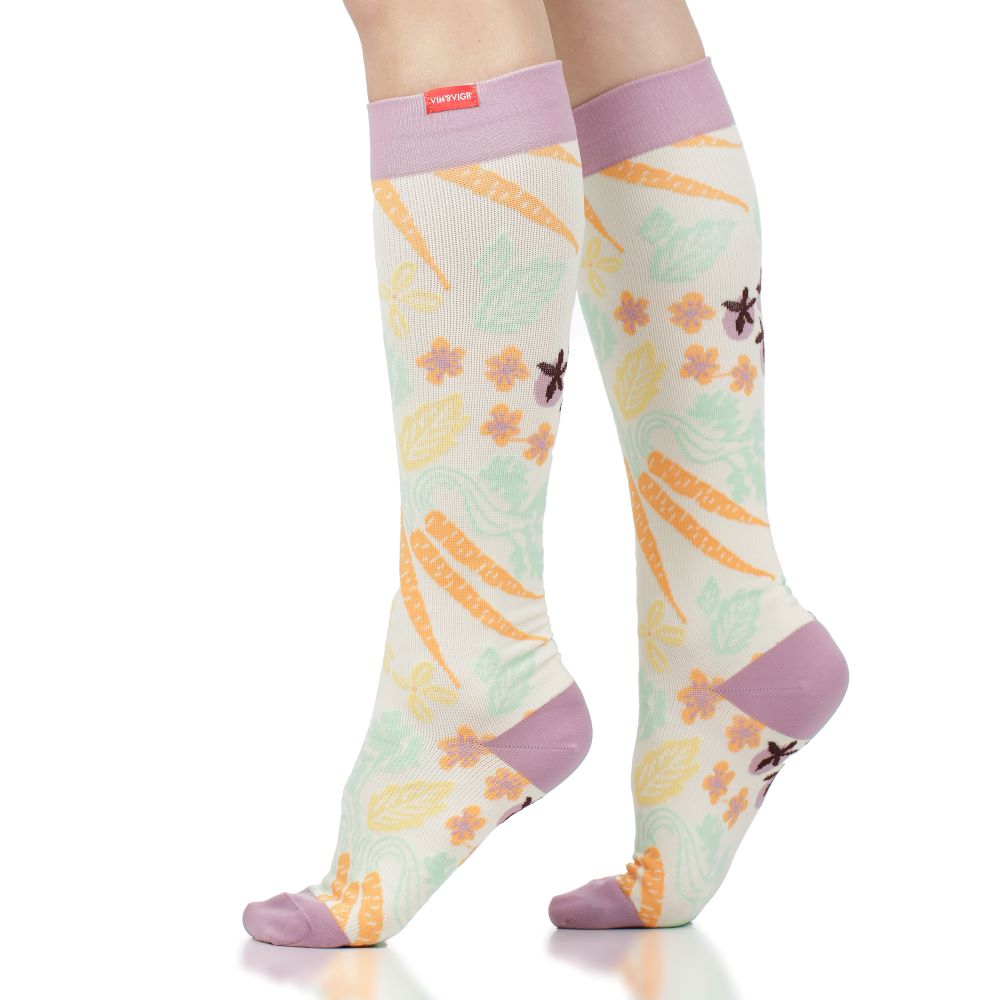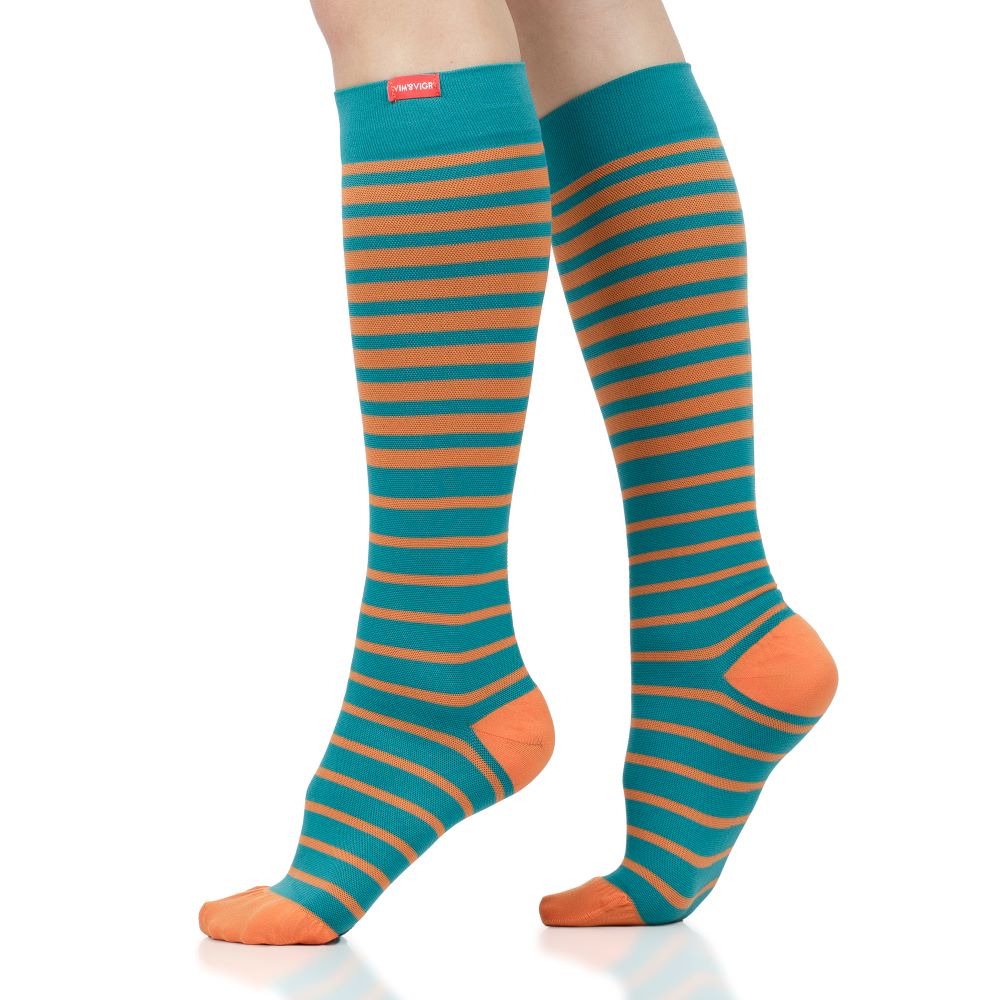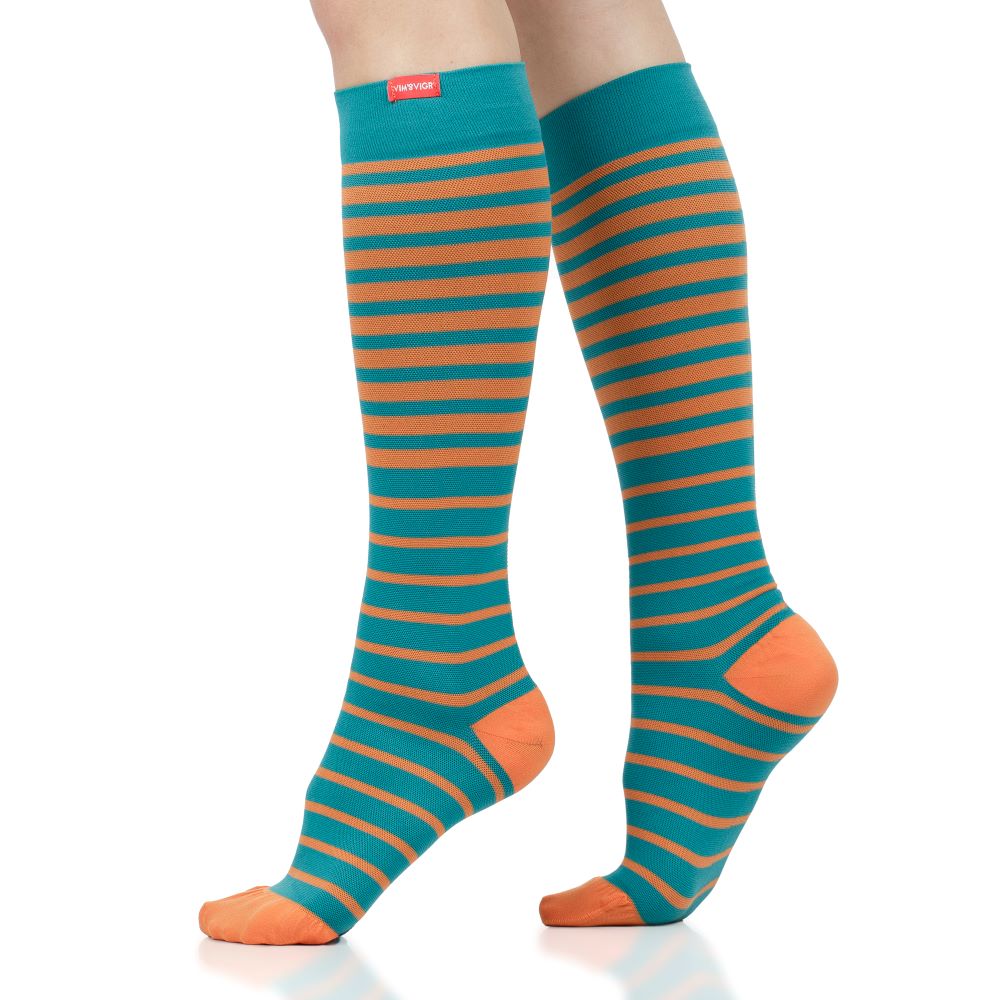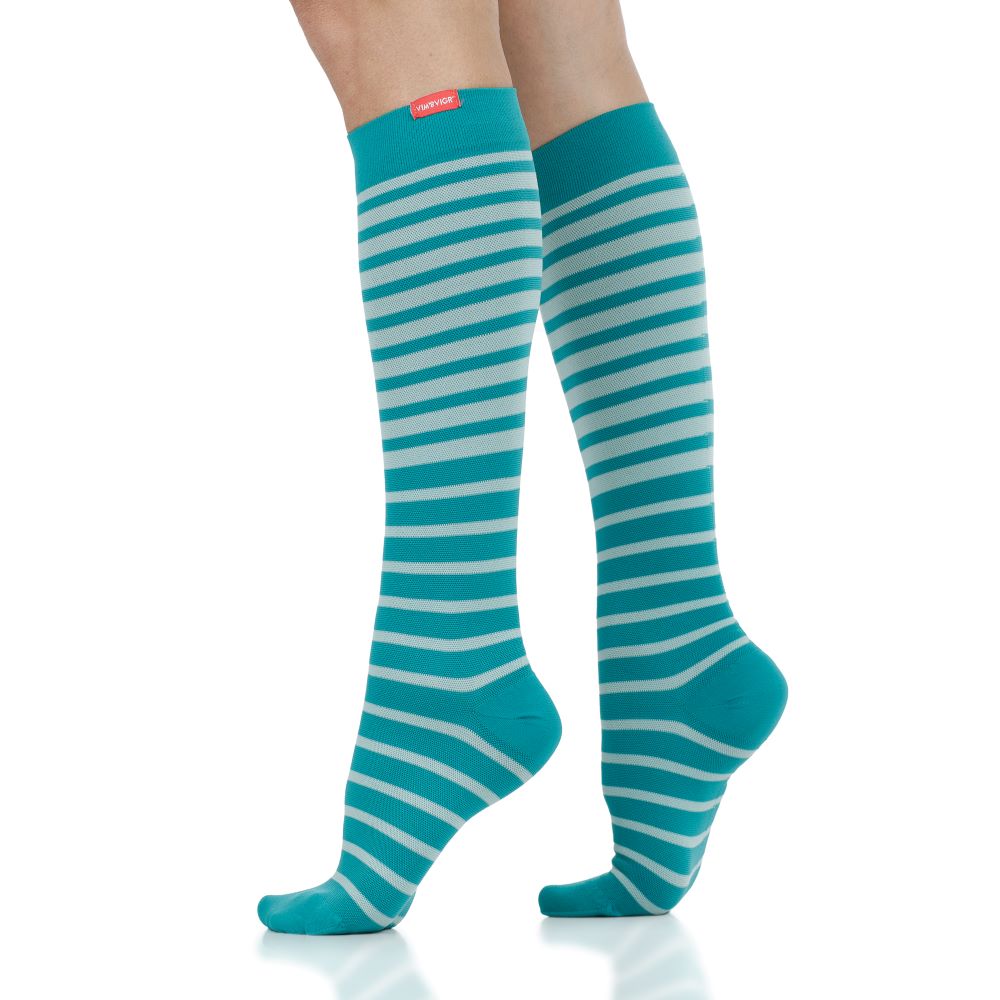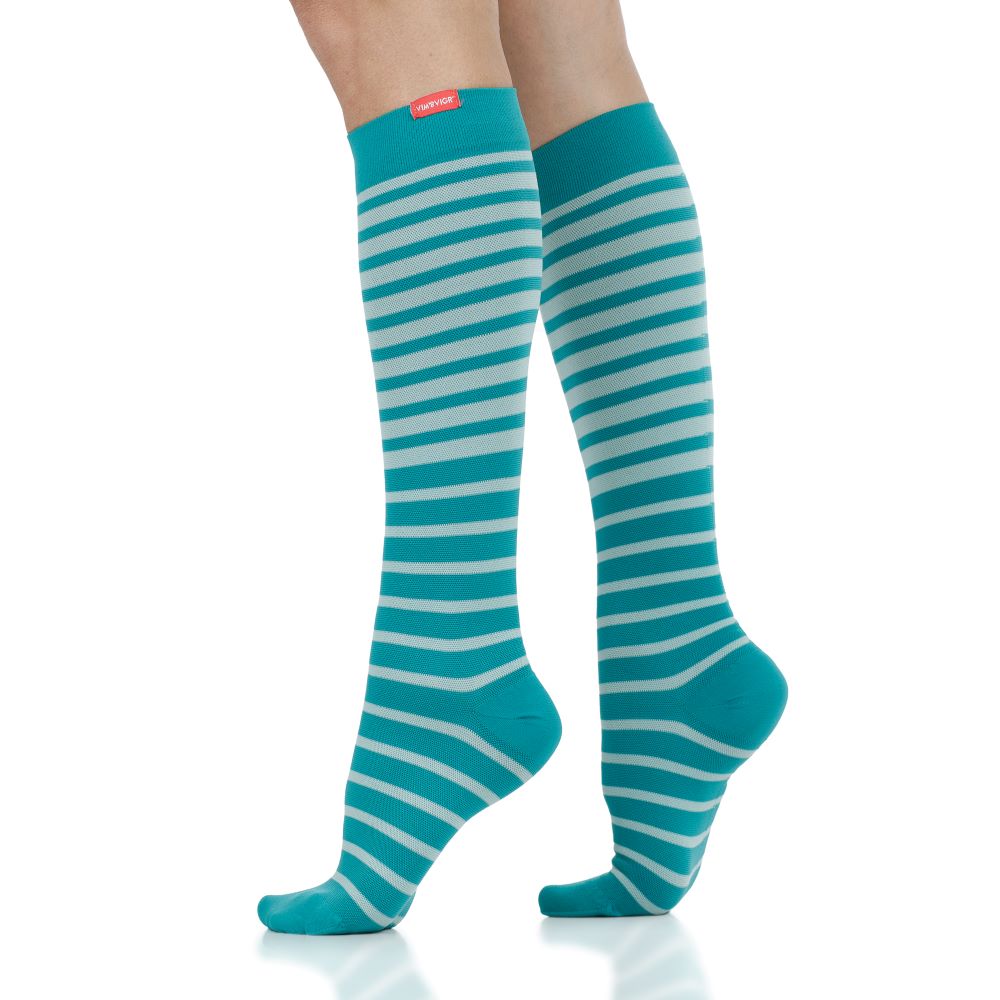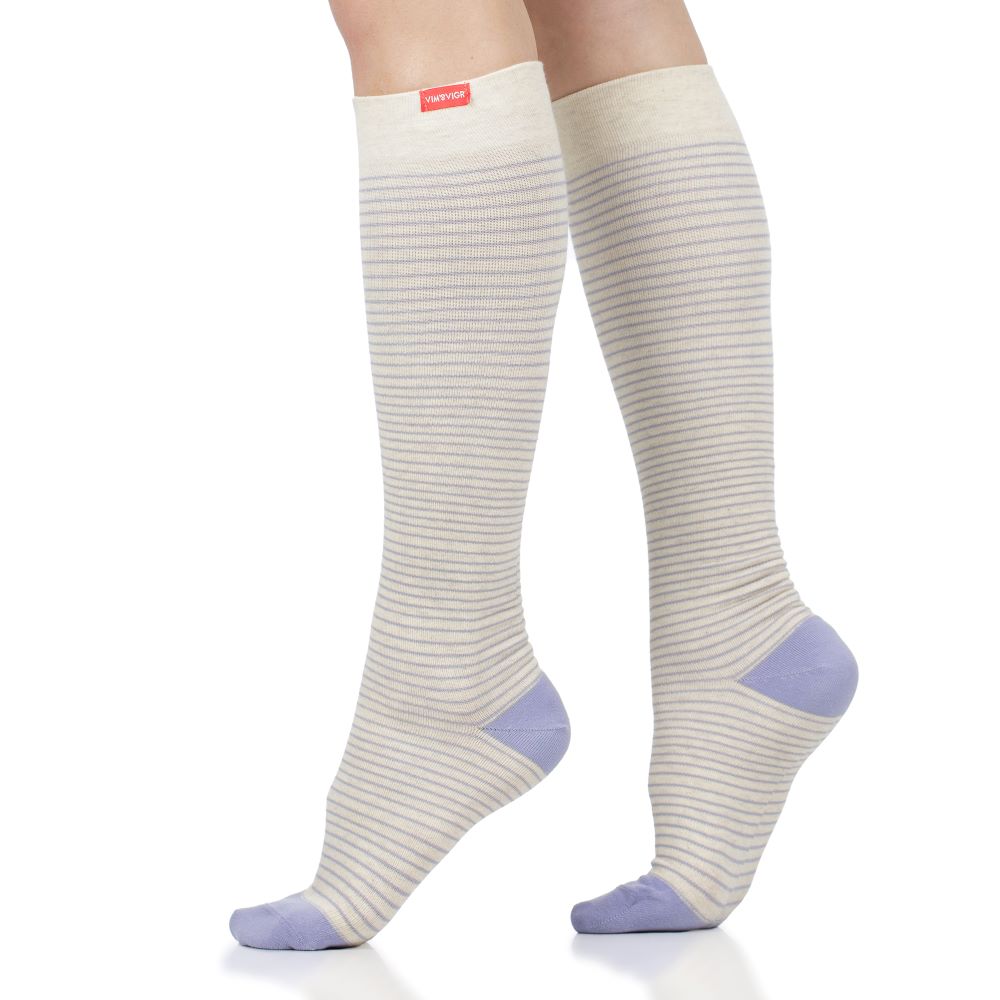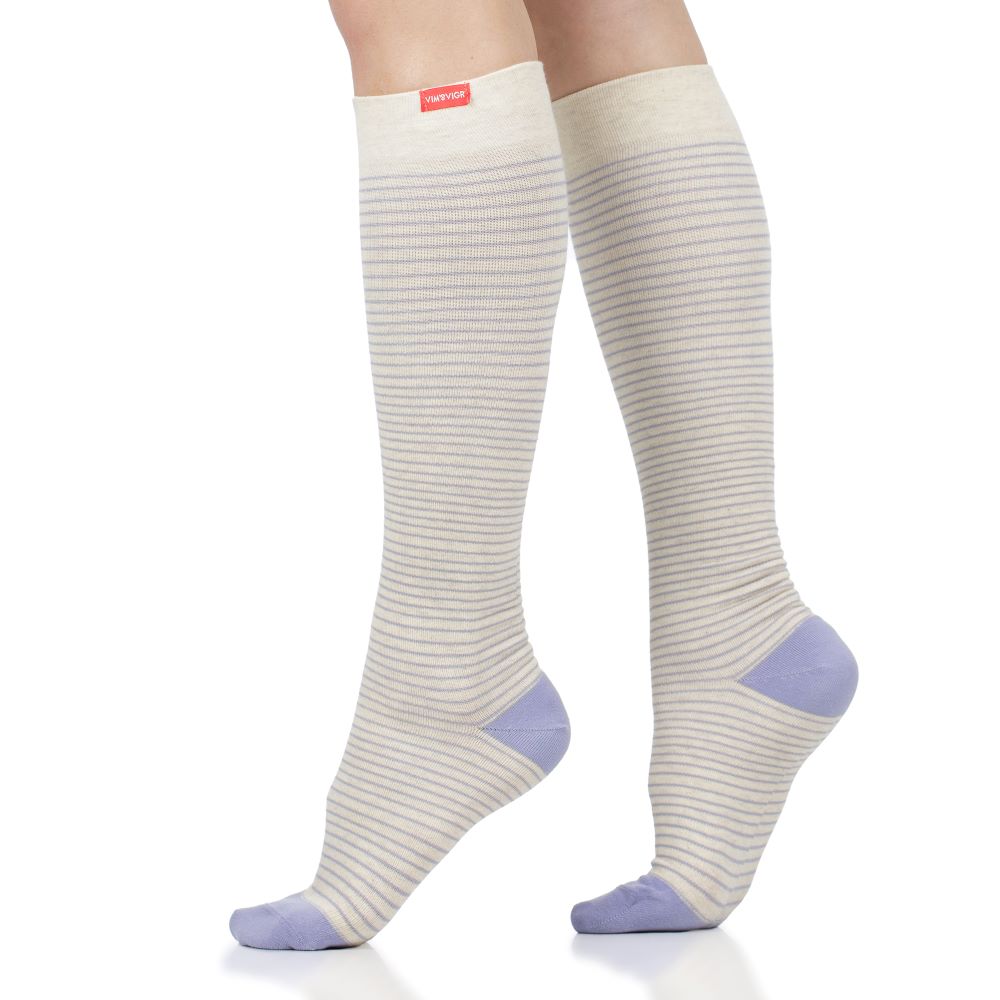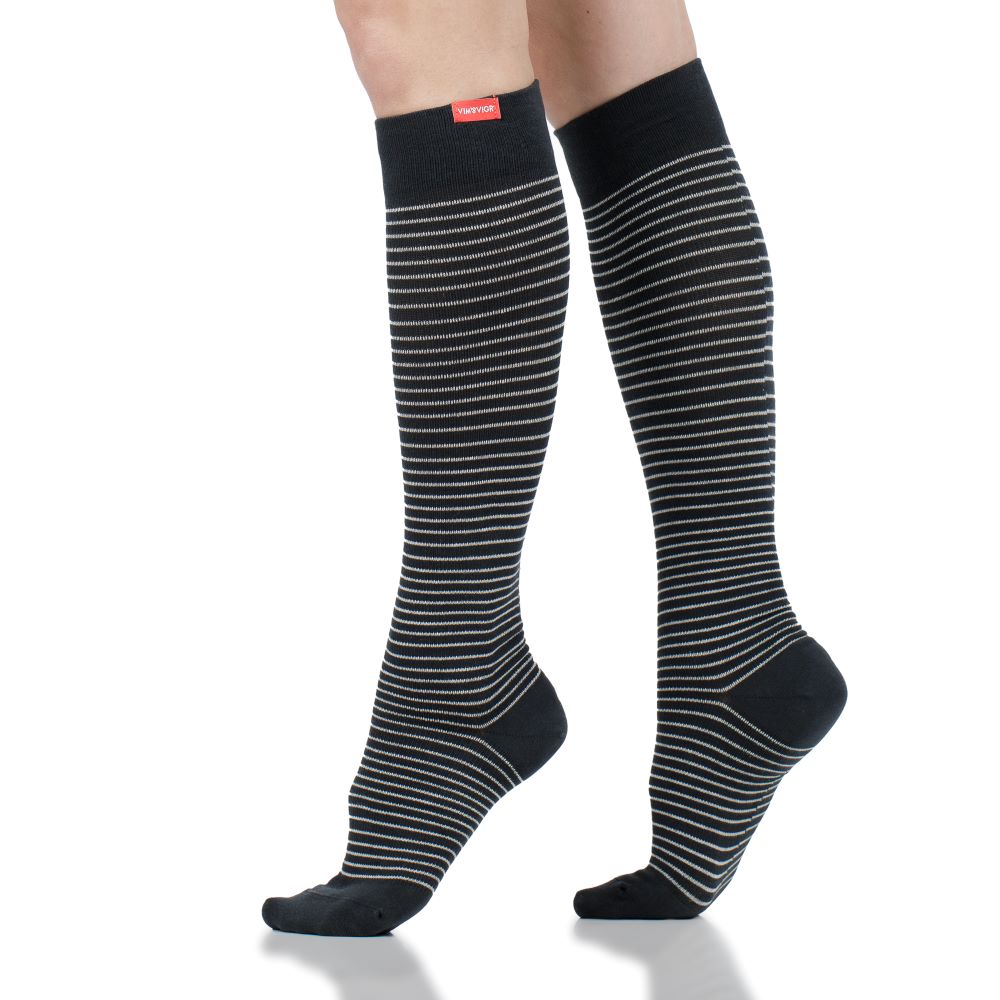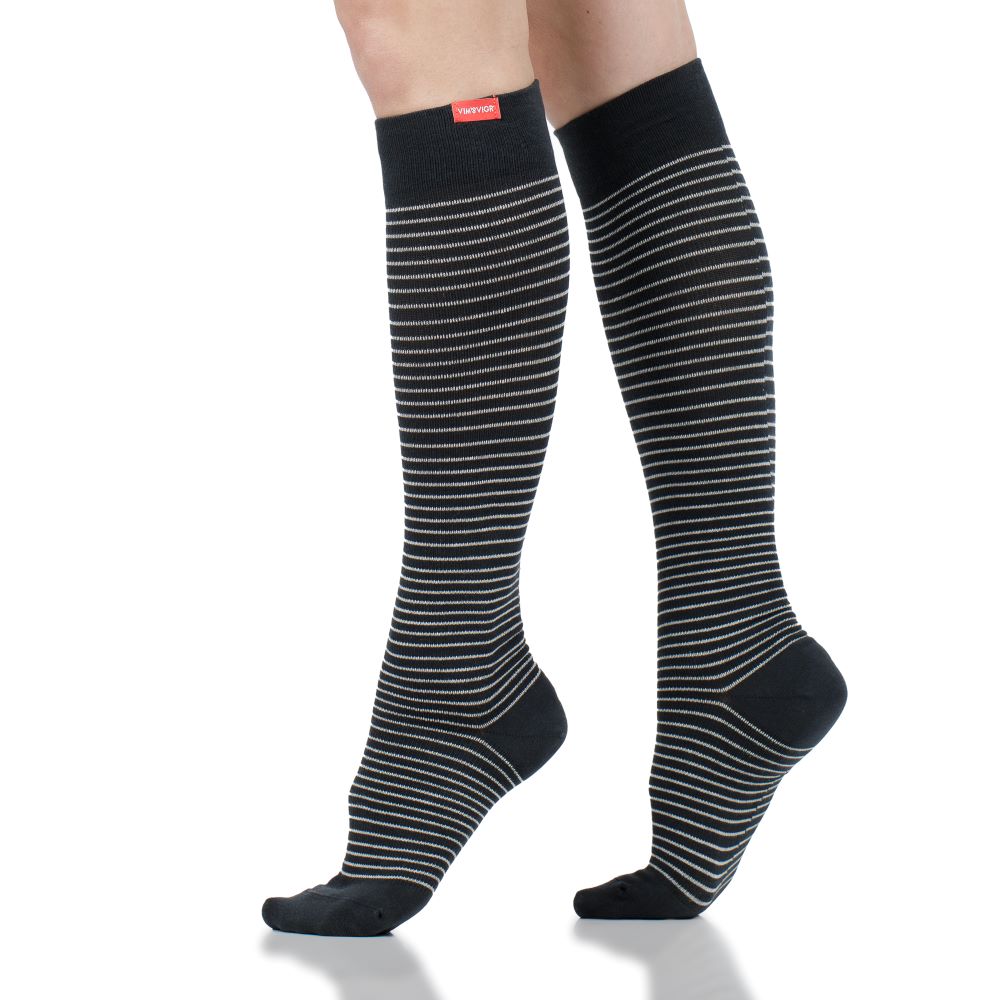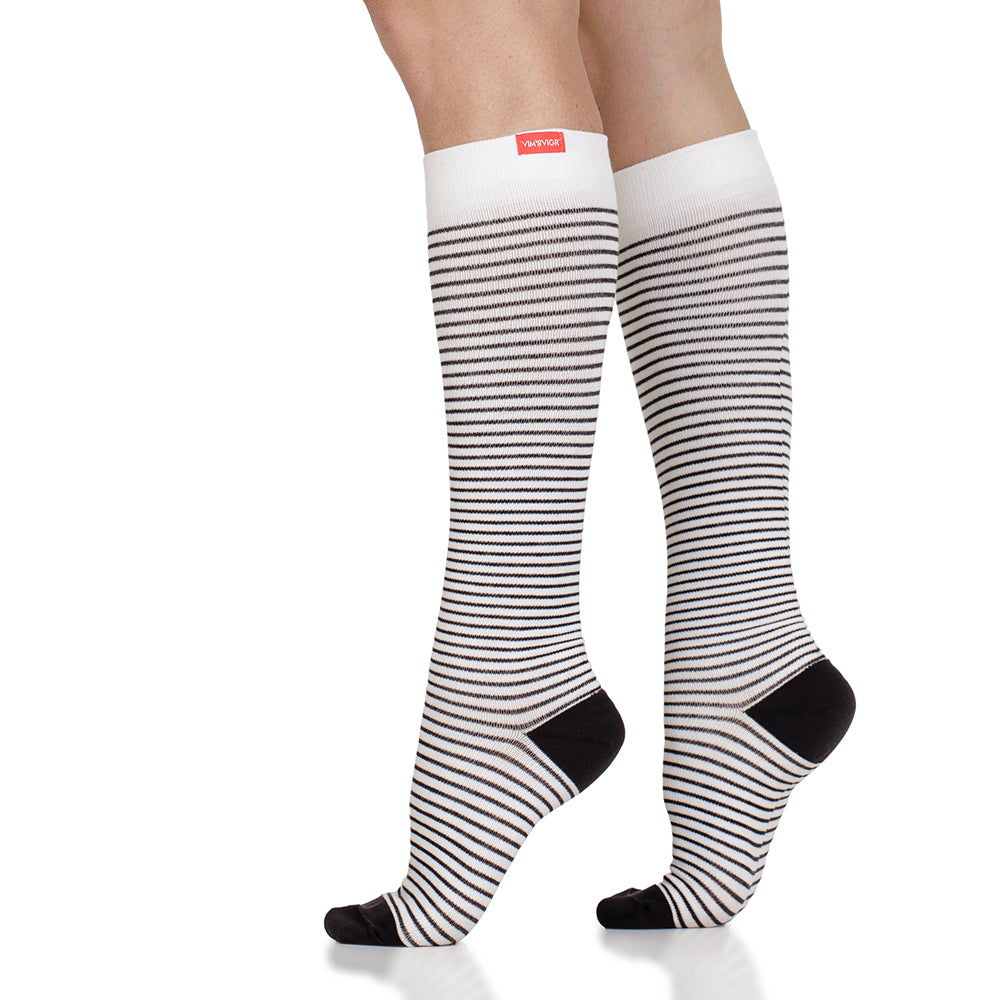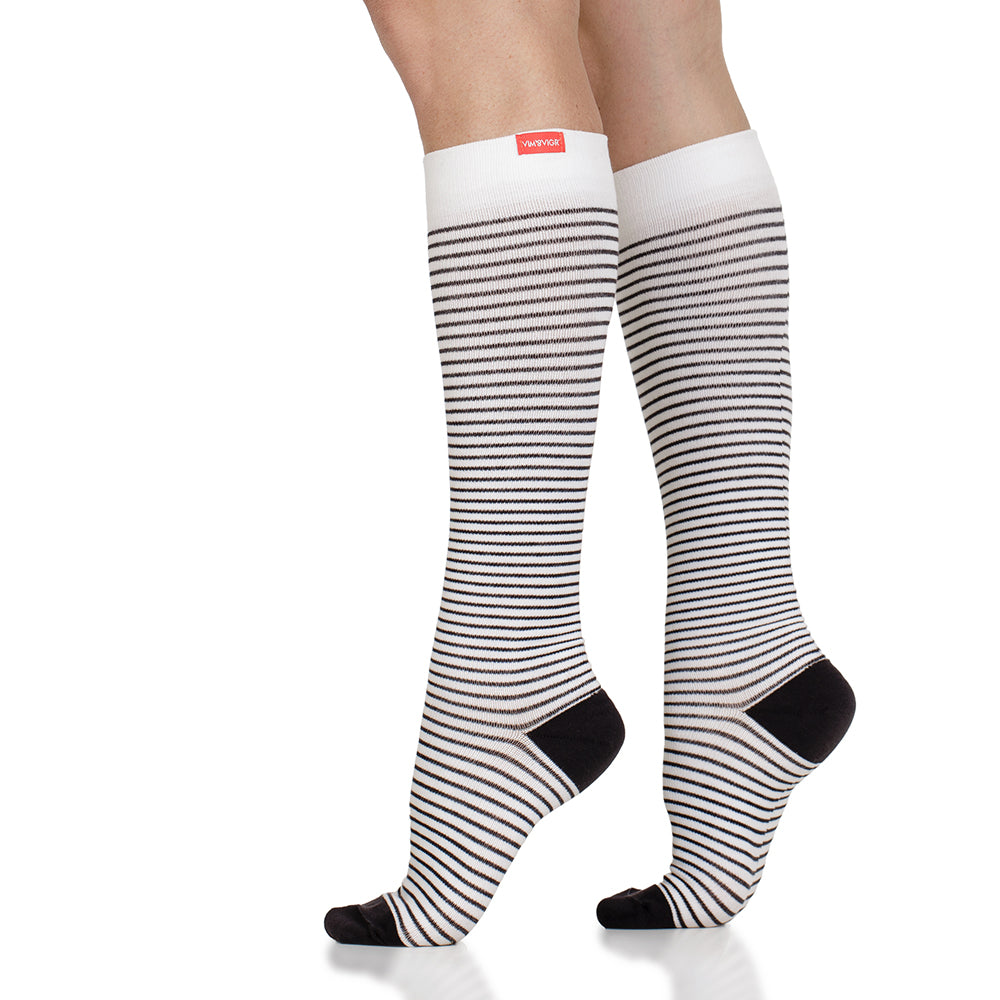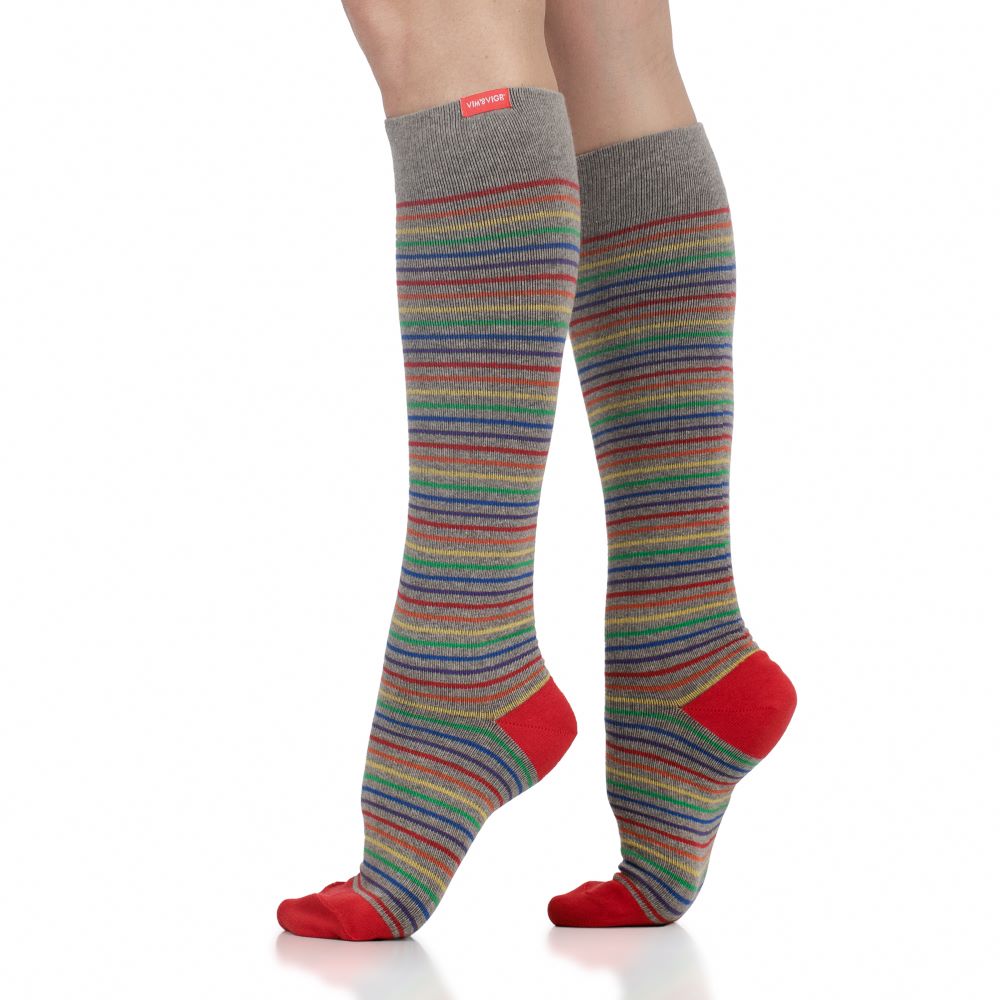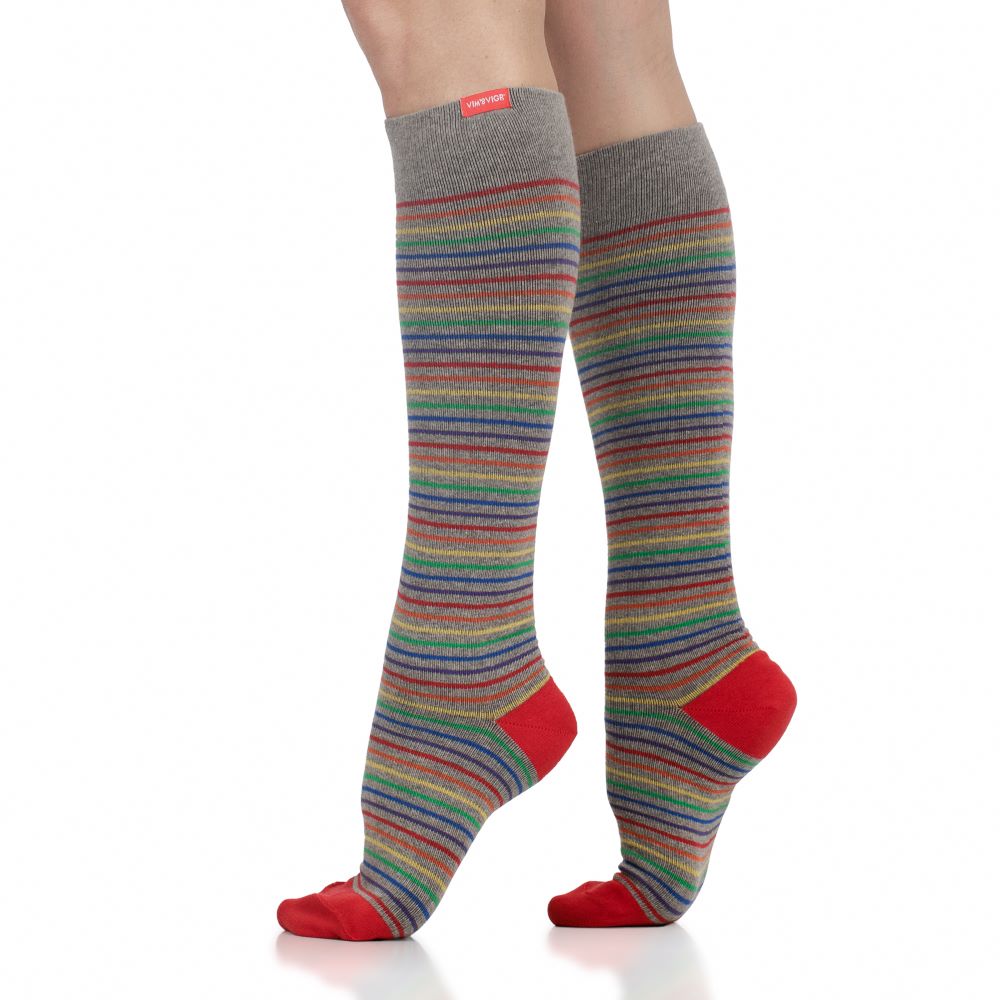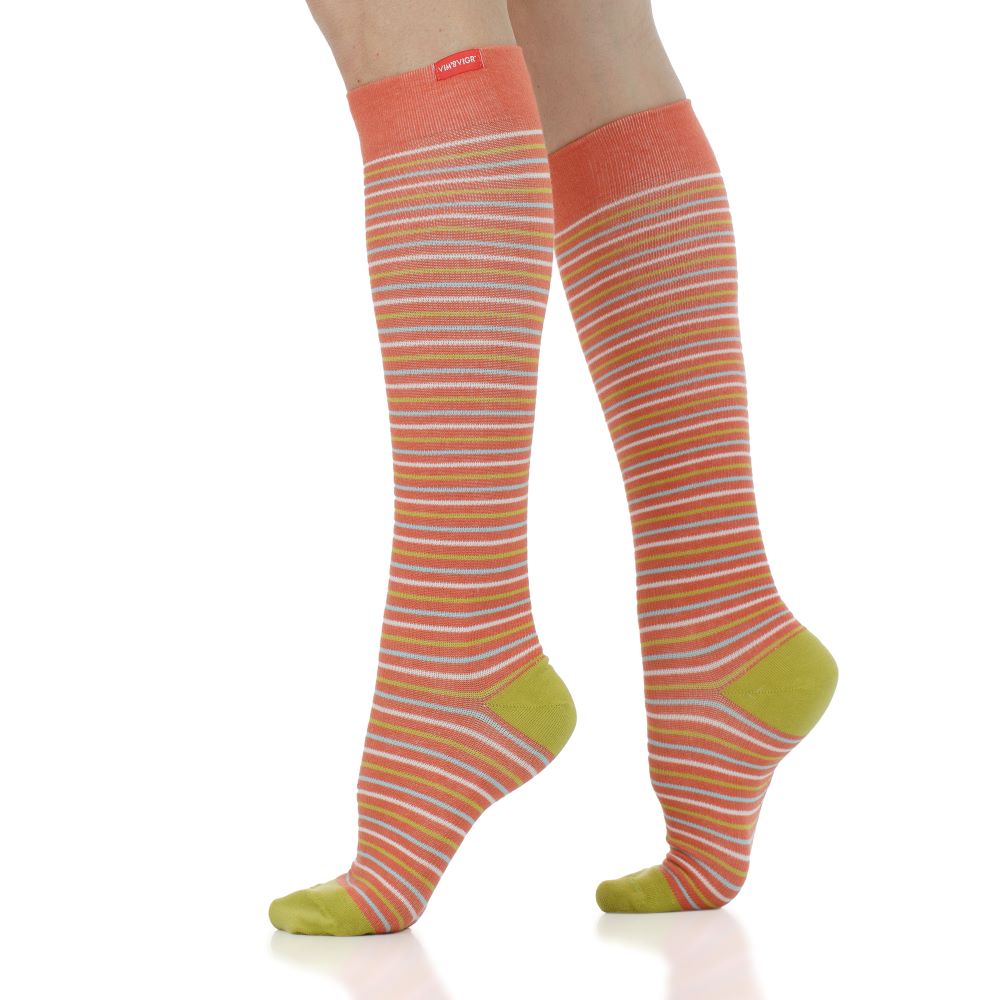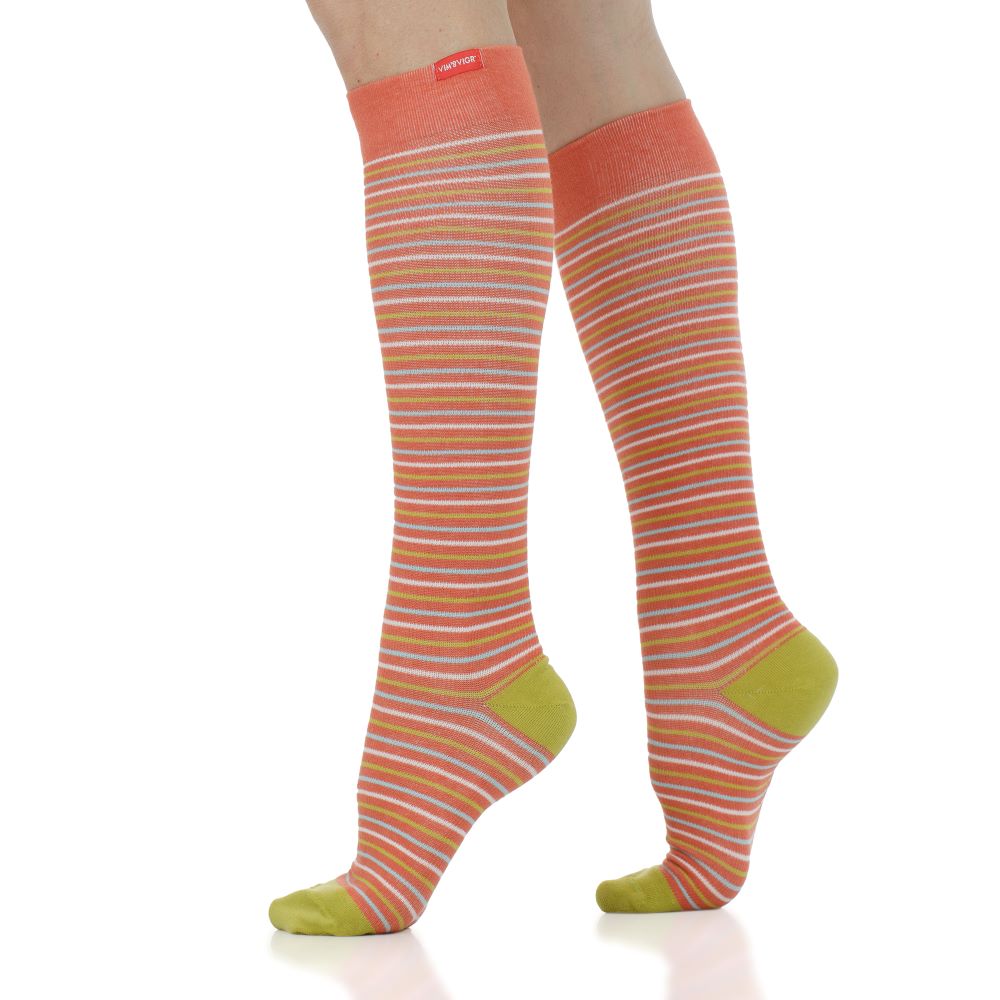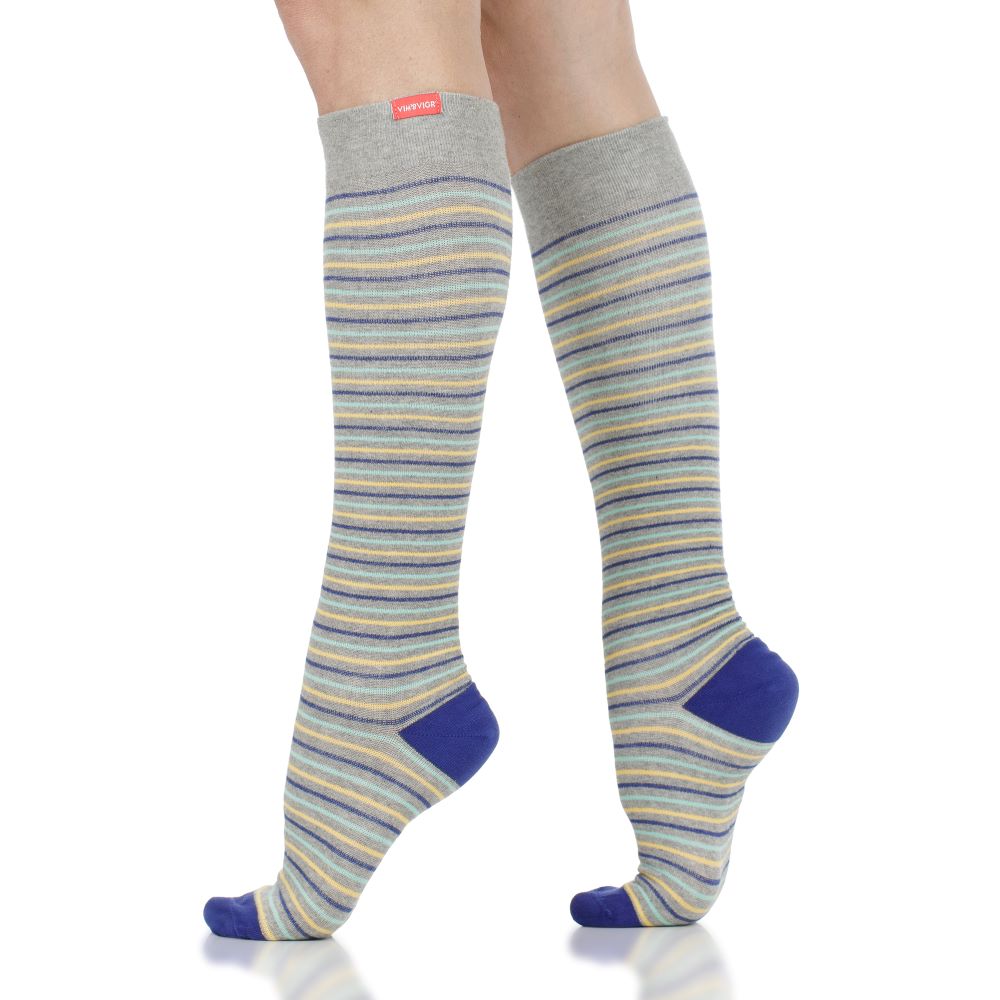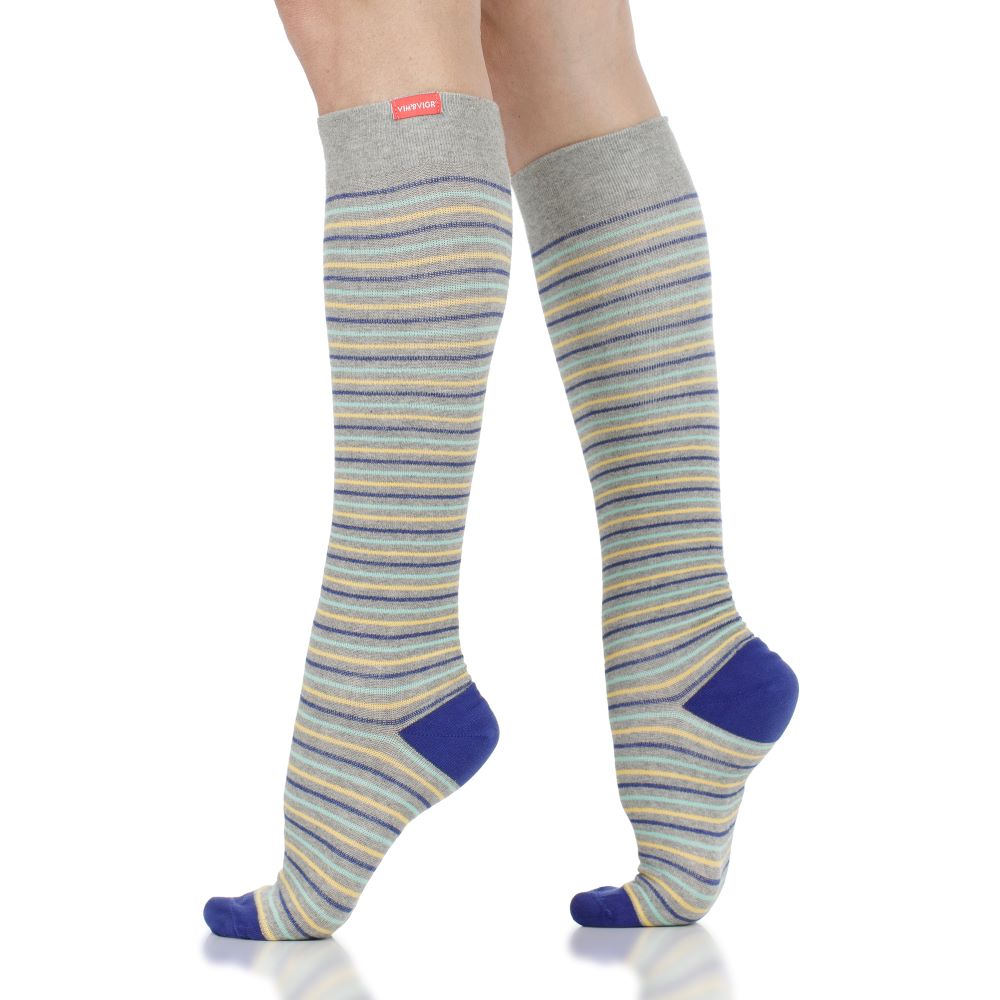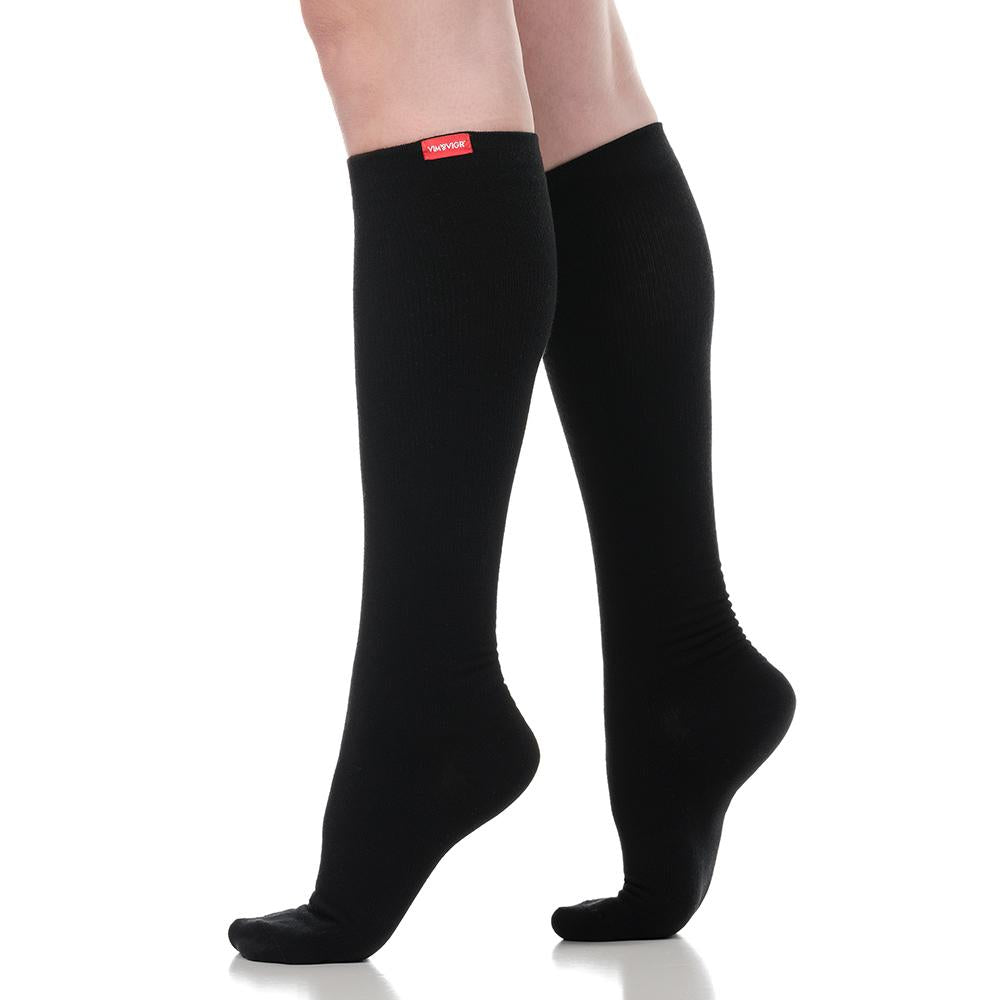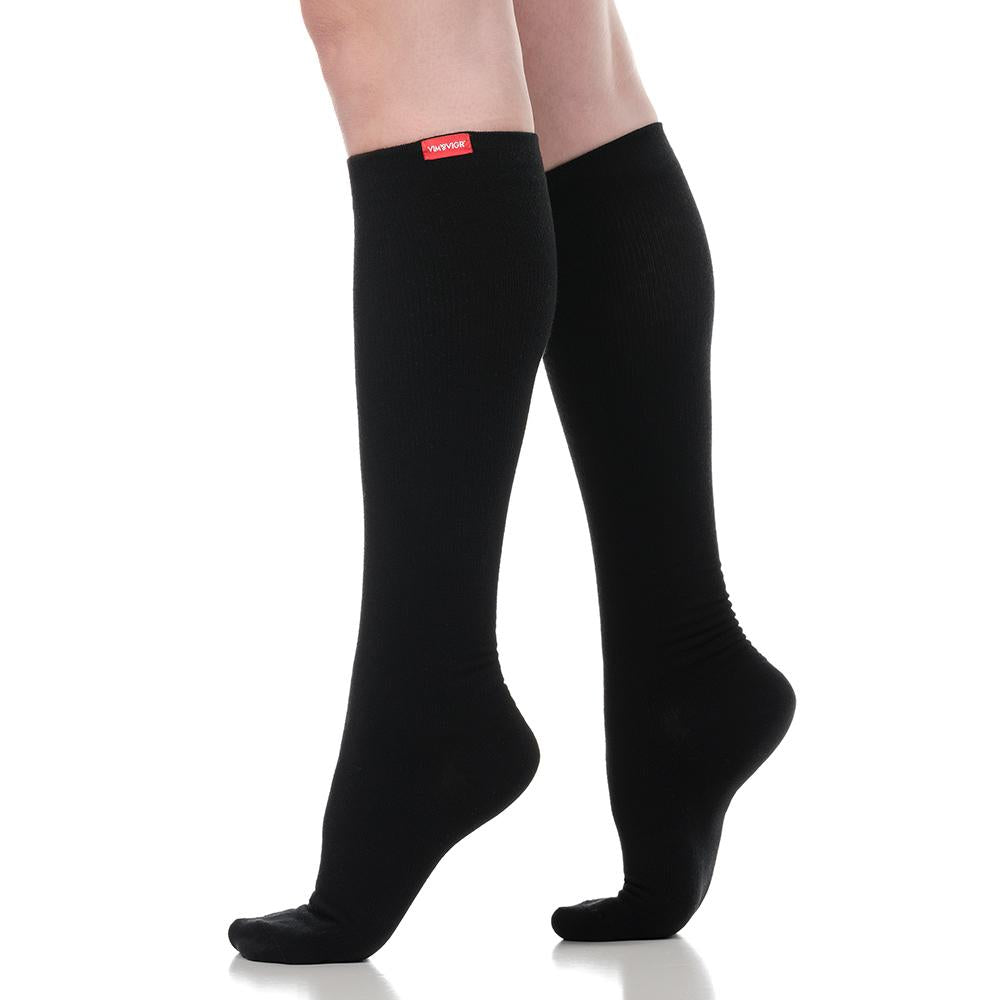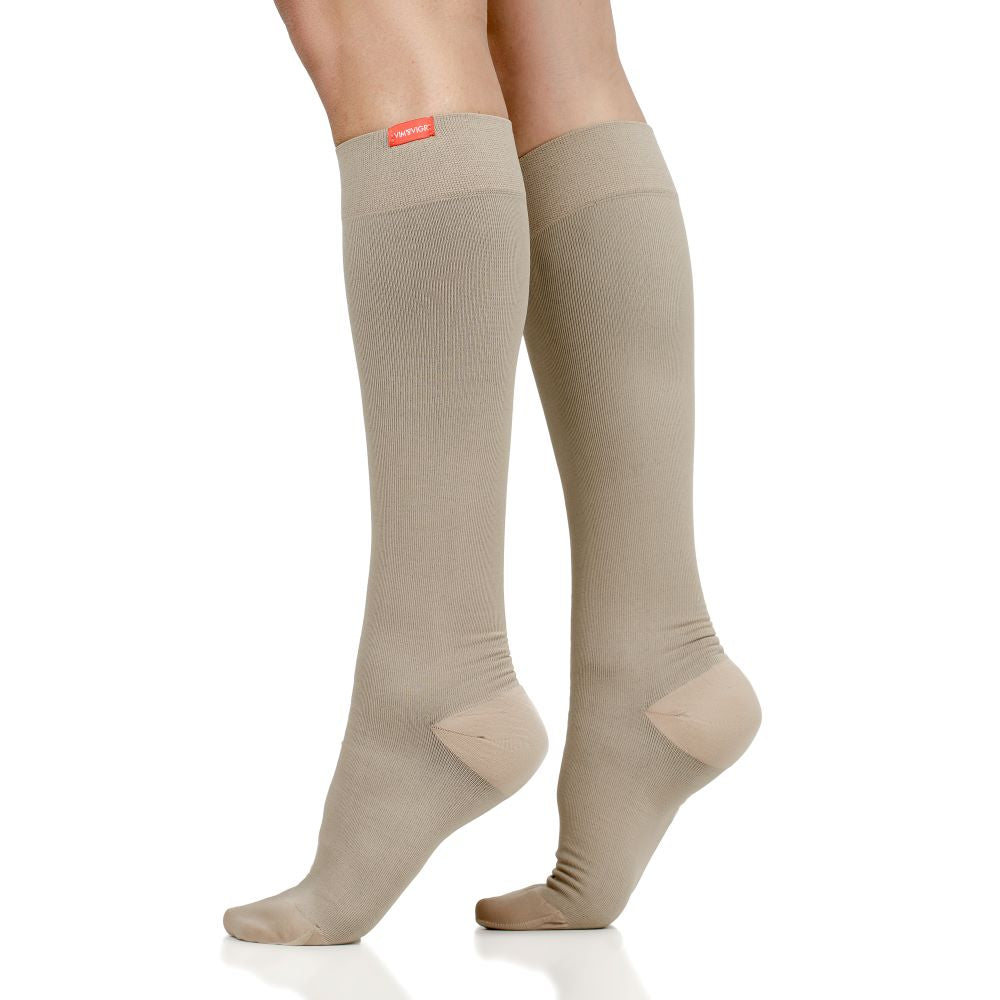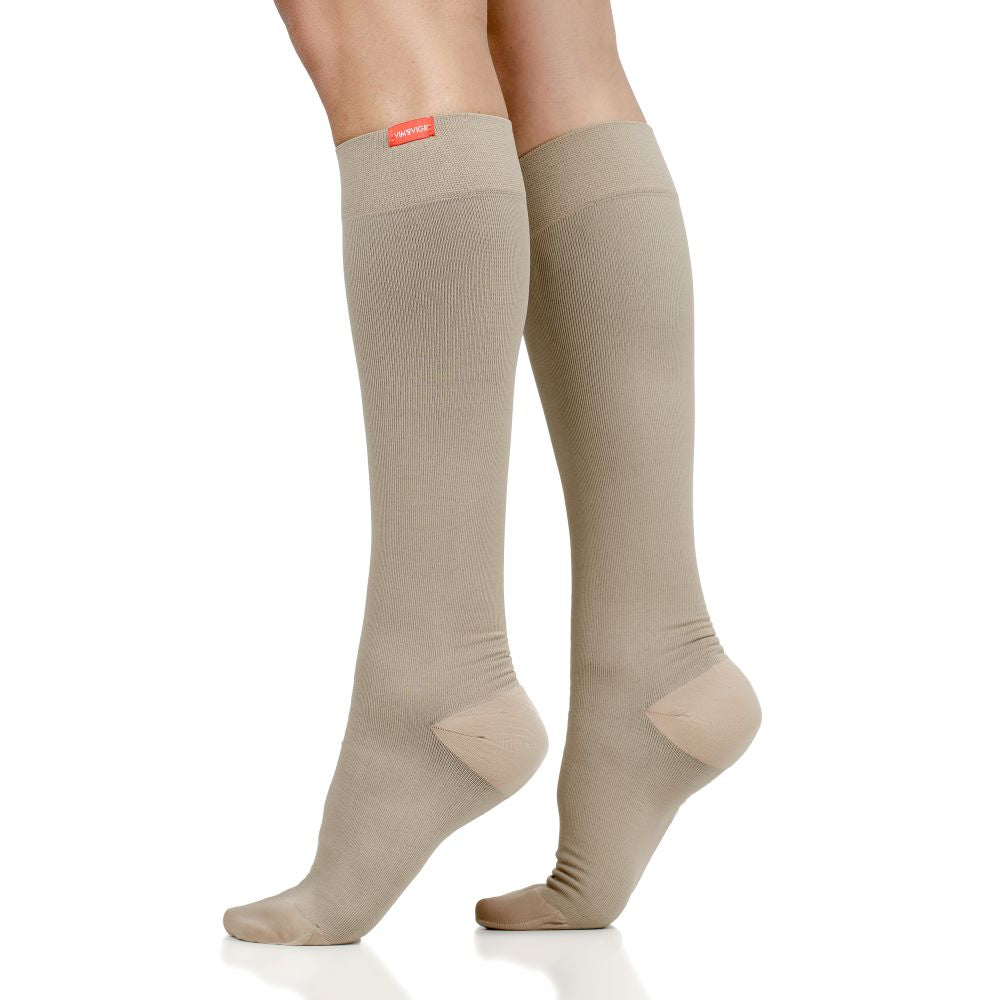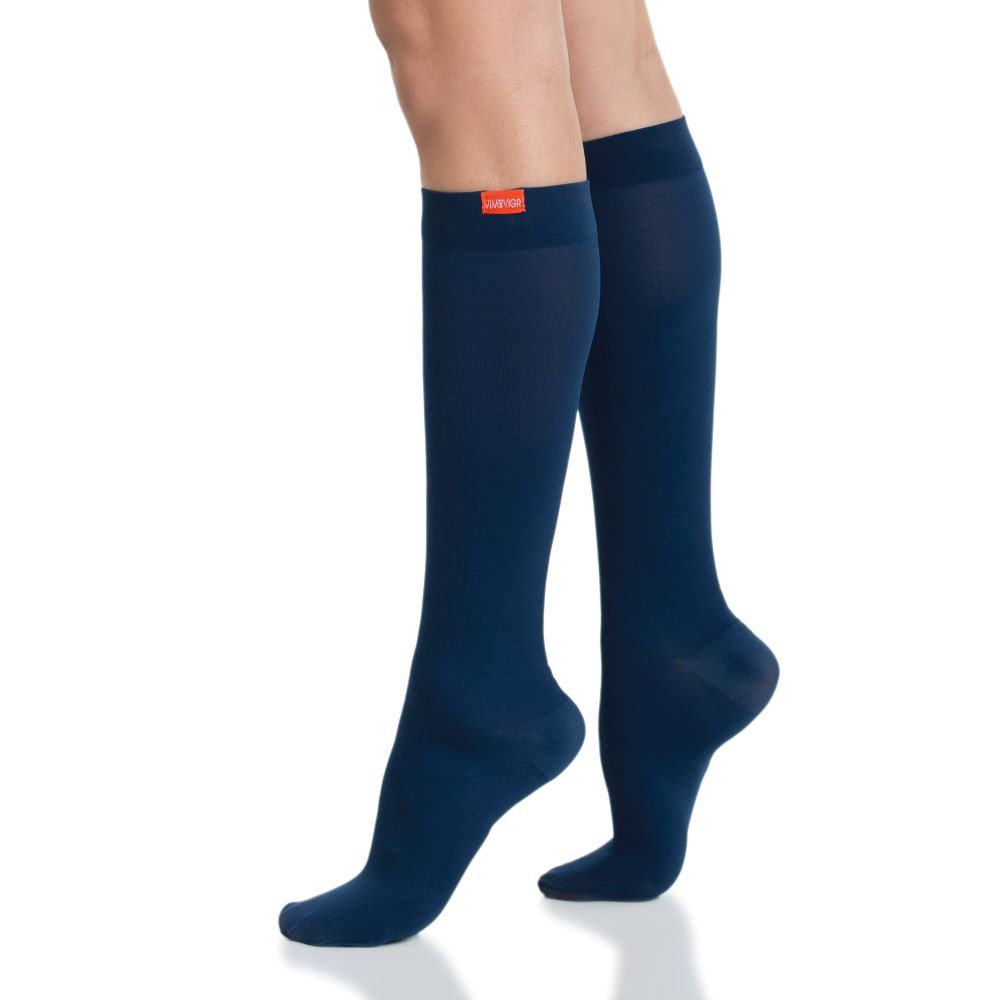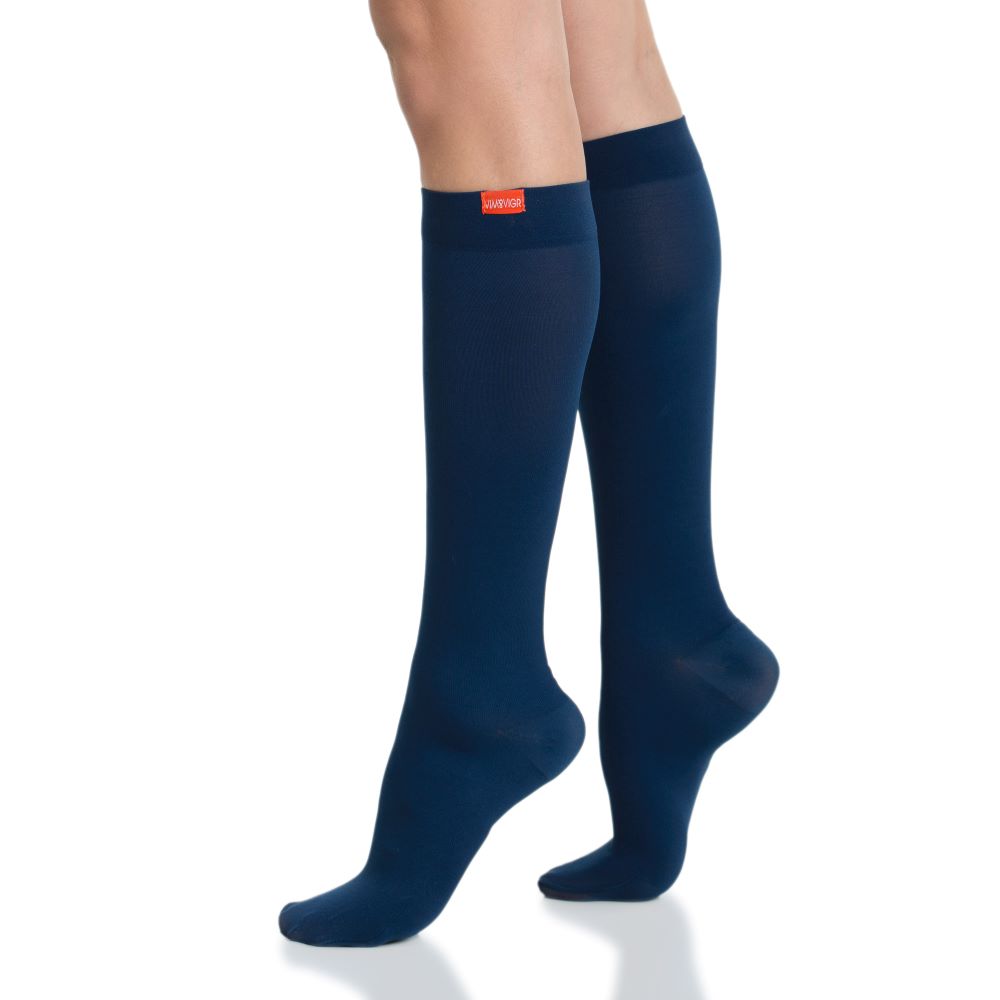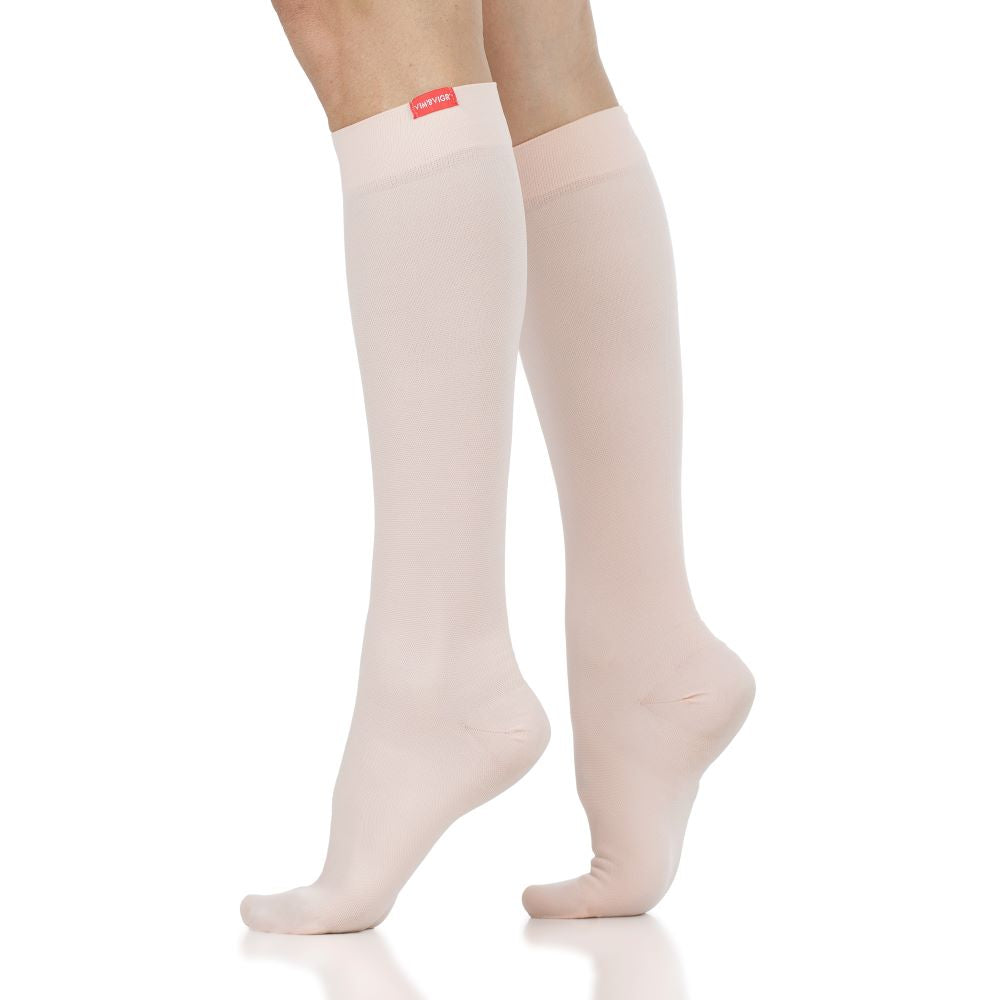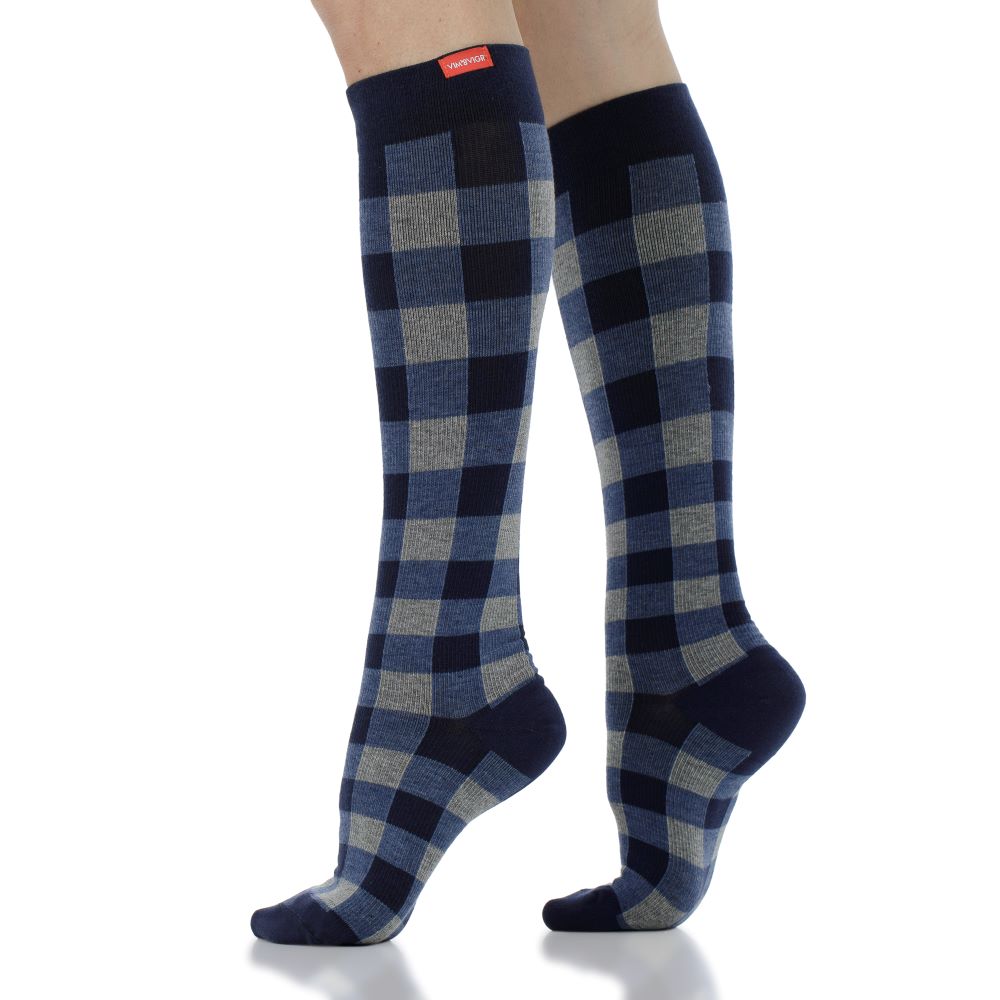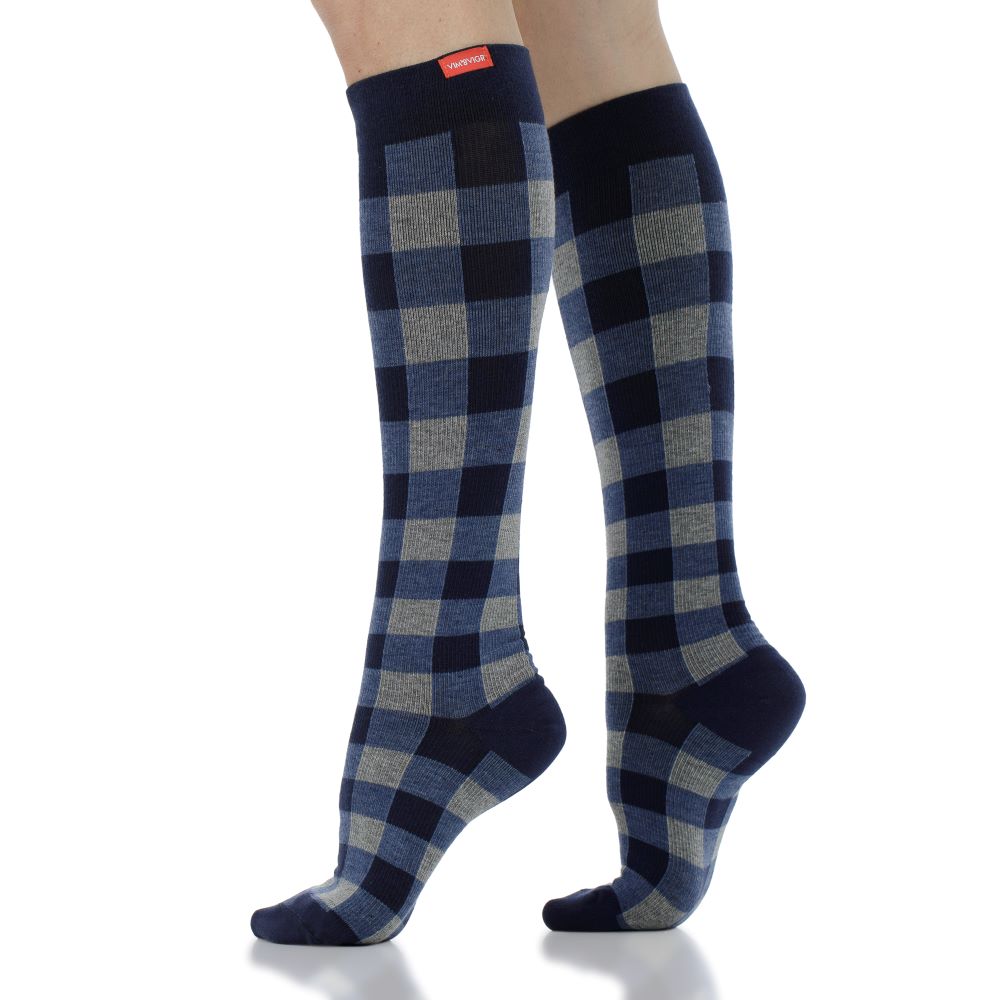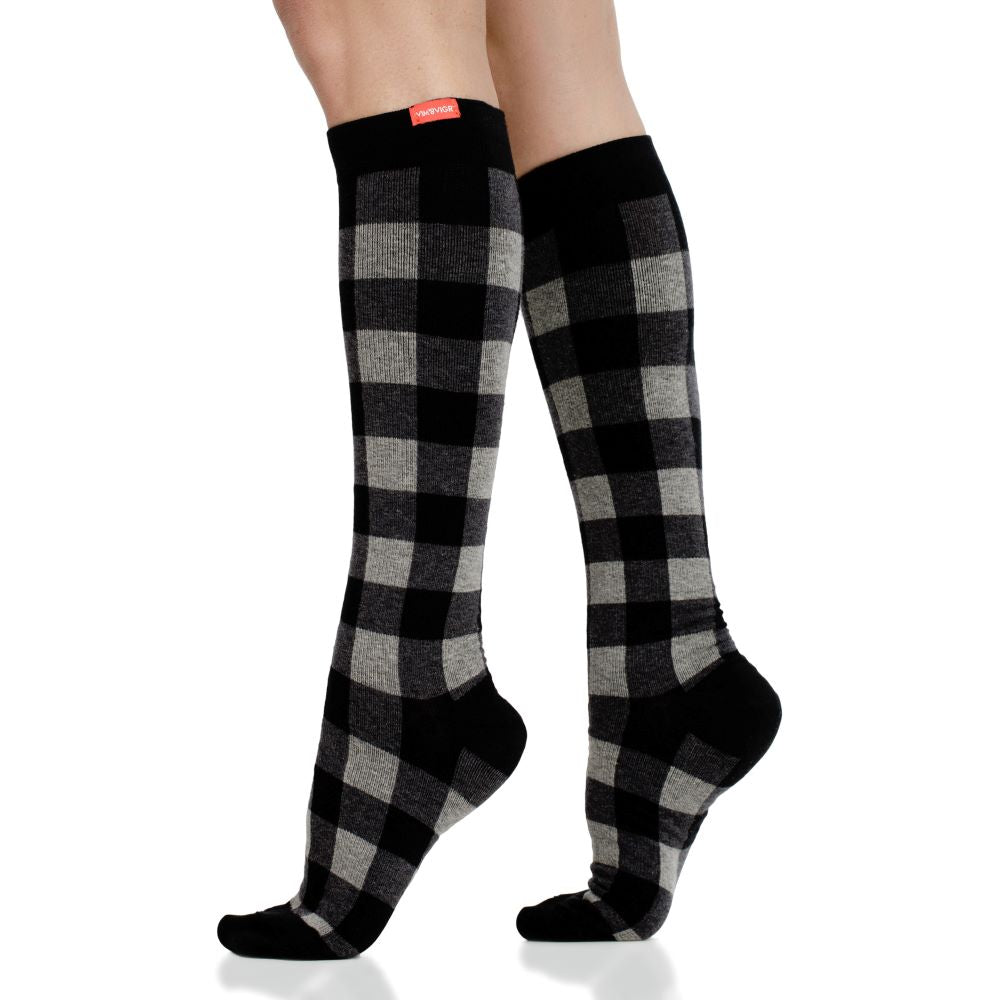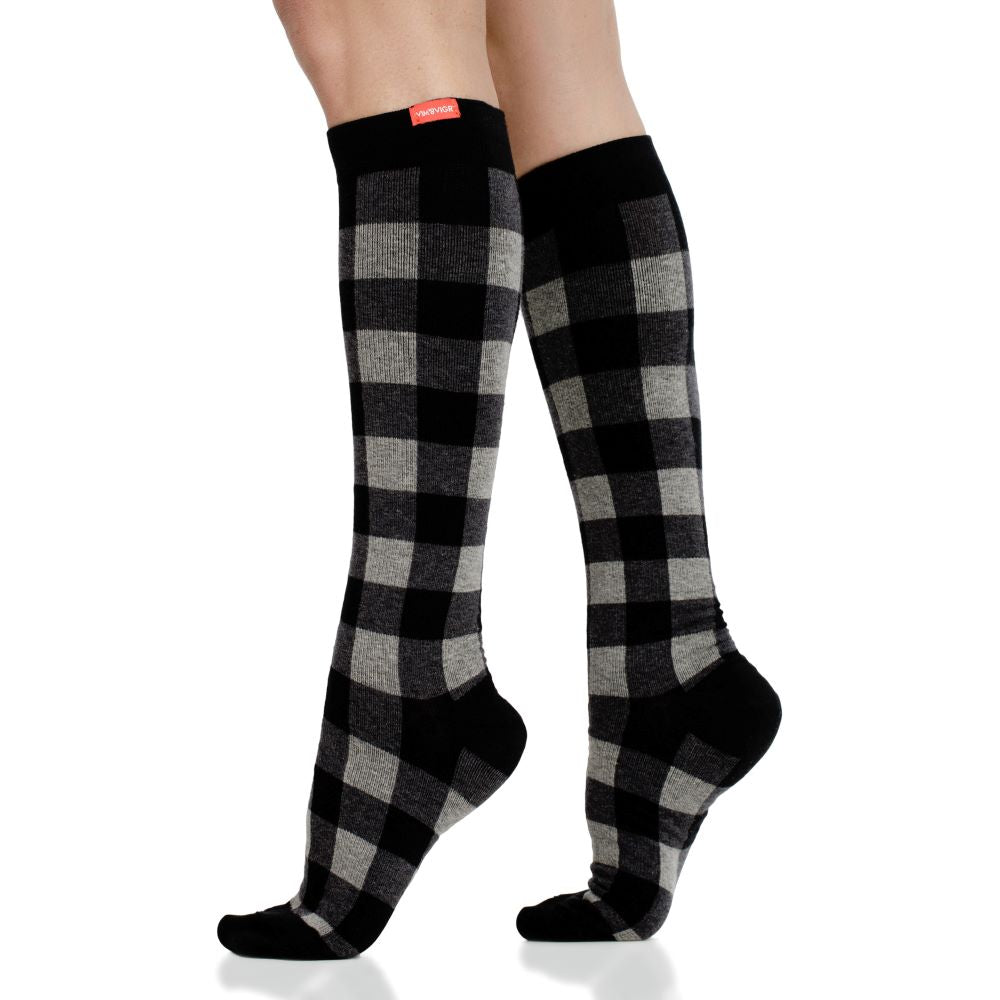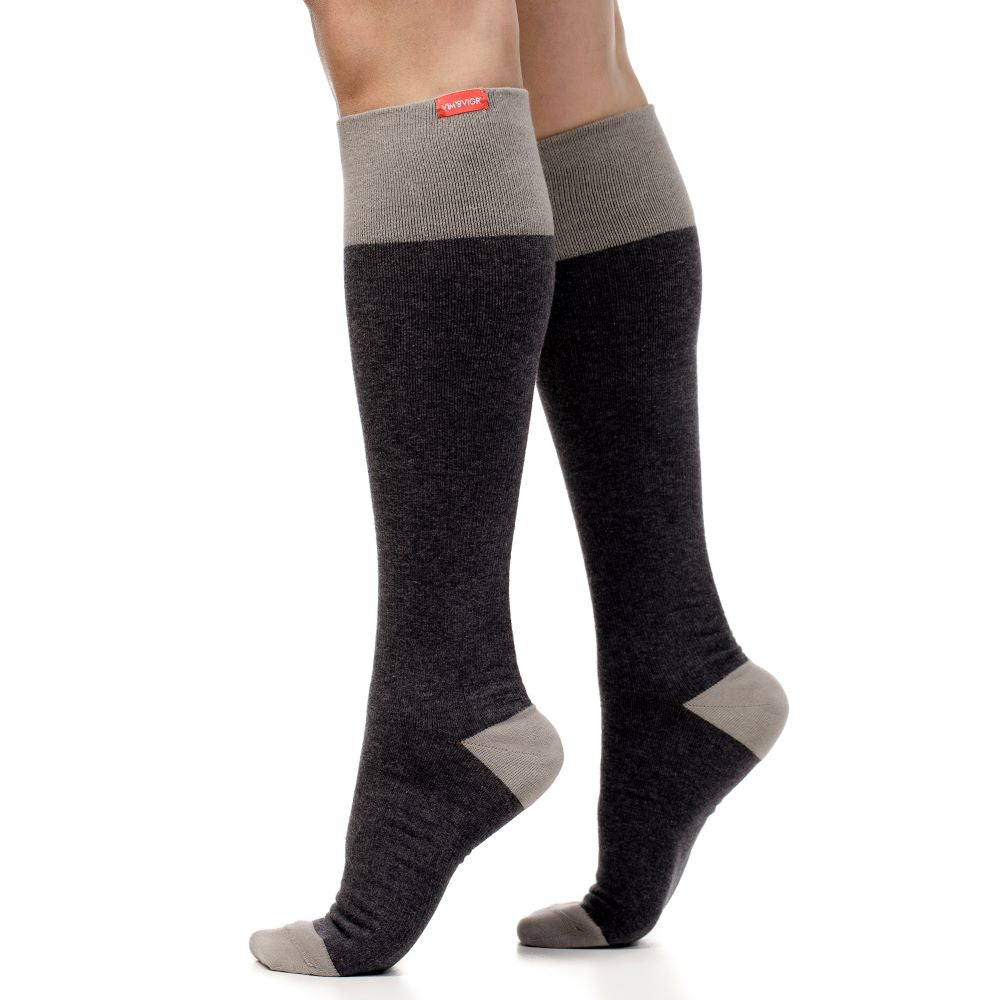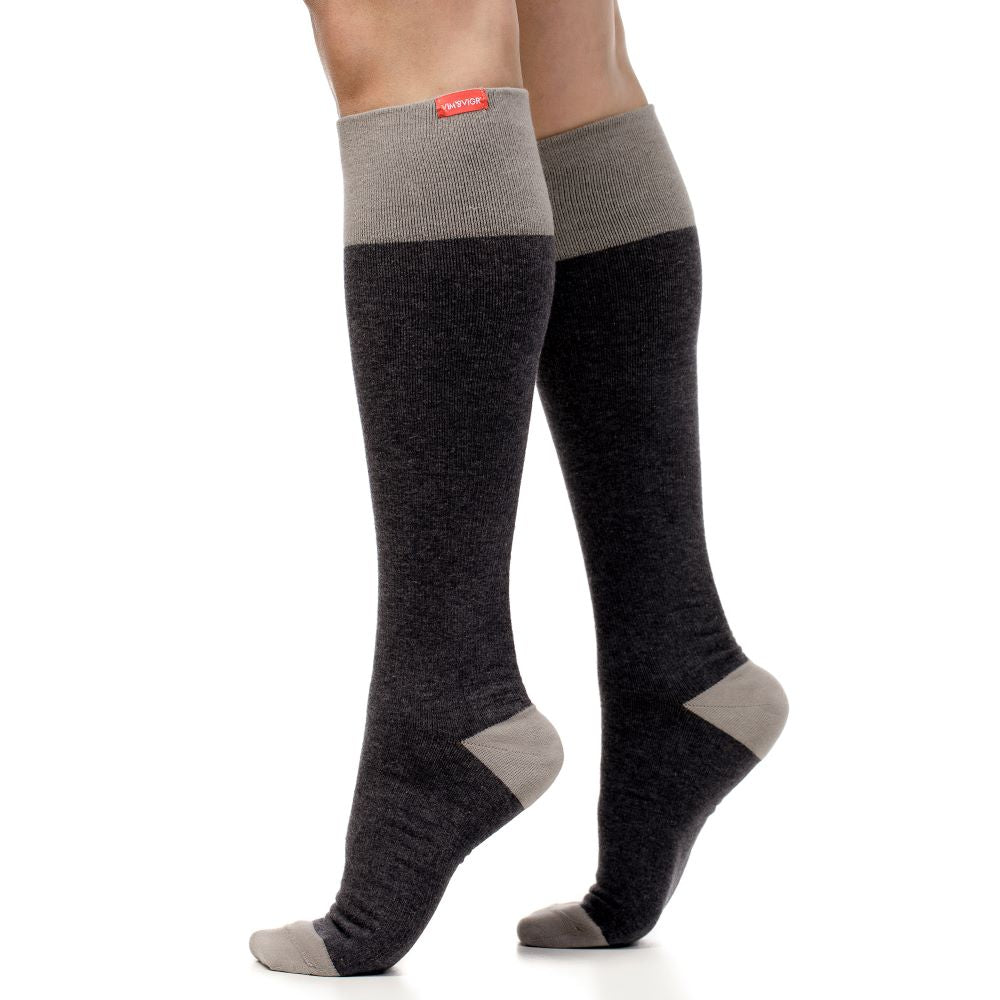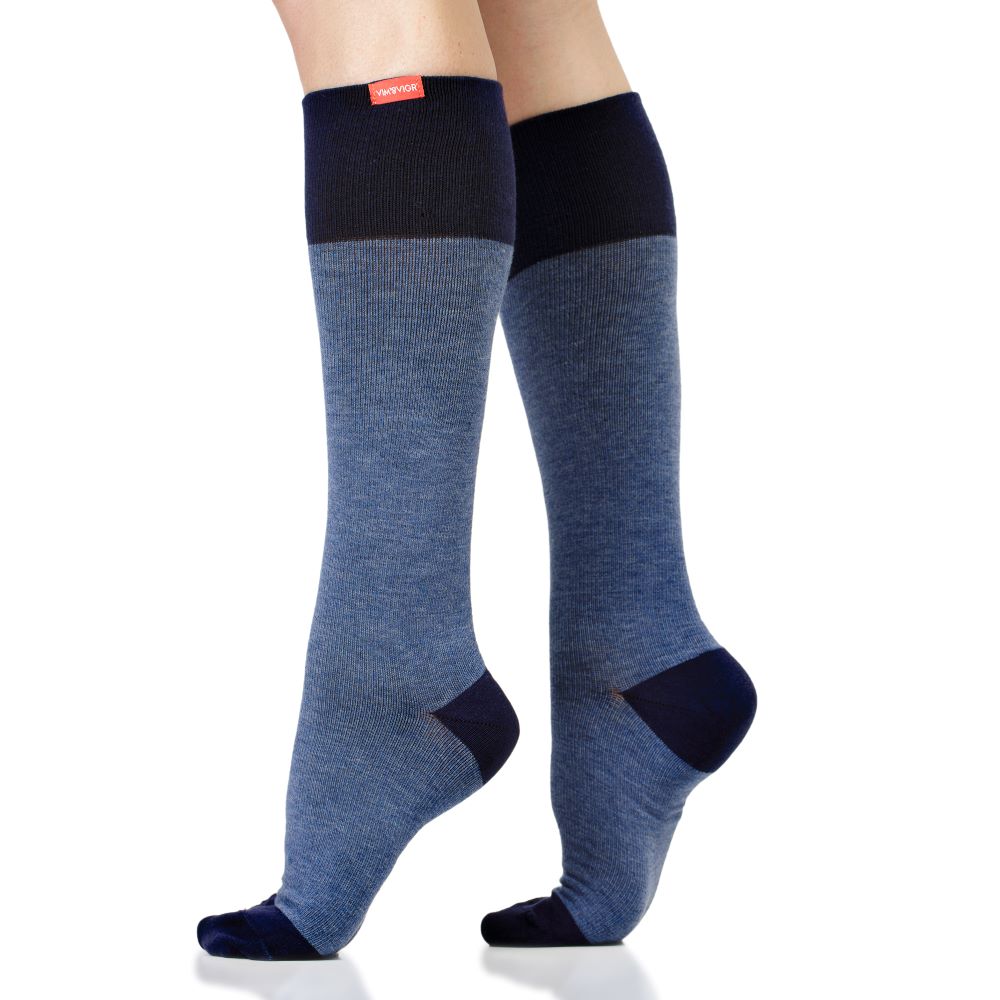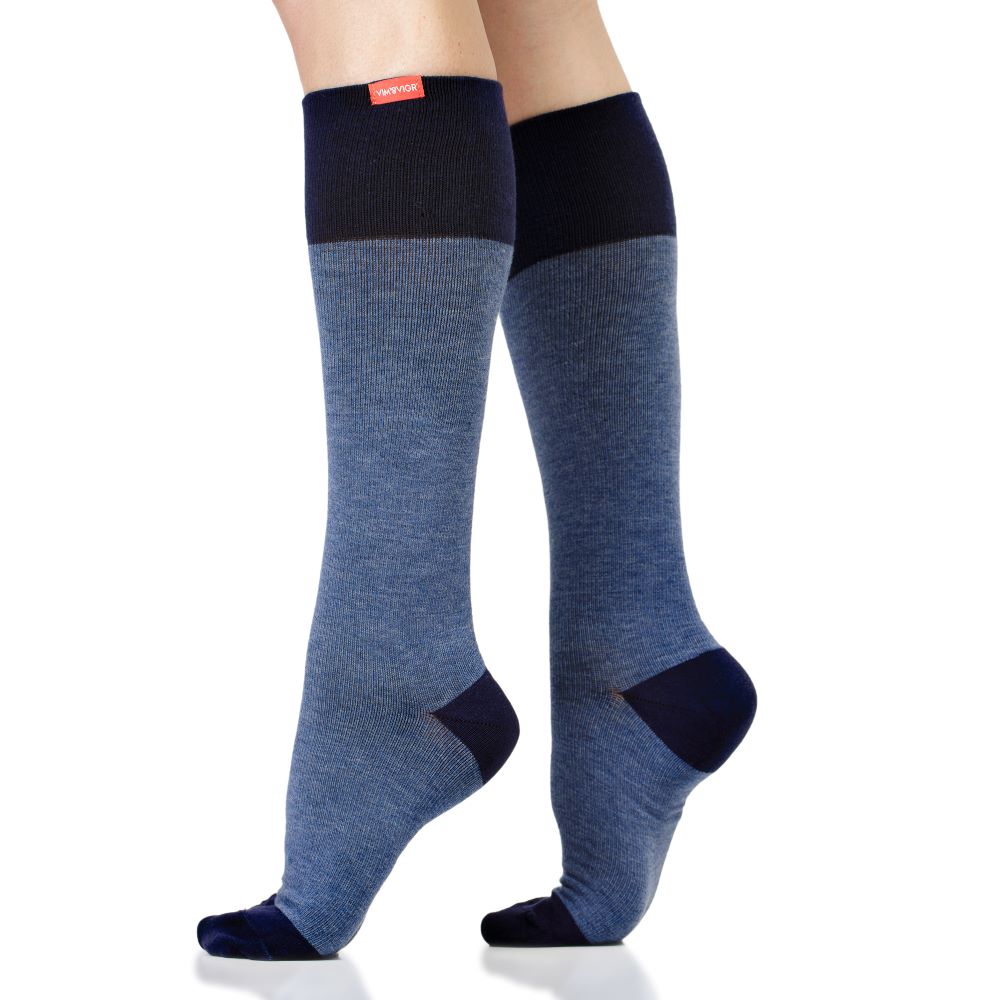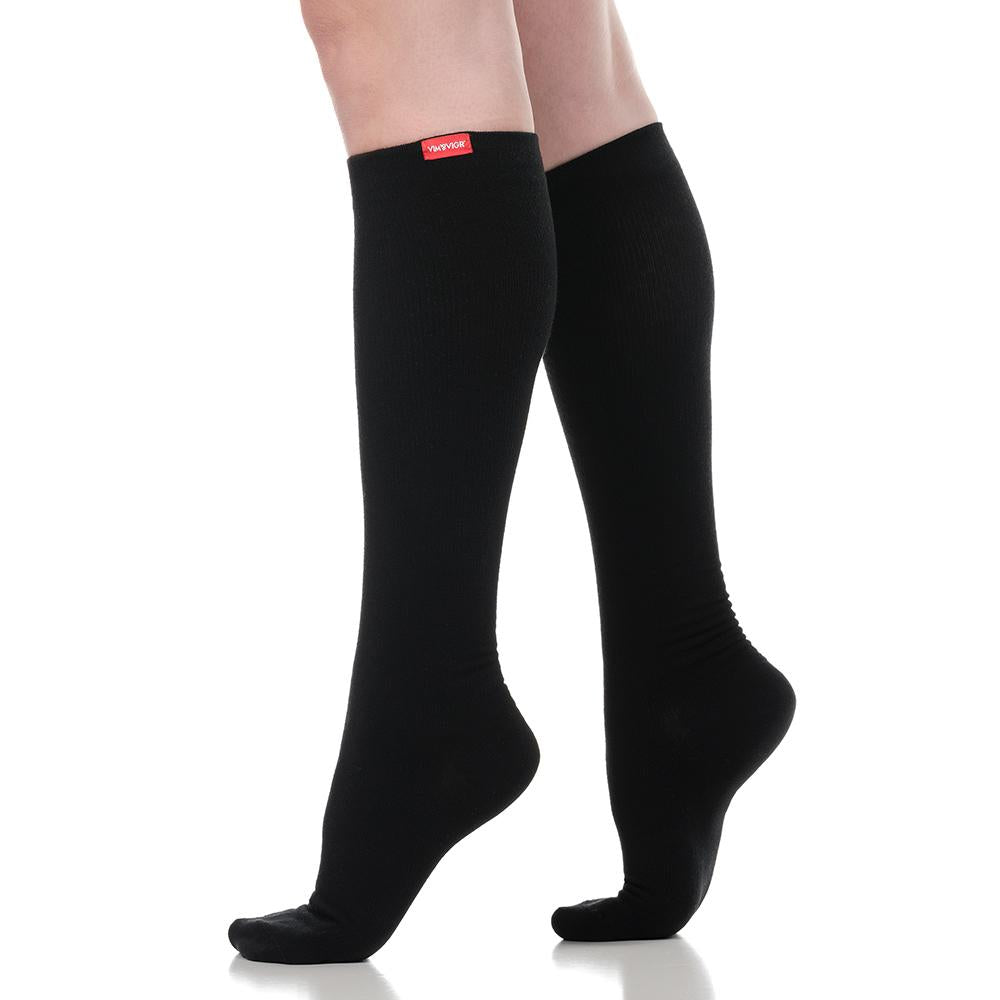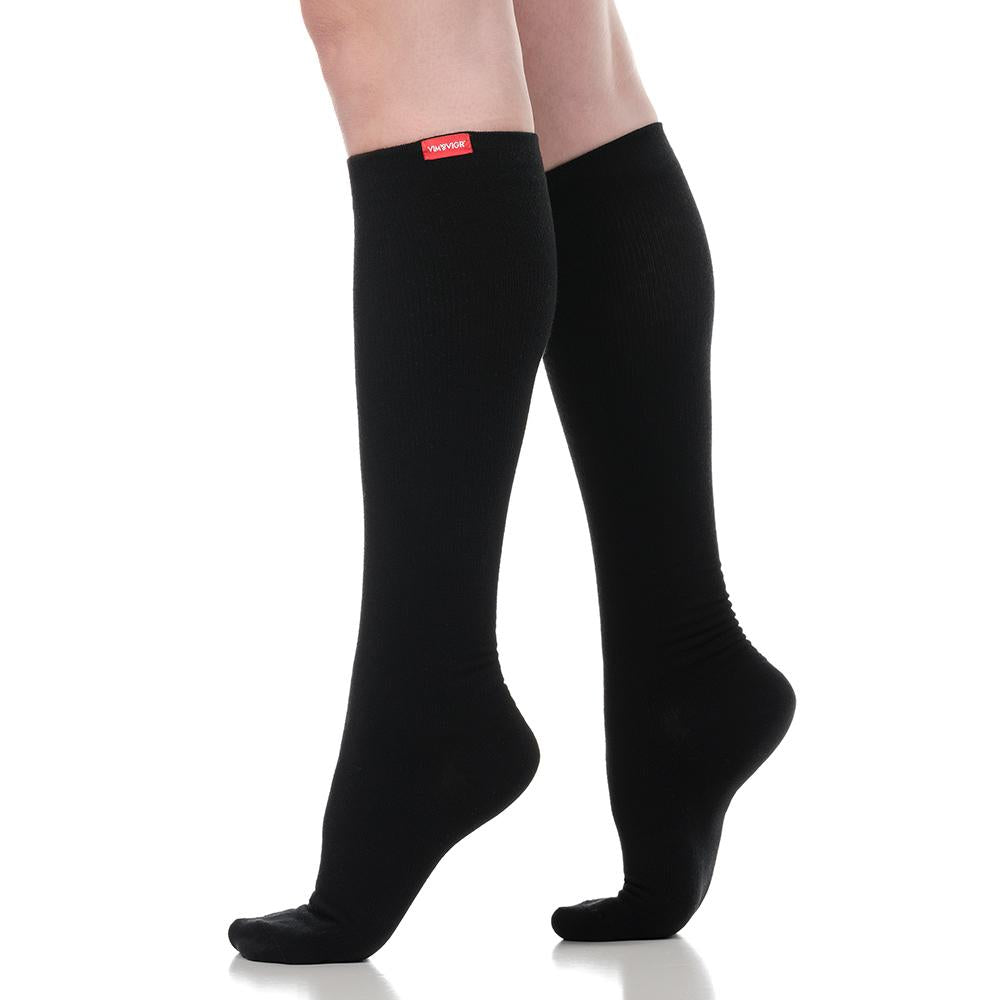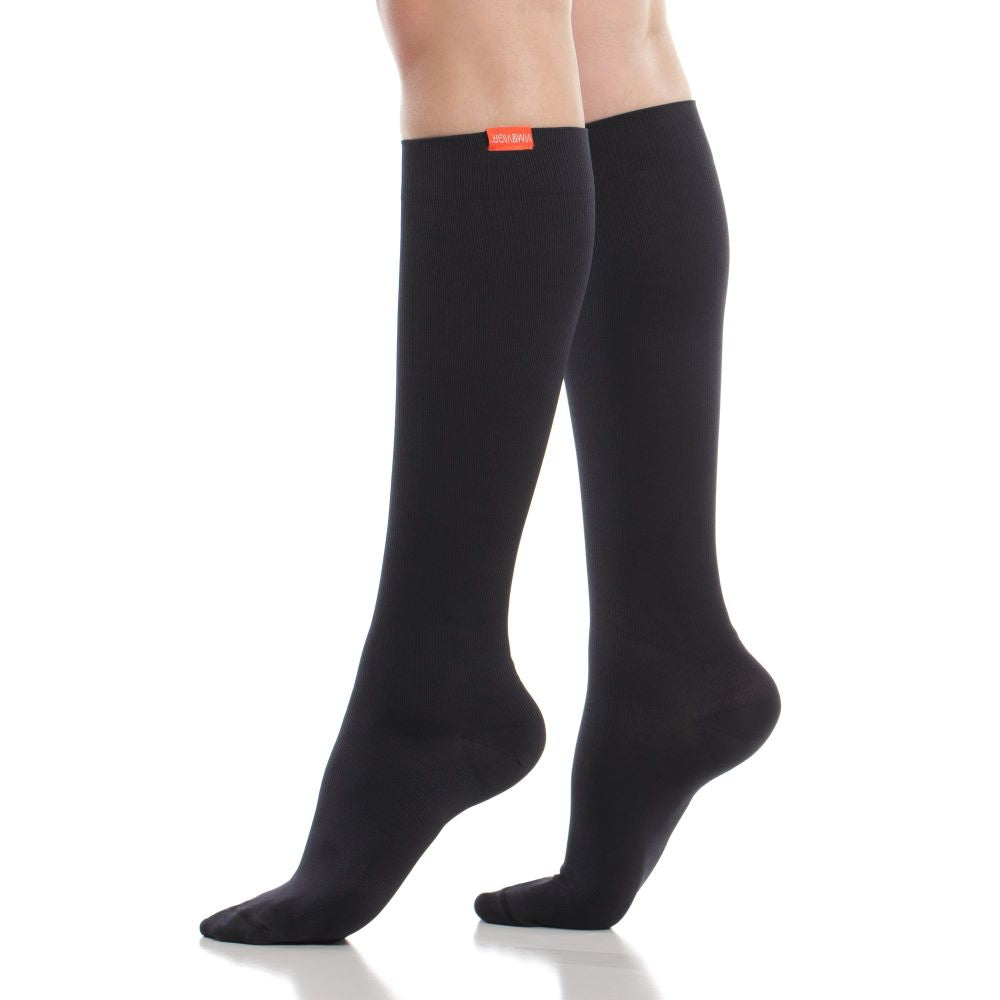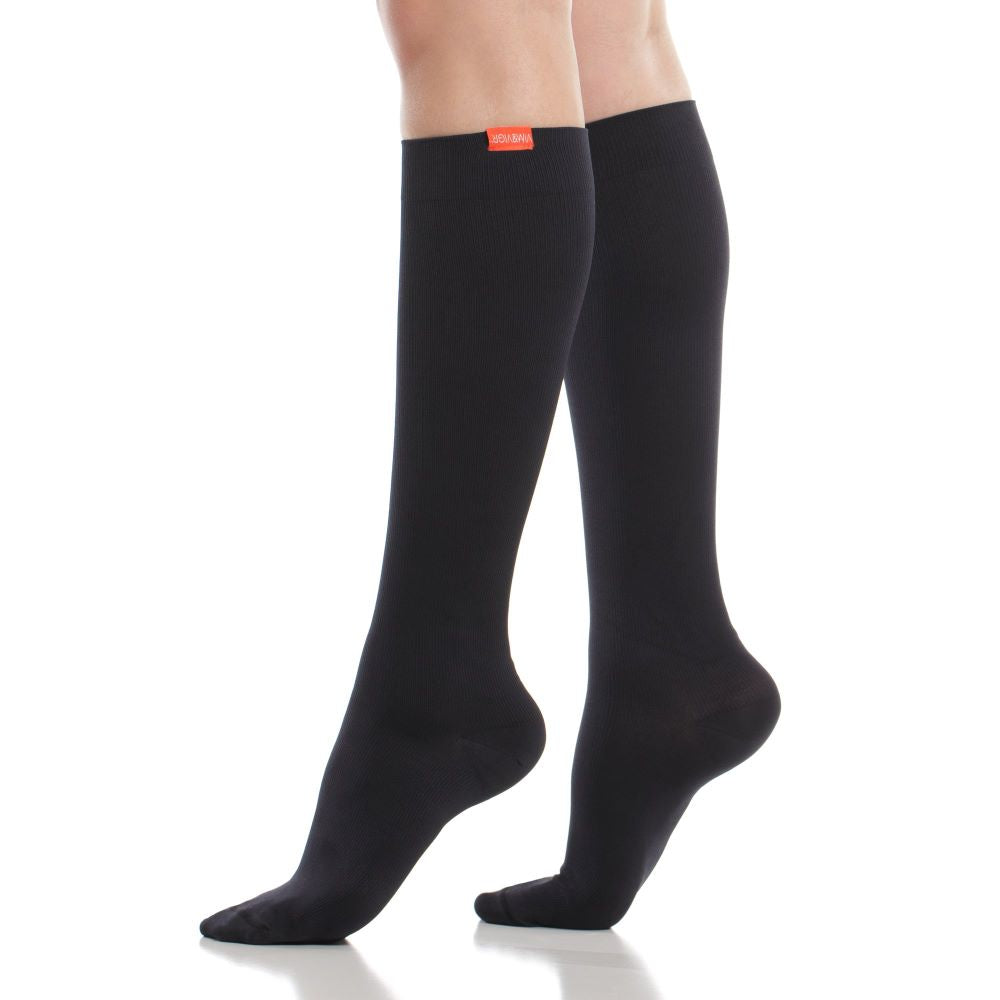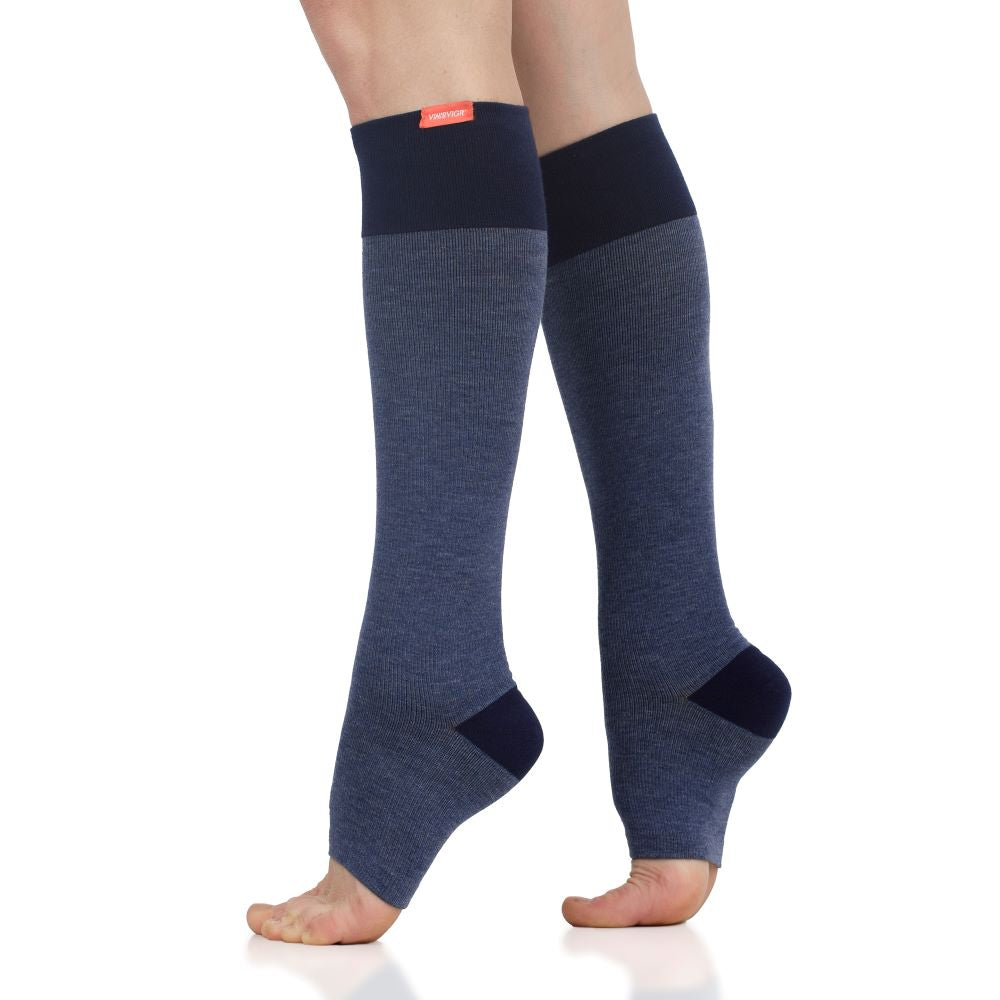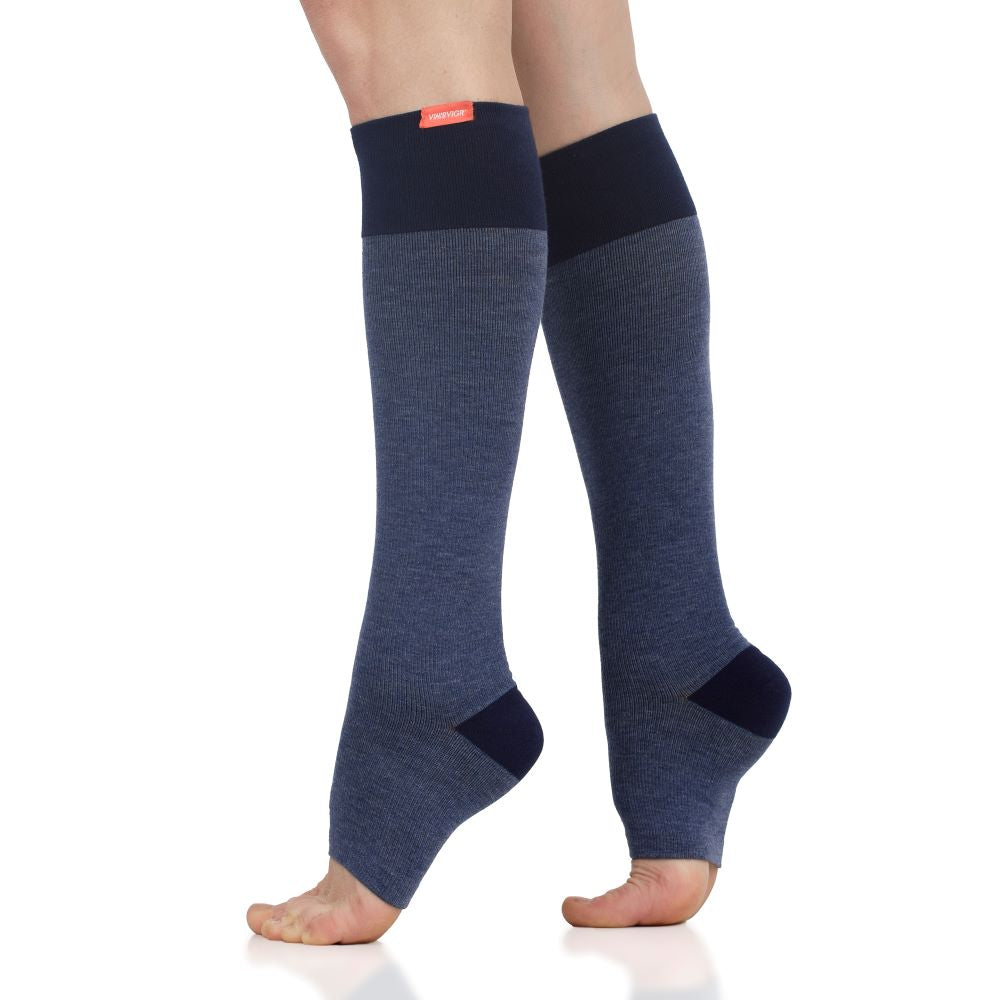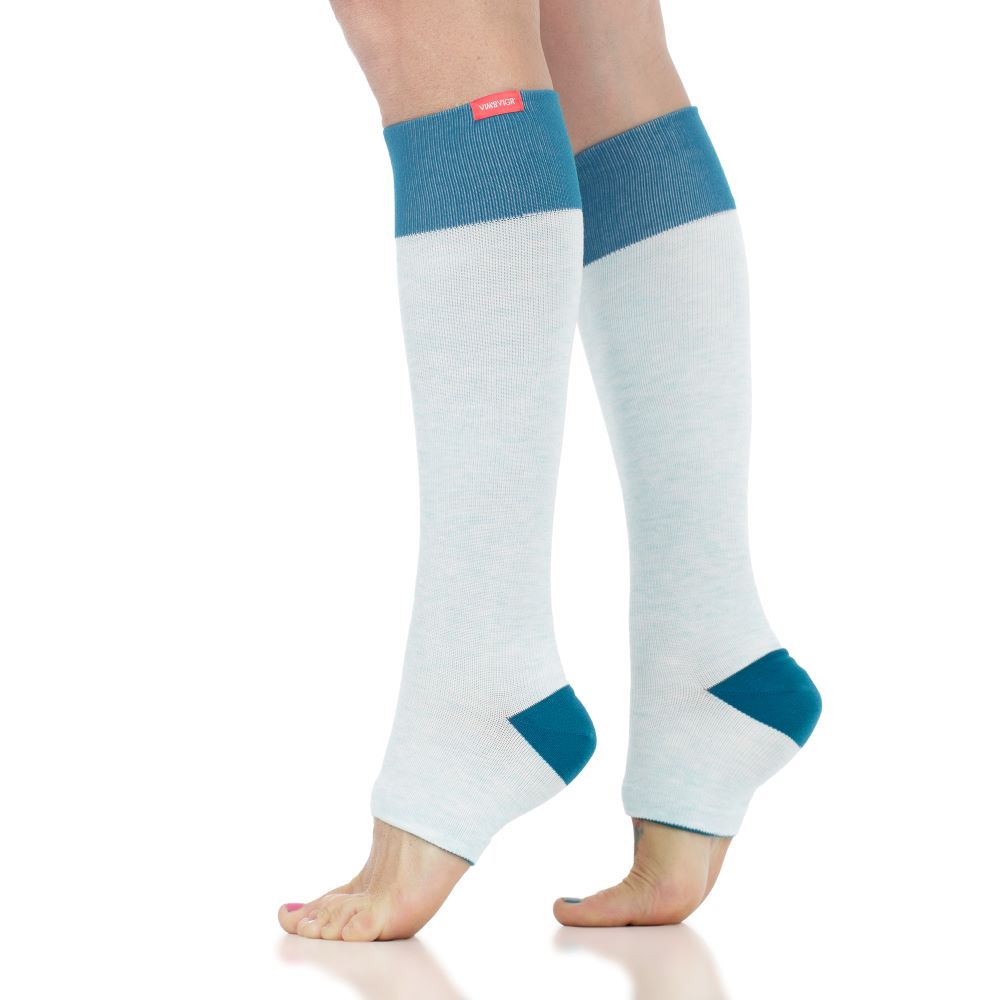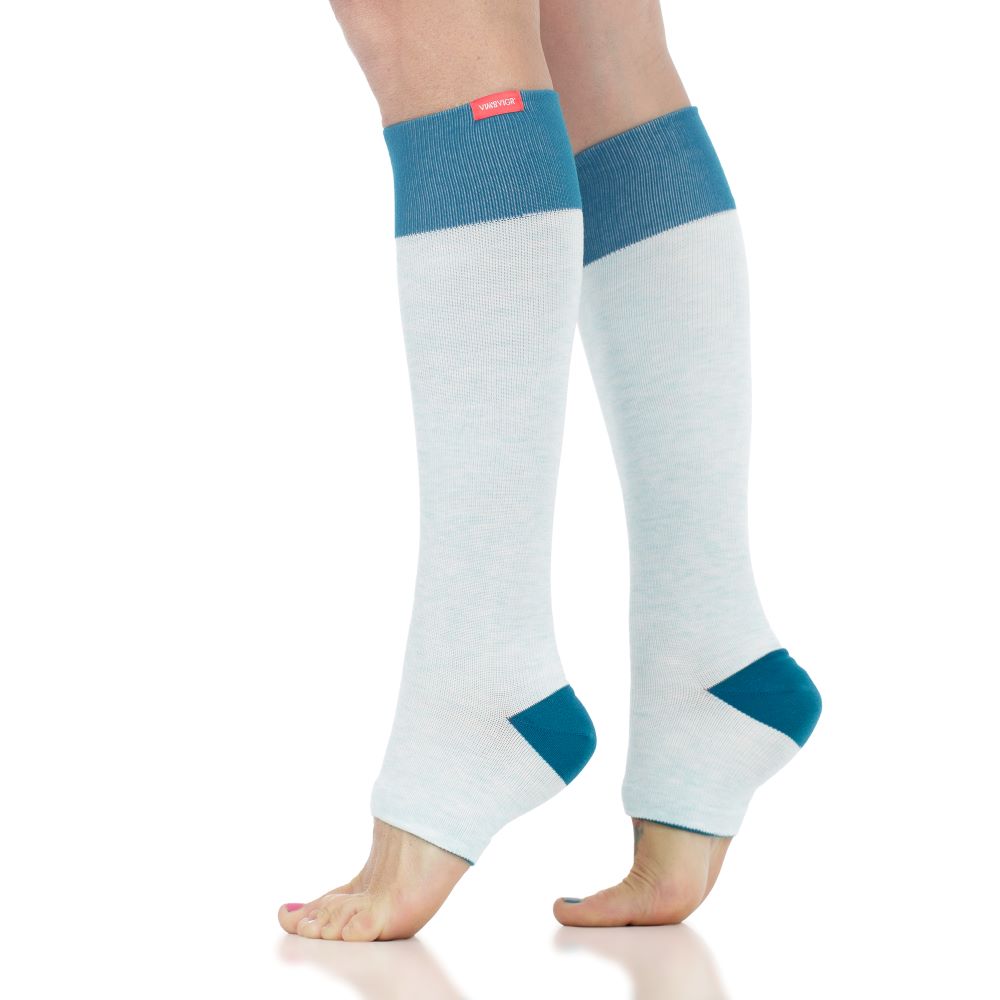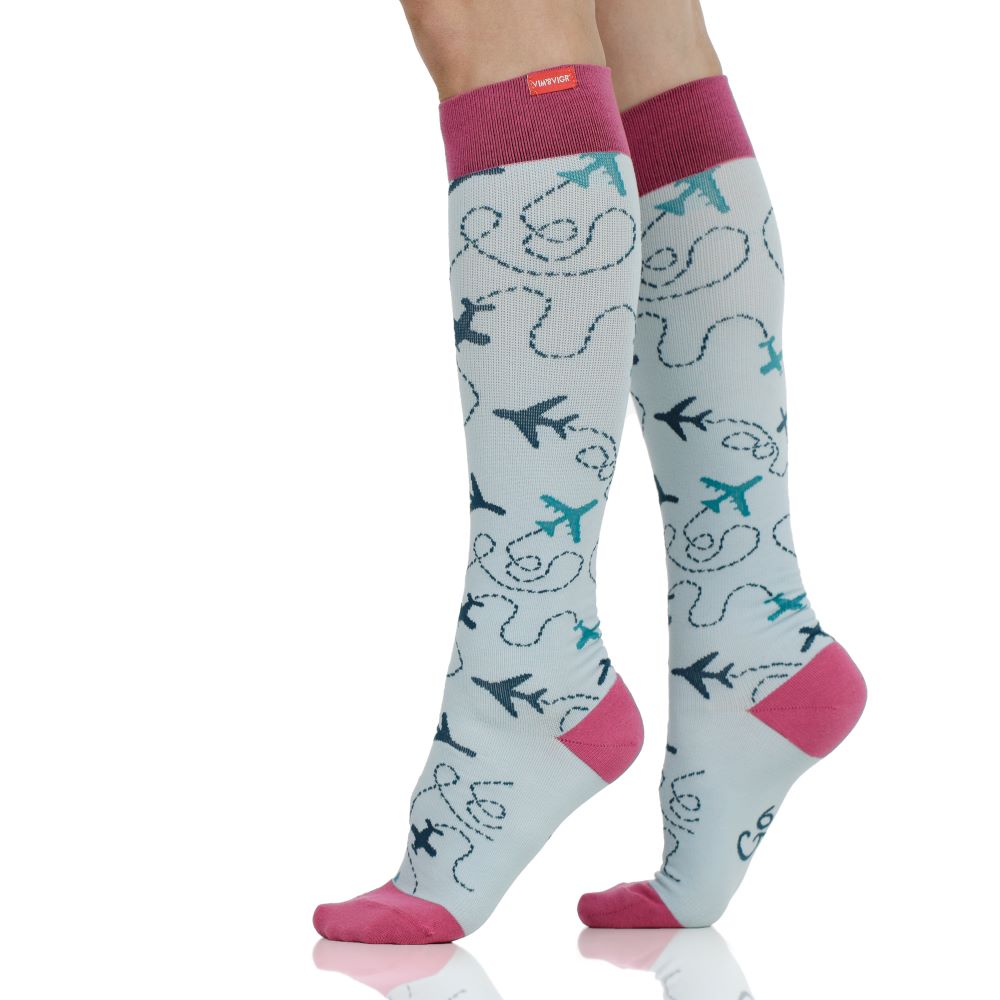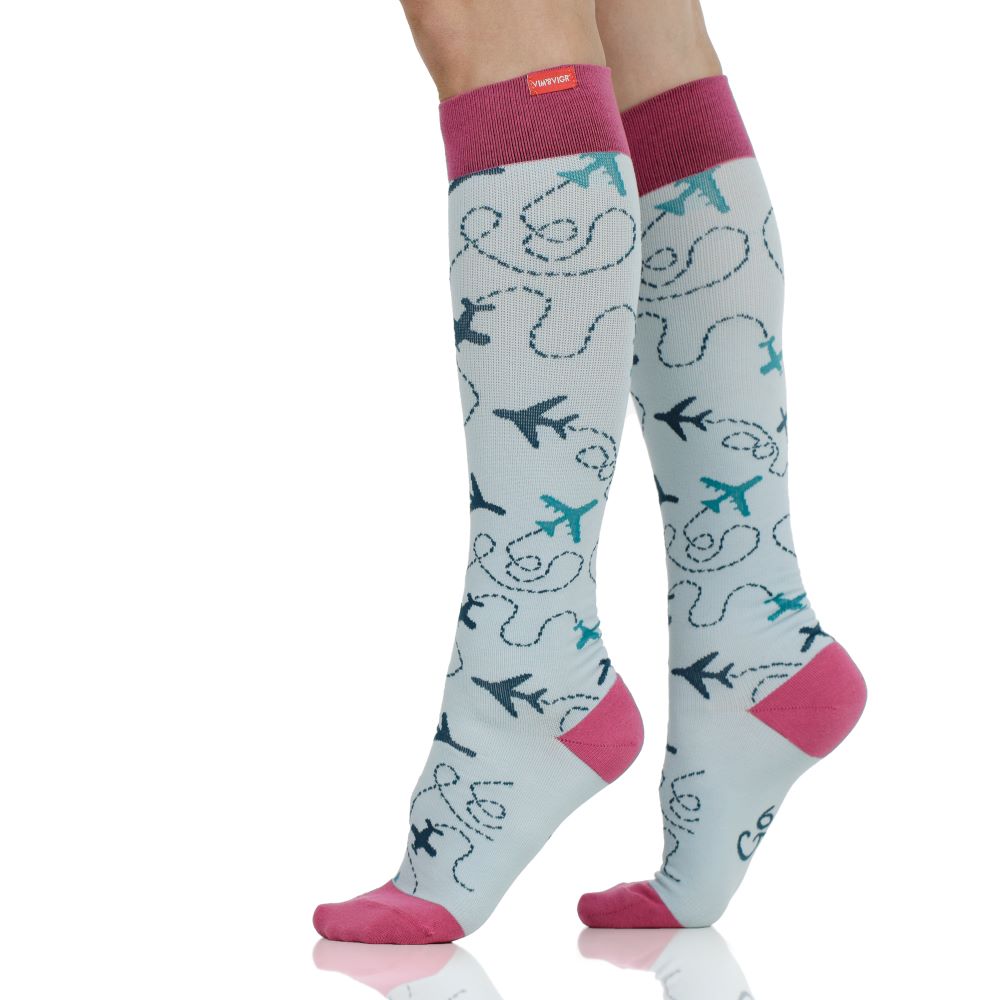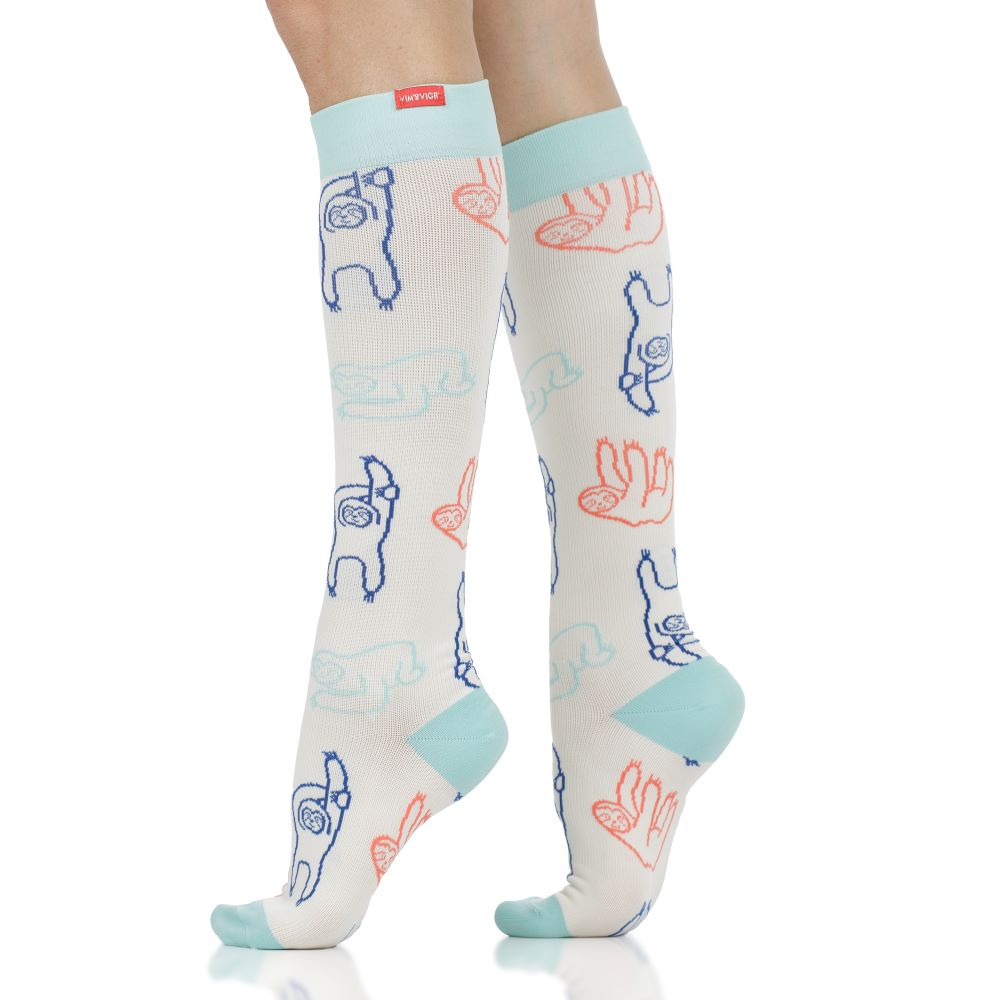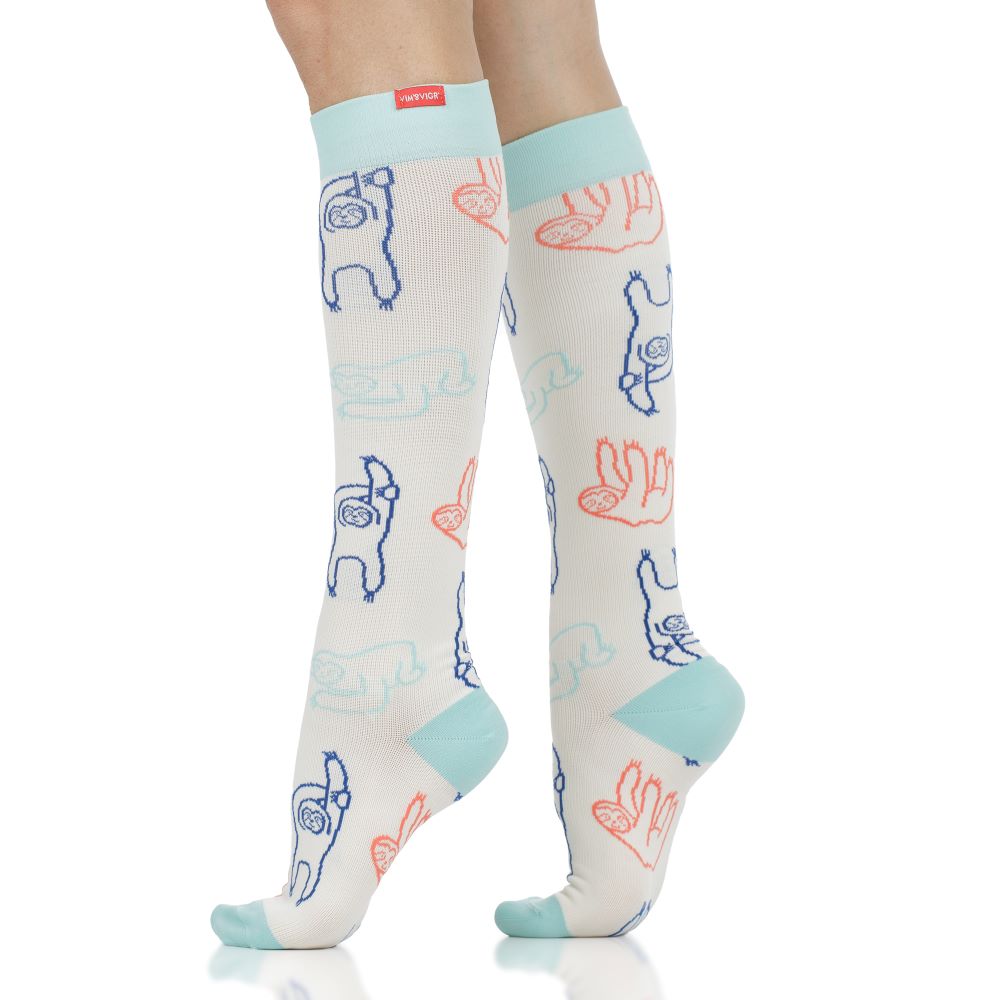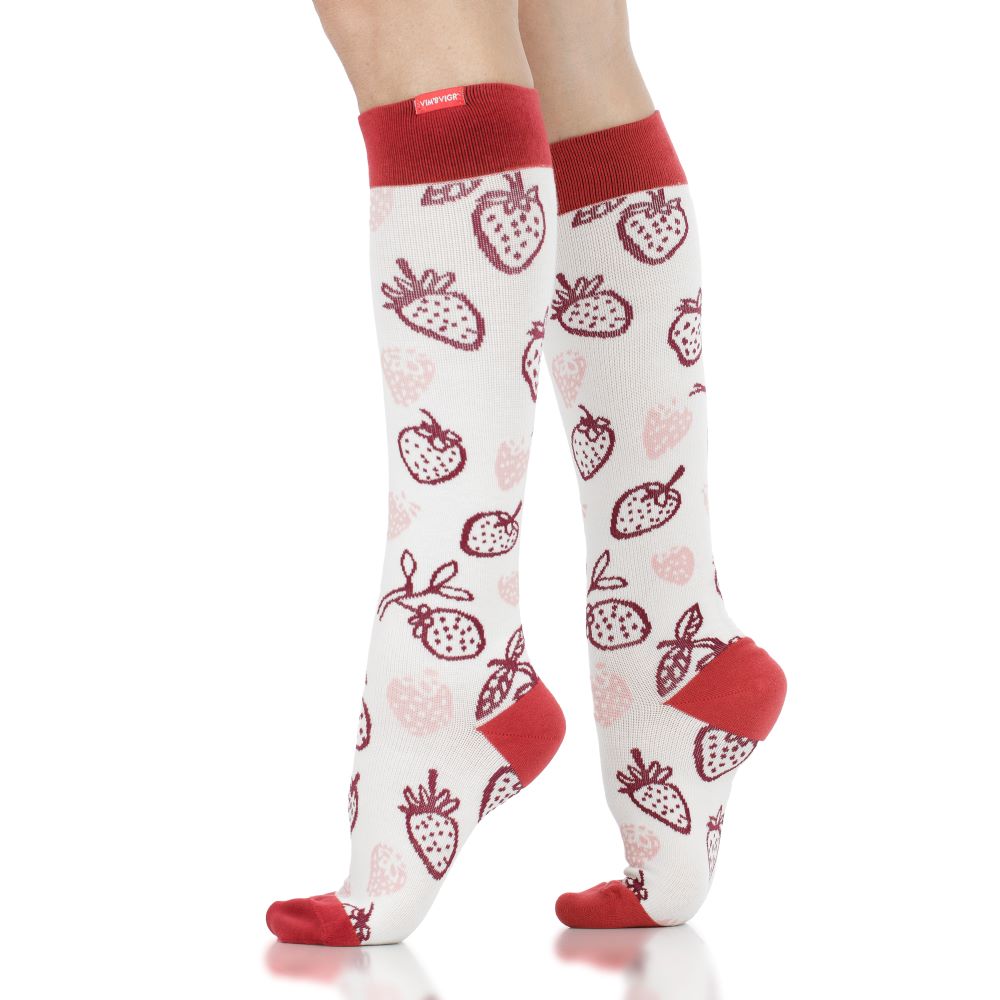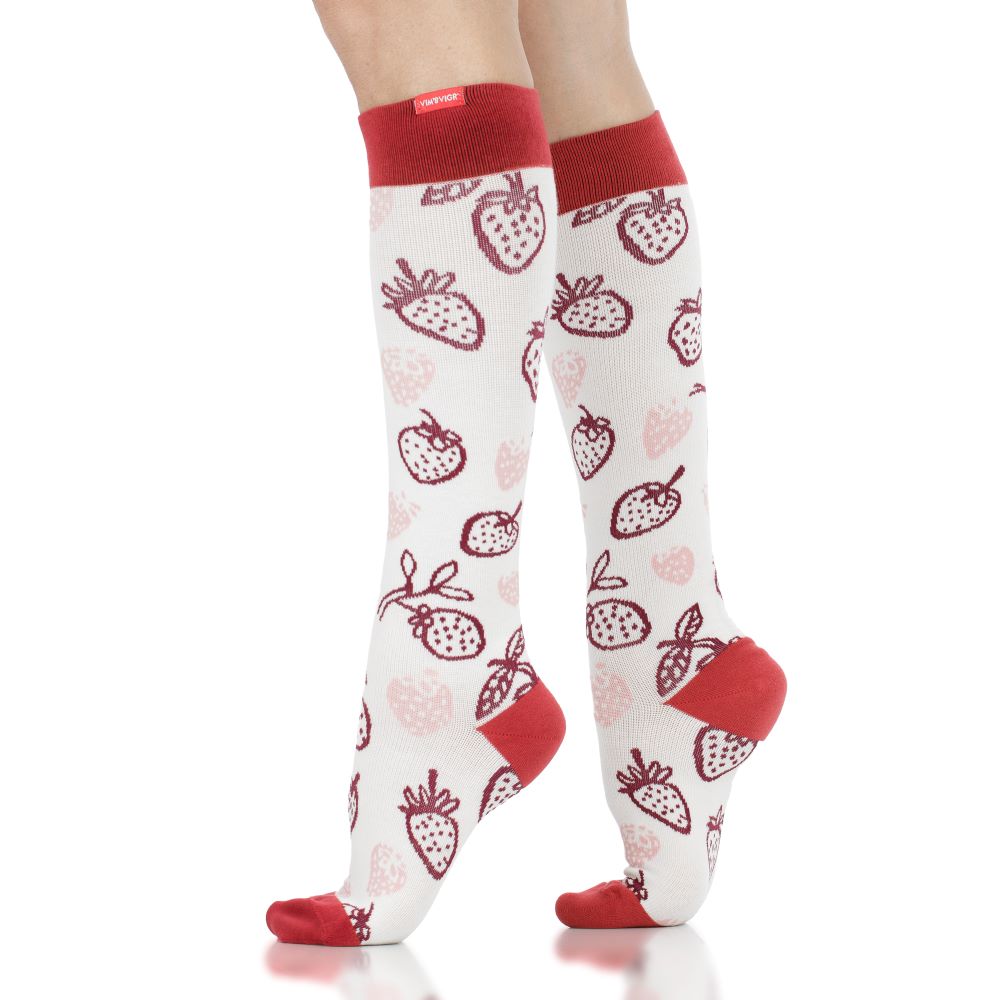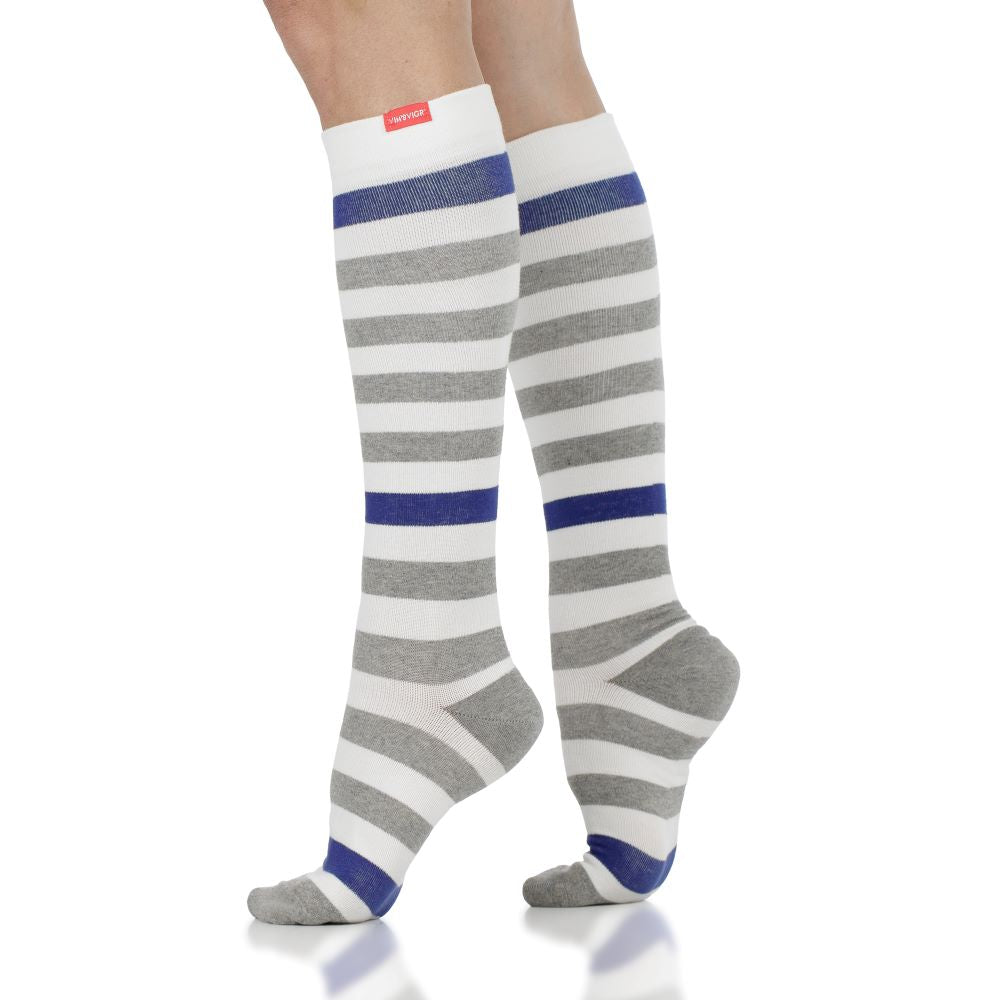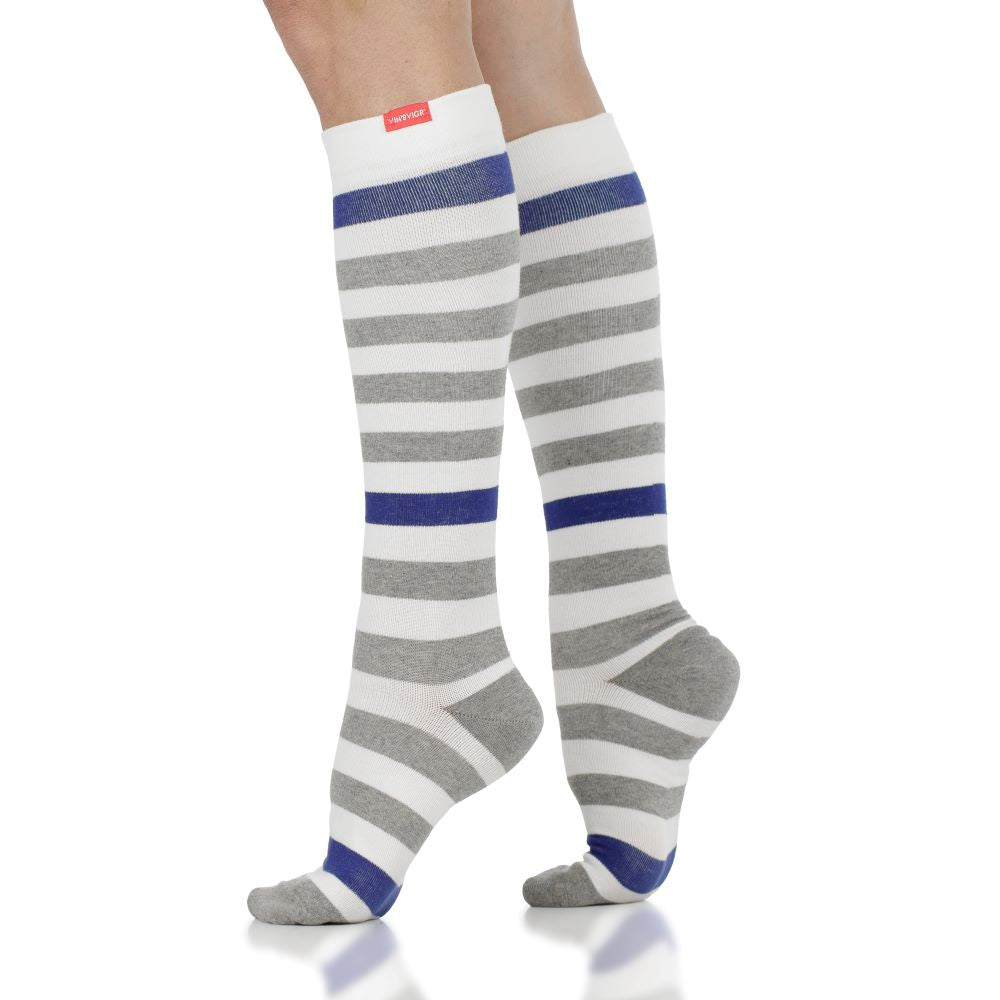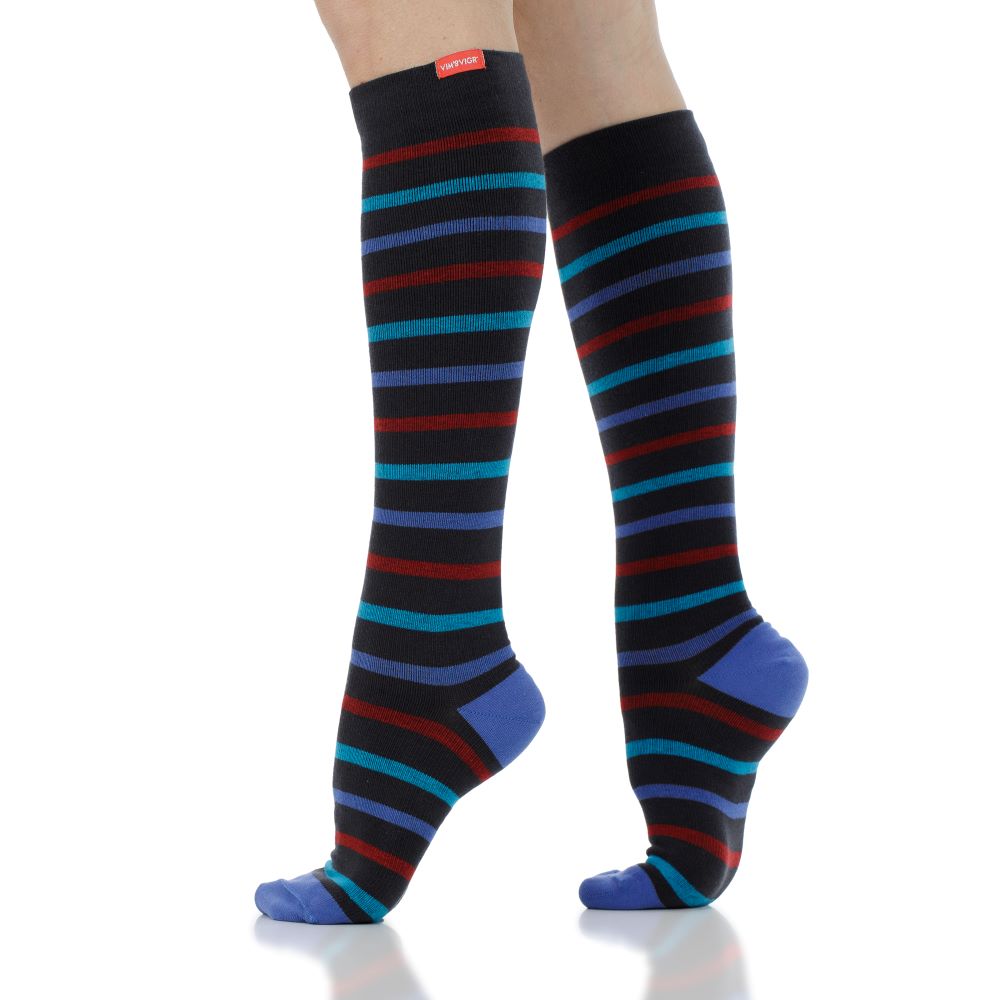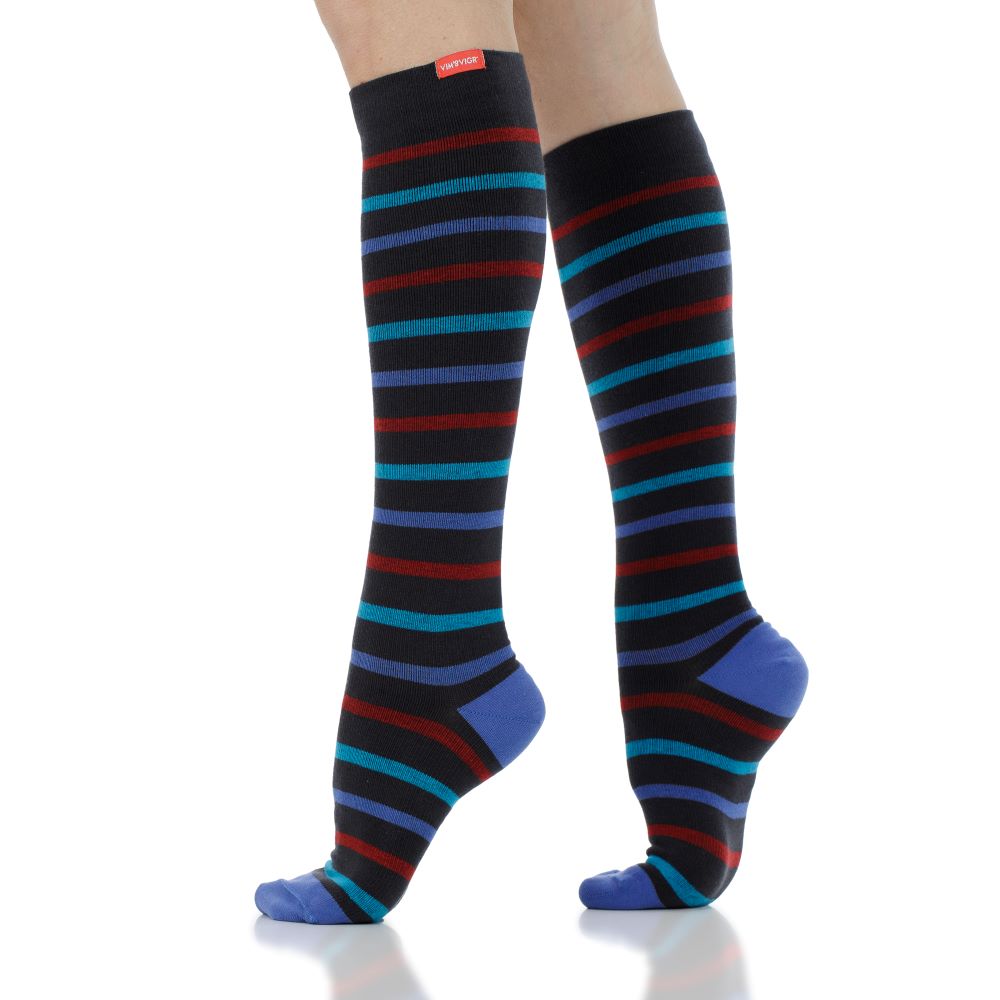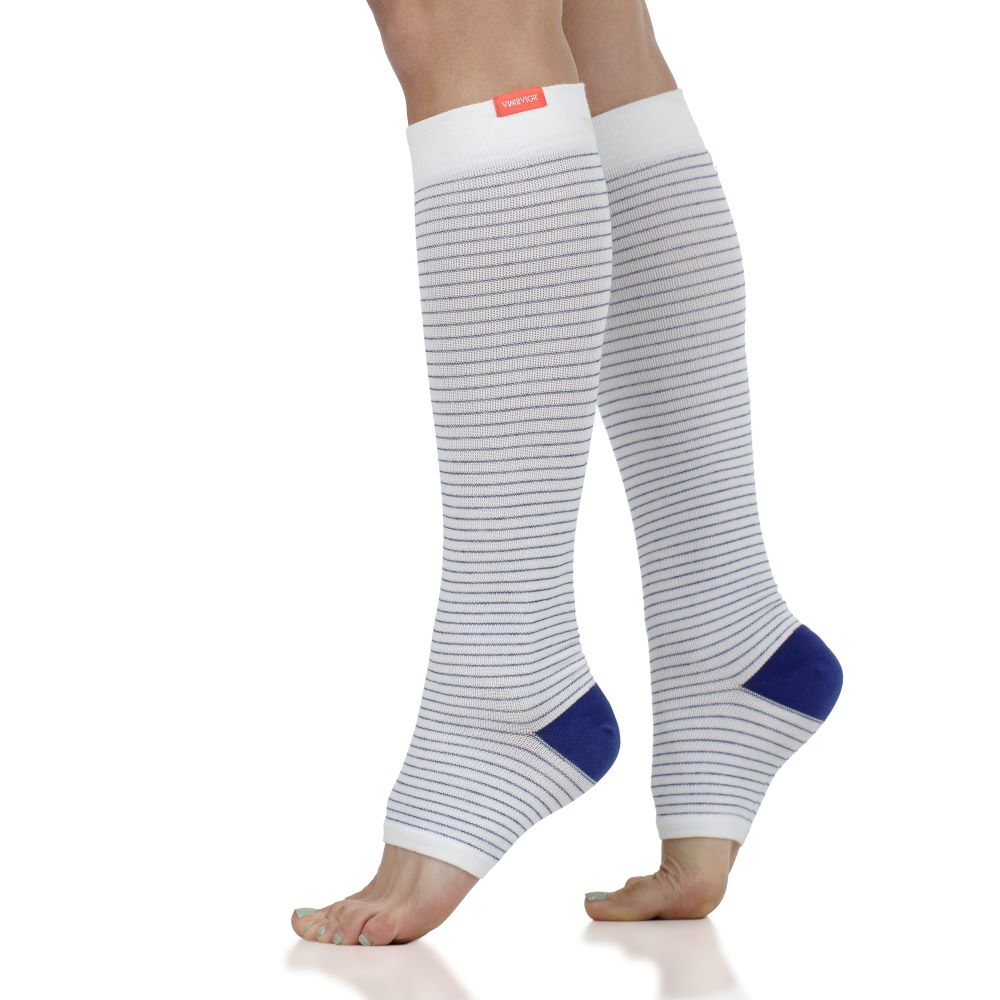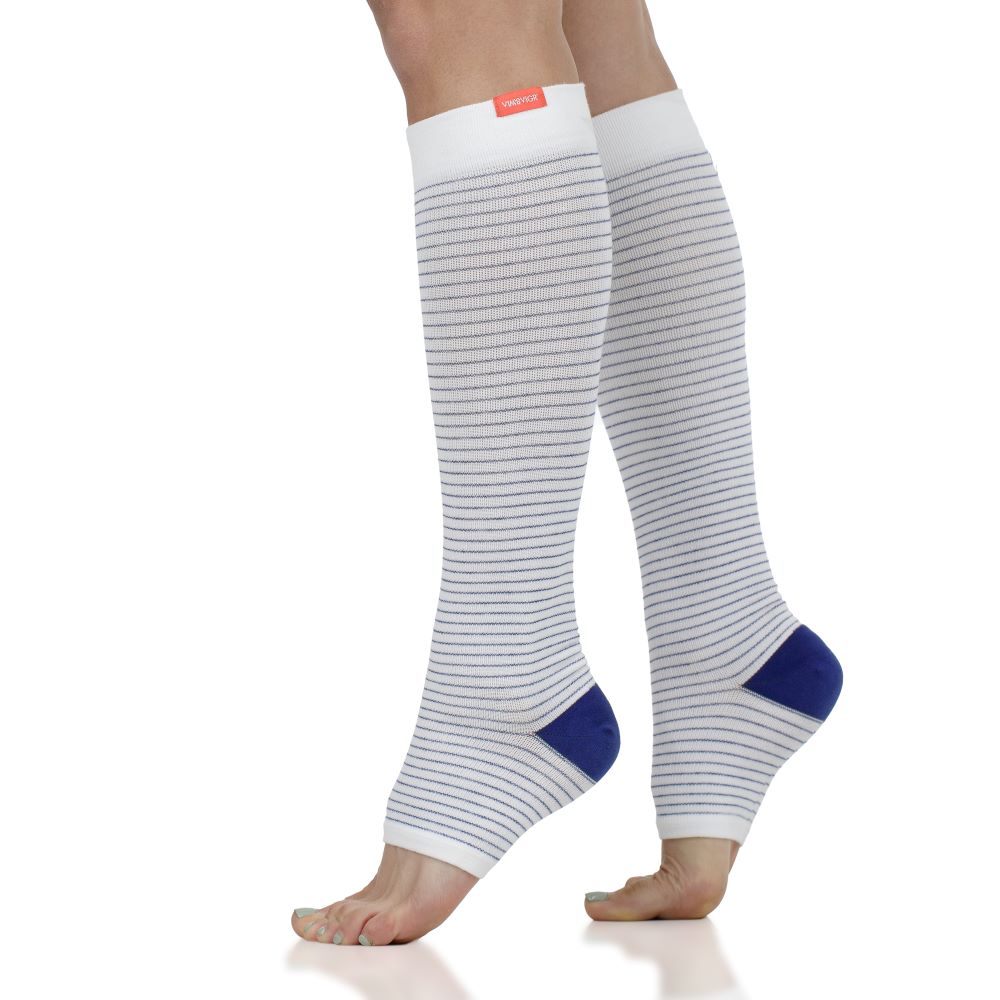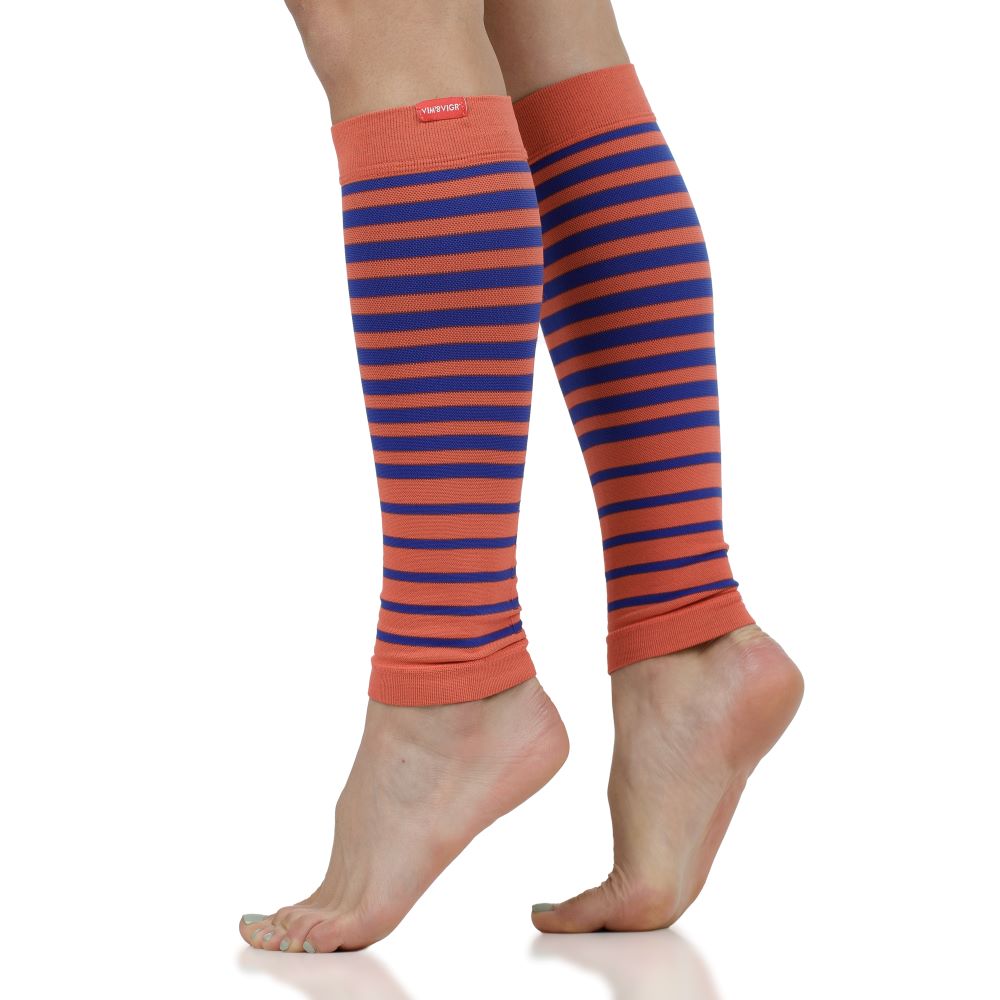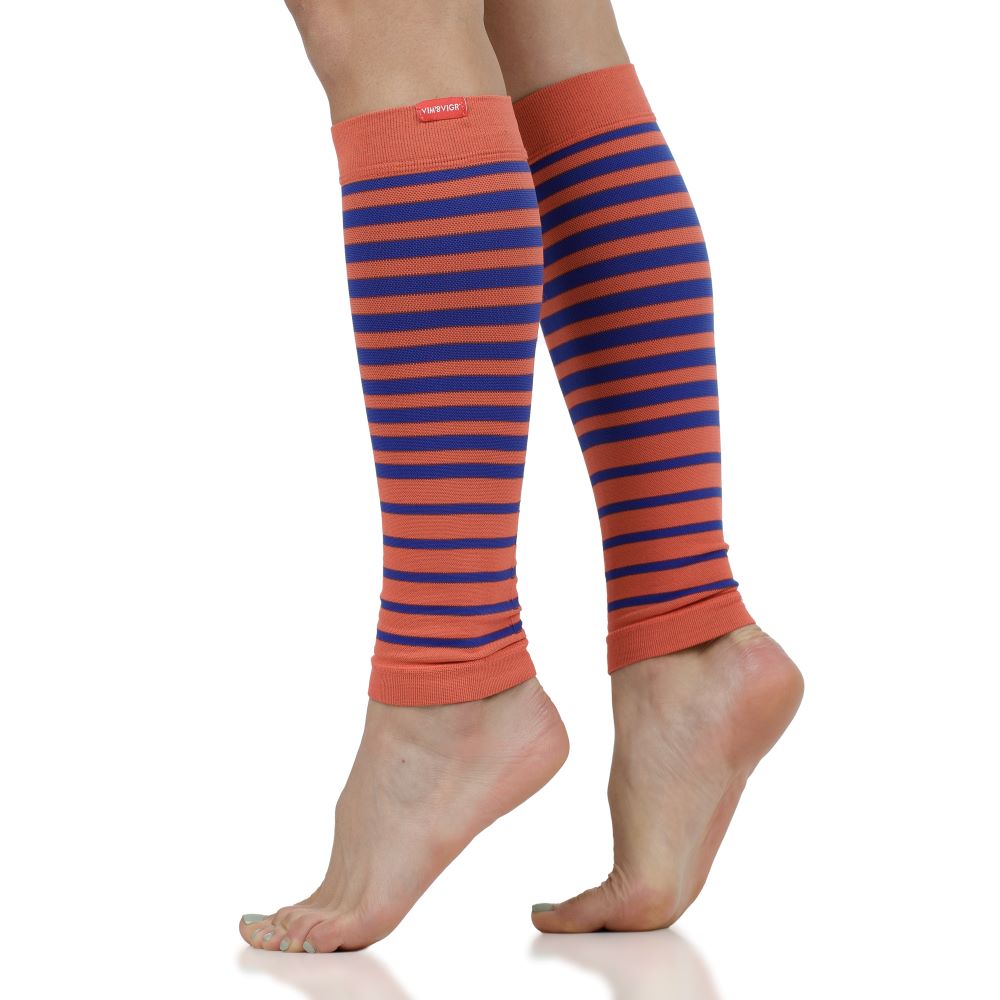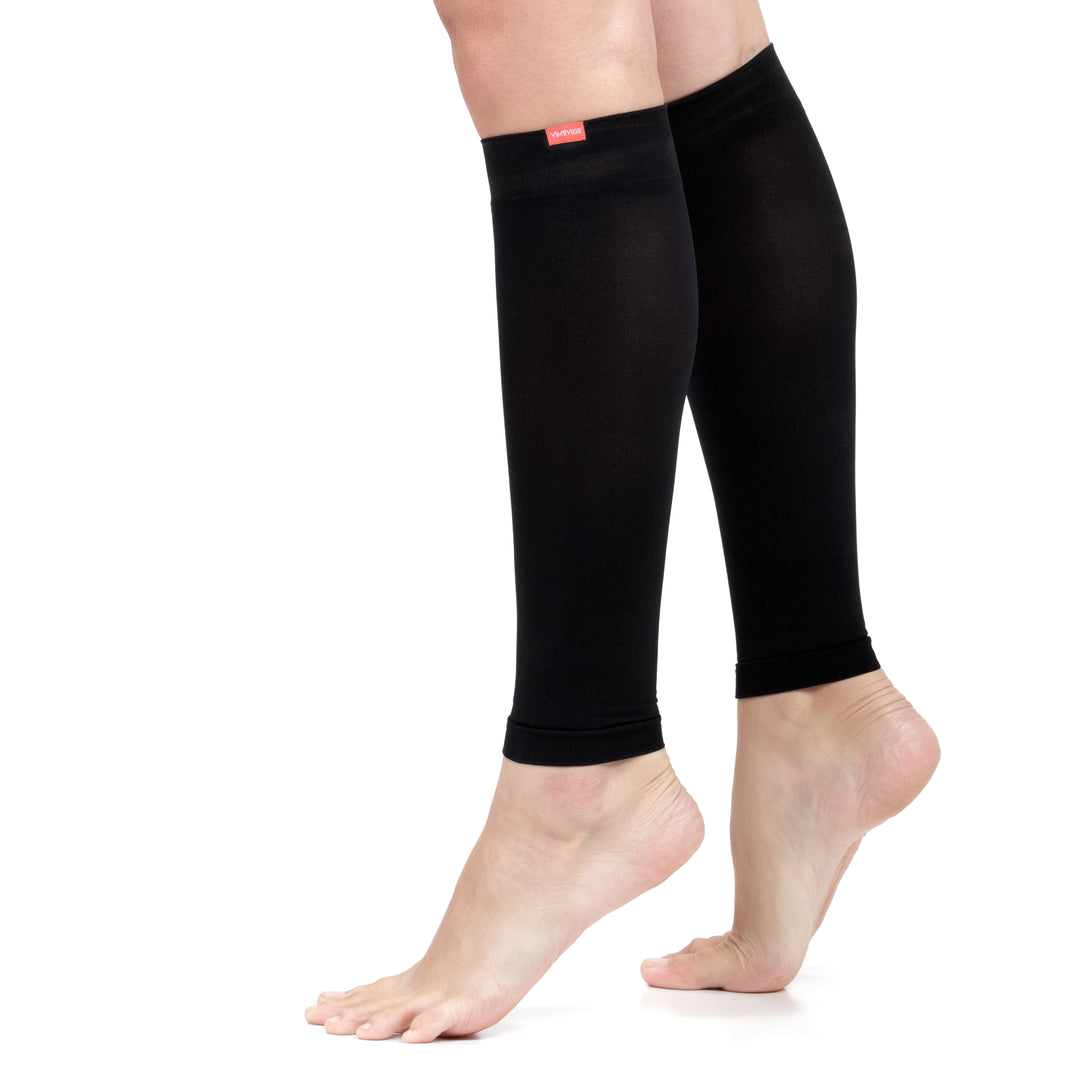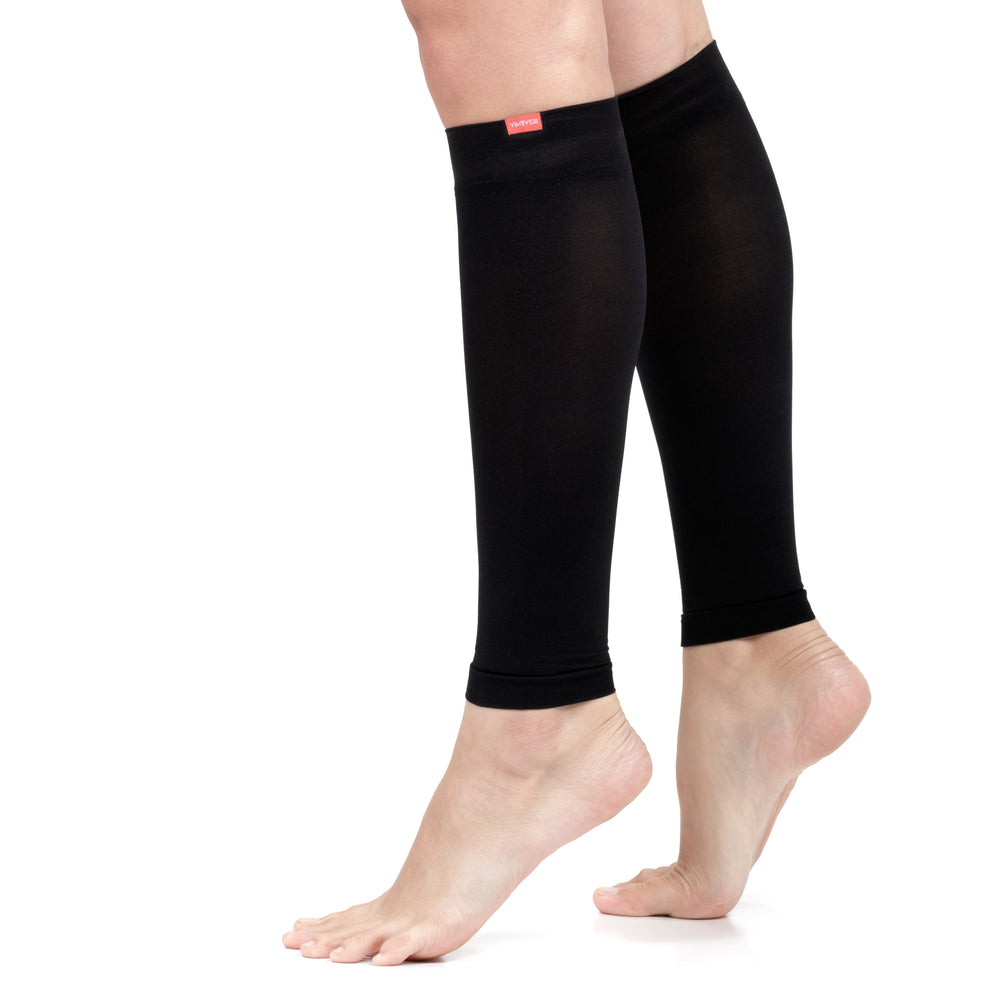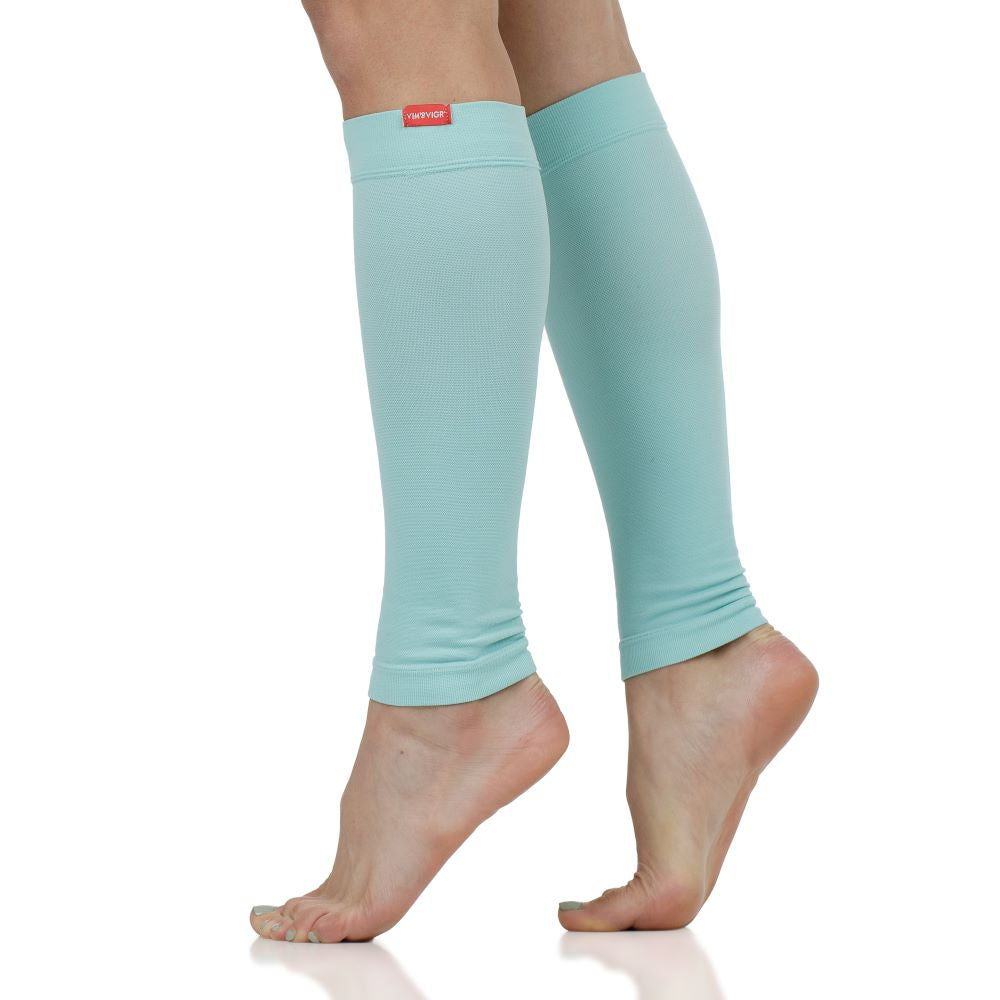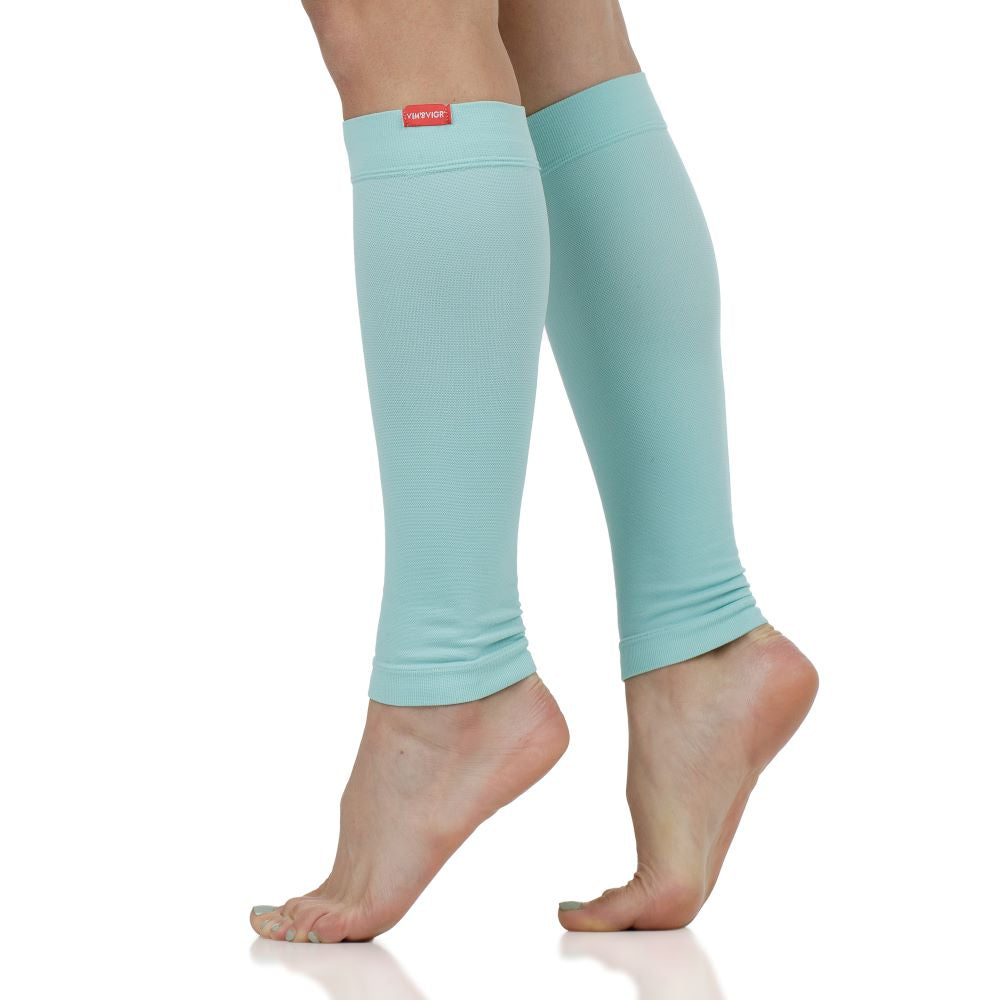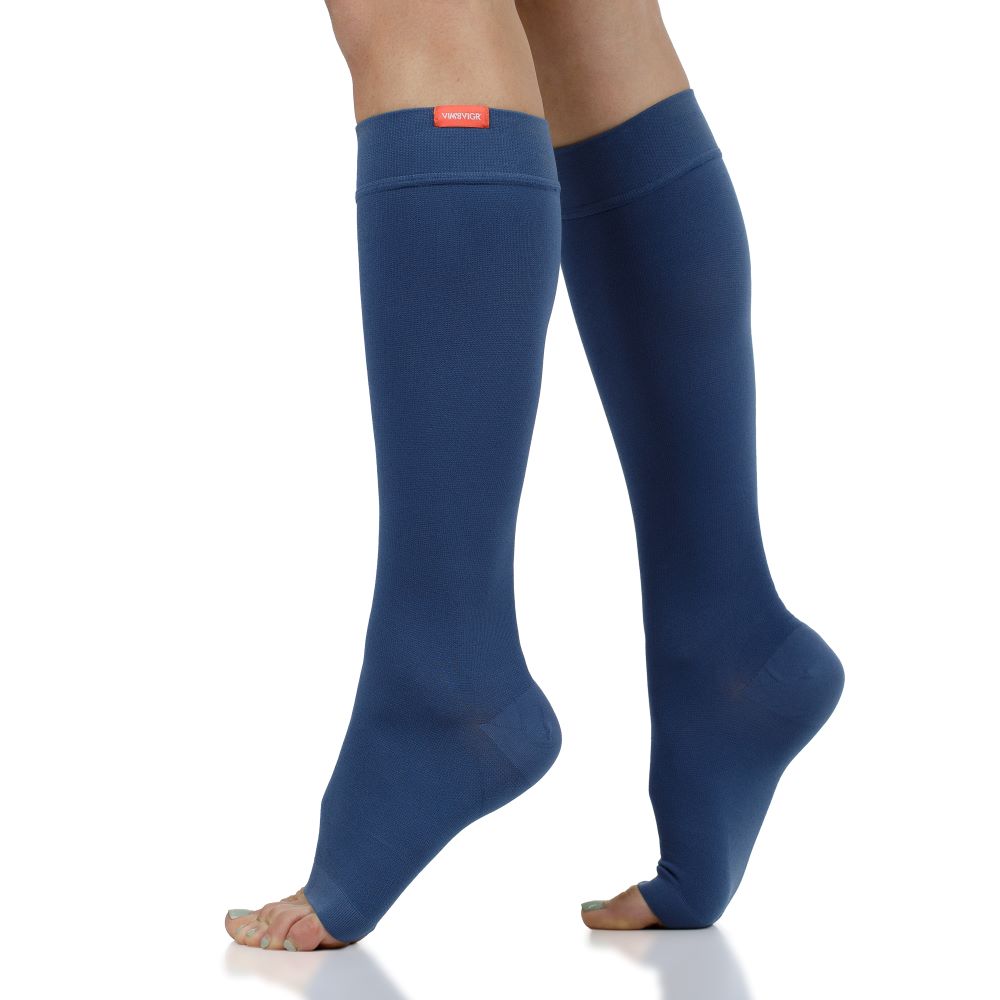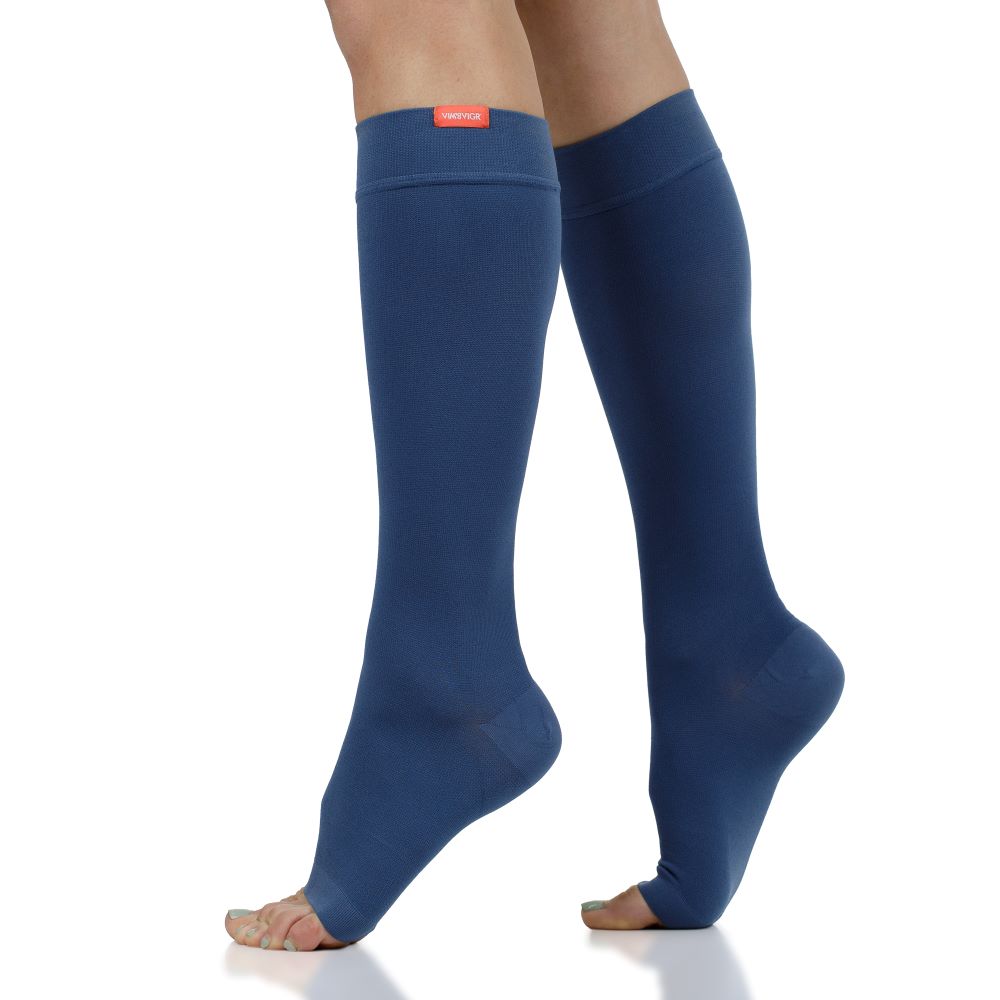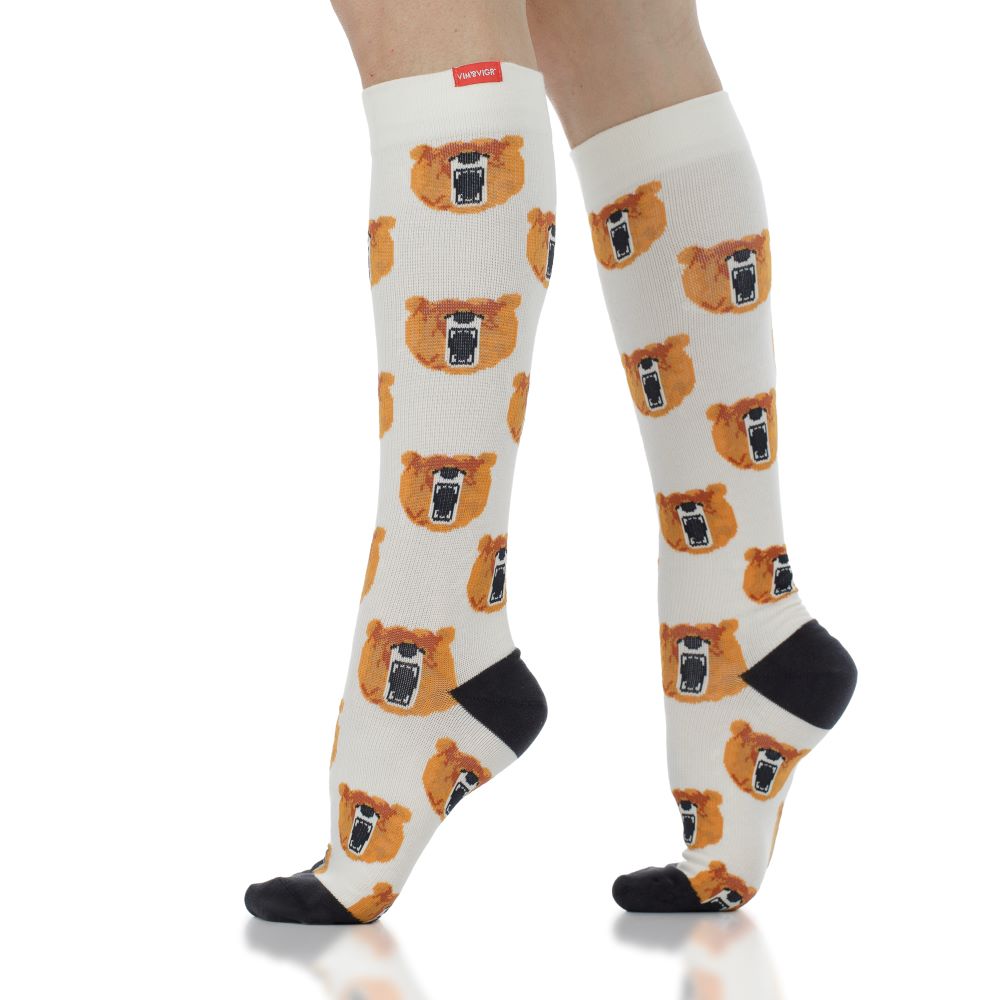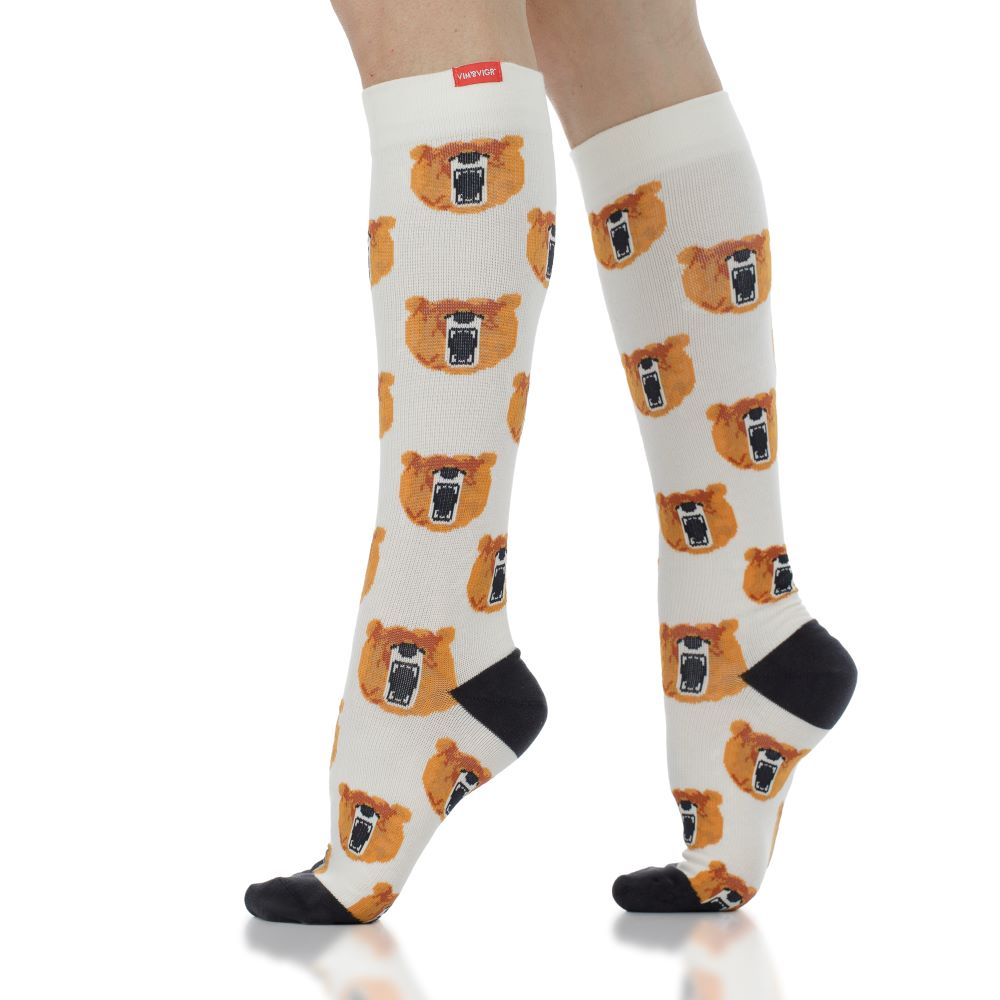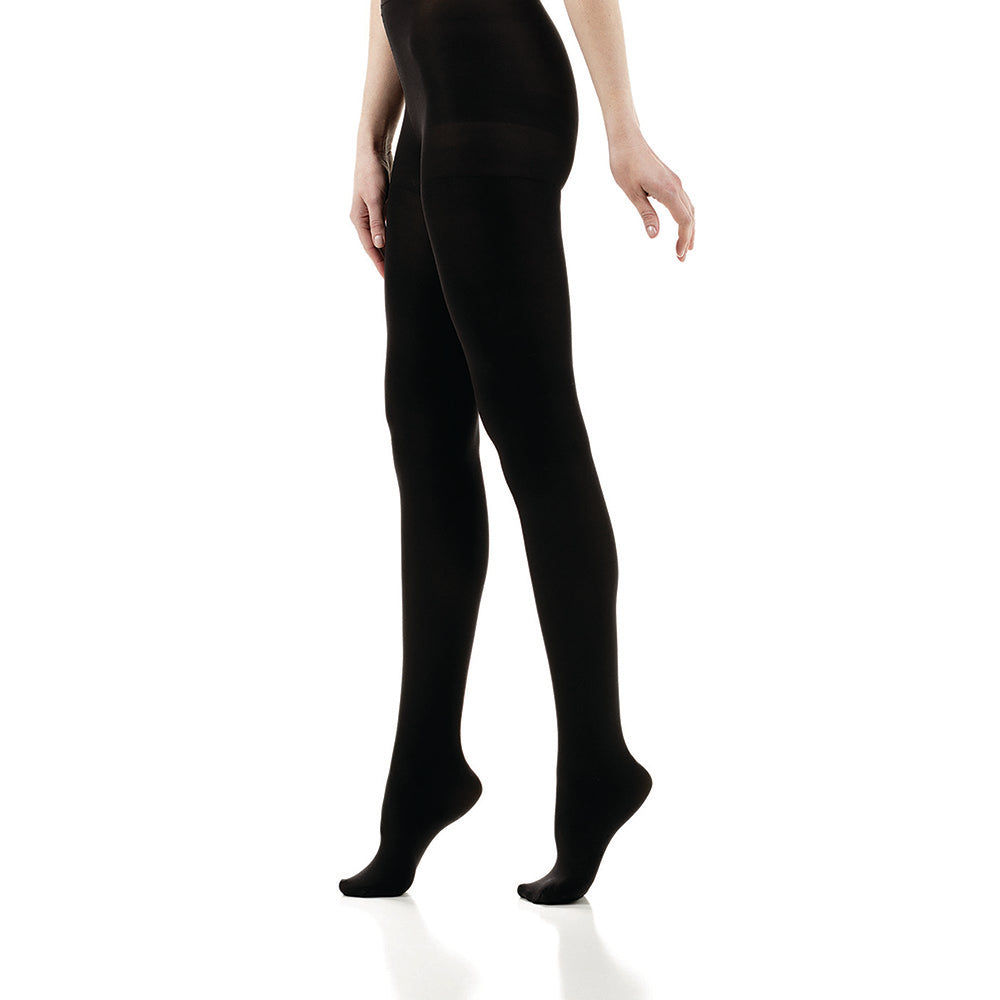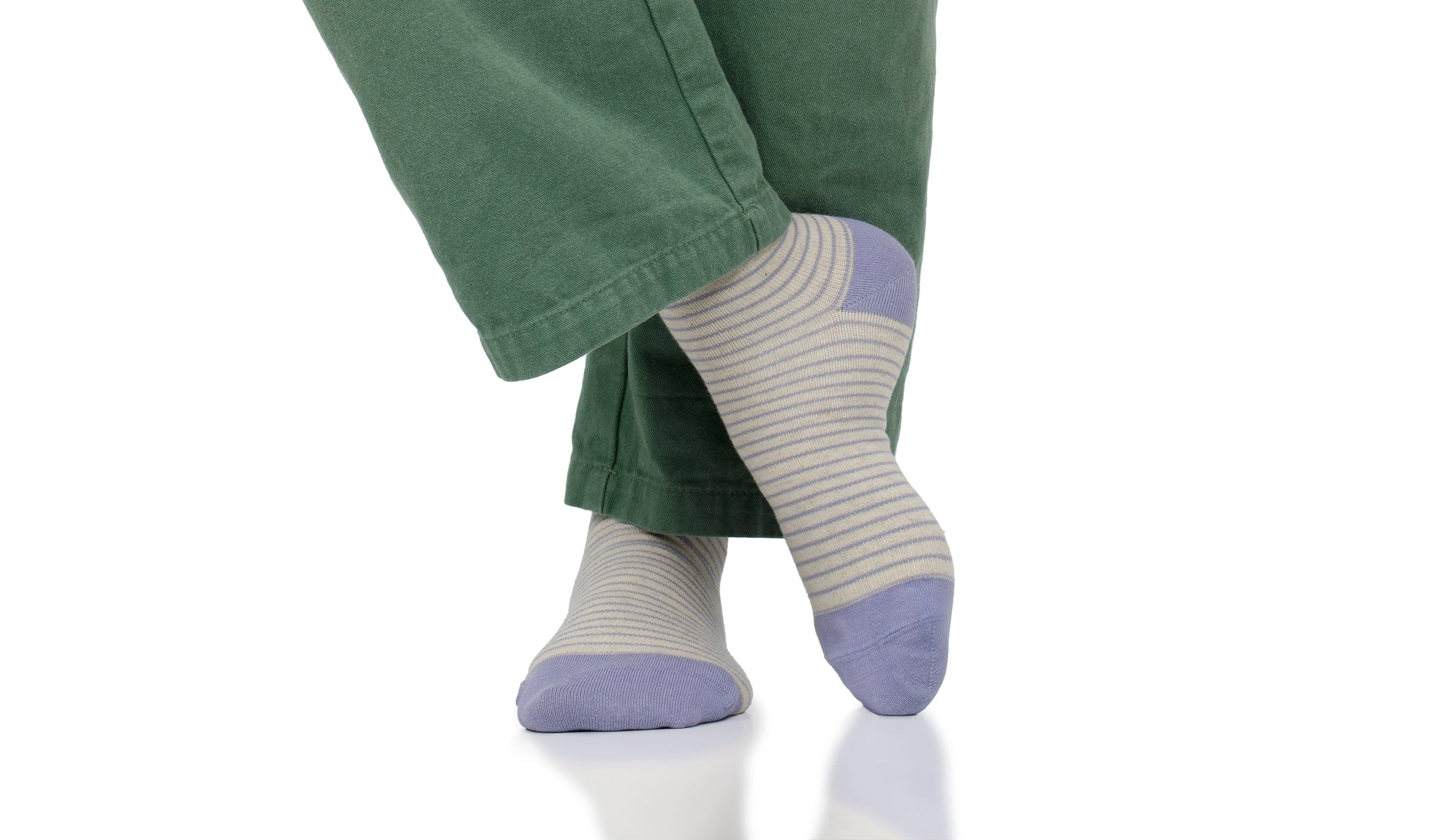
Compression Socks for Men - Improved Circulation & Recovery
Written By Alecsa Stewart
Scientifically Reviewed by Daniel Chantigian
If you work in a profession where you stand or walk all day, you might be one of the many people that have tired, heavy, and swollen legs by the end of your shift. Sitting all day in an office can actually cause this too. So, how can you fix tired and heavy legs at home? Good news, compression socks can help. Scientific research has found that graduated compression socks can be a complete game changer by improving leg circulation, which can reduce swelling, pain, and inflammation. Graduated compression works by applying pressure most tightly at the ankle and then gradually loosening up the leg to improve blood flow out of the legs. To reduce leg swelling and heaviness, compression socks are worn by athletes, construction workers, doctors, and everyone in between.
With Vim & Vigr’s compression socks for men, you get all the benefits of graduated compression therapy to help you feel comfortable all day. Our compression gear is available in four different, comfortable fabrics, three compression levels (mmHg), and in six different sizes. Whether you’re at work or working out, these knee-high men's compression socks can improve your performance and help you feel great all day.
Why Wear Compression Socks for Men?
When you wear compression socks, you give your circulatory system a boost. This reduces the risk of blood flow problems in your lower legs while providing you with additional physical benefits. Graduated compression in particular means that your socks are tighter at your ankles, then gradually loosen towards the knees. One medical report found that compression garments can stimulate circulation to boost blood flow out of the legs, which can reduce your risk of getting blood clots or deep vein thrombosis.
Graduated compression socks also offer support to the lower leg muscles, reducing the impact of landing on hard surfaces when walking or playing sports. Through the circulatory boost they give your leg veins, they also energize the legs, reduce muscular fatigue, and can help you recover quicker in between workouts, according to scientific research.
The Benefits of Men’s Compression Socks
From comfort to circulatory system health and muscular support, our Vim & Vigr compression socks for men provide a host of physical benefits. Here are the top ones.
All-Day Comfort and Support at Work
If you sit or stand for long periods of time, your lower legs can become swollen and sore. Also, because of gravity you can suffer from blood pooling around your ankles. This can lead to blood clots or other complications. For office workers, wearing compression socks prevents legs from getting painfully swollen or numb, which happens because compression socks for men support blood flow out of the lower legs and back to the rest of the body.
Those who stand a lot during work shifts, e.g. nurses, teachers, construction workers, or doctors, have a similar problem when it comes to fluid circulation out of the legs. Thankfully, graduated compression socks reduce the pressure on the lower legs, improve circulation, and offer support to the calf muscles and shins. Not only does wearing compression socks help your legs feel better, but it also reduces the risk of muscular pain as well.
Enhanced Performance and Faster Recovery
Because compression garments improve circulation, they may also help deliver oxygen and nutrients to the muscles quicker and more efficiently. Sports science research has shown that wearing compression socks or stockings after working out can reduce the time it takes to recover, as well as reduce pain from muscle soreness. Moreover, the support that graduated compression socks provide to the joints and muscles might help reduce the likelihood of an injury. Finally, by boosting local circulation and massaging the calves, compression socks can help delay the onset of DOMS (delayed onset muscle soreness) and muscle fatigue. For longer races or matches, this can make a positive difference in performance.
Preventing Sports-Related Injuries
Shin splints and Achilles tendinopathy are two of the most common running injuries. Wearing compression socks protects the lower legs, supporting the tendons and muscles and improving peripheral circulation. This can help reduce the impact of micro-vibrations on the muscles when running, reducing the risk of developing shin splints. Further, one study found that compression socks may help with balance when you walk, which could reduce your risk of injury. Compression socks are also often recommended to runners recovering from these injuries, where added support to the joints is needed.
Prevent Swelling and Discomfort While Traveling
Have you heard of economy class syndrome? When traveling on long-haul flights, there is an increased risk of peripheral circulation problems - especially blood clots or deep vein thrombosis. Of course, any scenario where you spend a long time sitting without moving your legs can lead to this, e.g. when driving, on a train, or even in business class.
Medical research has found that compression socks reduce your risk of peripheral circulation problems when traveling. Further, to prevent blood from pooling around the ankles and forming a blood clot, it is recommended that travelers get up regularly and move around, and wearing compression socks while doing this may enhance benefits. You can even do some gentle stretches and exercises at your seat to keep the blood flowing through your lower legs. Additionally, our Vim & Vigr graduated compression socks improve peripheral circulation while reducing the risk of all these issues.
Support for Varicose Veins and Vascular Health
If you suffer from circulatory conditions like varicose veins, venous insufficiency, or other issues, you may benefit from wearing compression stockings or socks. They not only improve circulation, which can reduce the symptoms you experience. It also provides much-needed support to the lower leg blood vessels to help blood flow back to the heart. This can help improve overall circulatory health.
If you have a medical condition, be sure to consult your medical provider in case you are not a good fit for using compression socks.
Diabetic Health Support
Compression socks apply gentle therapeutic pressure to the lower legs, supporting blood flow and relieving pressure on the muscles and joints. This helps improve overall circulation, which might help people with diabetes have less foot and leg pain. It also may reduce the sensations of “pins and needles” that diabetes patients can experience. Moreover, the increase in blood flow helps reduce swelling and pain that often occur. Finally, compression socks have been found to be safe to use in people with diabetes and may help prevent blood clots, ulcers, and neuropathic pain.
Relief for Foot and Leg Pain
When blood pools in the lower legs, it causes swelling and pain that can become extremely uncomfortable. By wearing Vim & Vigr’s graduated compression socks for men, you keep the blood moving in the lower leg to prevent the negative effects of fluid and blood pooling around the ankles.
Compression socks also soothe aching muscles after working out, walking, or a long day on your feet. The massage-like therapeutic pressure they apply to the legs, coupled with the reduction in leg swelling, can help your legs feel much better!
Support for Post-Surgery Recovery
Often, people recovering from surgery have reduced mobility, having to spend time lying down or sitting for long periods of time. To prevent circulatory problems, doctors often prescribe compression socks that will boost blood flow and reduce the risk of swelling and discomfort. In fact, medical research recommends that you use graduated compression socks after surgery to prevent deep vein thrombosis or other circulation-related complications.
Enhanced Comfort in Work Boots and Heavy Footwear
You can also benefit from compression socks when you wear heavy footwear, such as work boots. Vim & Vigr compression socks are soft and comfortable, which reduces the discomfort of a steel-toe cap boot. Our graduated compression socks for men can prevent blisters and chafing thanks to the tight grip they have on the foot to reduce friction against the boots. And they improve peripheral circulation to prevent your feet from swelling when you spend a long time in your work footwear.
How to Choose the Best Compression Socks for Men
Choosing your best compression socks is easy. Follow our step-by-step guide:
Consider the level of pressure you need
Most first-time users of compression socks start with the casual 15-20 mmHg of compression, which is suitable for boosting circulation and giving you the benefits for all the scenarios we mentioned above. This is gentle compression that improves your comfort levels and offers decent support to the muscles and joints. You can increase the therapeutic pressure to 20-30 mmHg if desired, or consult with your doctor to see if you need medical grade prescription-only 30-40 mmHg socks.
Consider the fabric
We offer compression socks in various materials to suit the activity levels and environments you’ll be wearing them in. Cotton is a great, versatile fabric for all-day wear, while merino wool is excellent for thermoregulation in either cold or hot weather. If you wear your socks to exercise, we recommend our nylon or moisture-wick nylon socks. And, if you want to make sure you won’t feel a seam, then go for the choice nylon collection.
Get the size right
Next, the size: you need your socks to feel tight so they boost your circulation, but also comfortable enough to allow you full range of motion. Follow our sizing guide here and our instructions for putting and removing socks here to get it right and feel good in your pair.
How to Wear Men’s Compression Stockings
The reason Vim & Vigr men’s compression socks are a great choice is that they’re not only functional, effective, and comfortable - they are also extremely stylish, bringing a pop of color to your outfits and allowing you to experience good-looking compression in all walks of life. Our tips for wearing your socks for maximum impact:
-
Always ensure you put them on correctly and that there are no folds or kinks in the material.
-
Wear your socks for increasing periods of time, as you get used to them (start with 2-3 hours for your first time, then gradually increase).
-
Wash your socks after every use with regular detergent (no bleach!) and let them air dry.
-
Rotate your socks for different colors and designs every day.
-
Choose compression sleeves or open toe socks if you need something different.
-
Wear your socks before a workout or run if you want a “warm-up” for your muscles, or afterwards for recovery.
-
For added support during your game, walk, run, or other physical activity, wear merino wool or moisture-wick nylon compression socks that improve comfort levels and keep feet dry.
Remember, always consult with your doctor if you have any questions or concerns, especially if you have a medical condition related to your heart or circulatory system.
References
Charles, T., Mackintosh, D., Healy, B., Perrin, K., Weatherall, M., & Beasley, R. (2011). Merino wool graduated compression stocking increases lower limb venous blood flow: a randomized controlled trial. Advances in therapy, 28(3), 227–237. Read it here.
Guedes, P. M., Saldanha, N. A., Matos, P. M., Carvalho, F. S., Veiga, G., & Norton, P. (2020). Occupational leg edema-use of compression stockings. Porto biomedical journal, 5(6), e093. Read it here.
Blazek, C., Amsler, F., Blaettler, W., Keo, H. H., Baumgartner, I., & Willenberg, T. (2013). Compression hosiery for occupational leg symptoms and leg volume: a randomized crossover trial in a cohort of hairdressers. Phlebology, 28(5), 239–247. Read it here.
Sachdeva, A., Dalton, M., & Lees, T. (2018). Graduated compression stockings for prevention of deep vein thrombosis. The Cochrane database of systematic reviews, 11(11), CD001484. Read it here.
Moñux, G., Serna-Soto, M., Plá-Sanchez, F., Zamorano-León, J. J., Segura, A., Rial, R., Freixer, G., Zekri-Nechar, K., Hugo-Martínez, C., Serrano, J., & López-Farré, A. (2021). Compression stockings attenuate the expression of proteins associated with vascular damage in human varicose veins. Journal of vascular surgery. Venous and lymphatic disorders, 9(2), 428–434. Read it here.
Mota, G. R., Simim, M. A. M., Dos Santos, I. A., Sasaki, J. E., & Marocolo, M. (2020). Effects of Wearing Compression Stockings on Exercise Performance and Associated Indicators: A Systematic Review. Open access journal of sports medicine, 11, 29–42. Read it here.
Carvalho, C. A., Lopes Pinto, R., Guerreiro Godoy, M.deF., & Pereira de Godoy, J. M. (2015). Reduction of Pain and Edema of the Legs by Walking Wearing Elastic Stockings. International journal of vascular medicine, 2015, 648074. Read it here.
Sun, Y., Munro, B., & Zehr, E. P. (2021). Compression socks enhance sensory feedback to improve standing balance reactions and reflex control of walking. BMC sports science, medicine & rehabilitation, 13(1), 61. Read it here.
Clarke, M. J., Broderick, C., Hopewell, S., Juszczak, E., & Eisinga, A. (2021). Compression stockings for preventing deep vein thrombosis in airline passengers. The Cochrane database of systematic reviews, 4(4), CD004002. Read it here.
Rother, U., Grussler, A., Griesbach, C., Almasi-Sperling, V., Lang, W., & Meyer, A. (2020). Safety of medical compression stockings in patients with diabetes mellitus or peripheral arterial disease. BMJ open diabetes research & care, 8(1), e001316. Read it here.













